



Melbourne why VIDyA bAlAn loVes shAhID KApoor AnD prIyAnKA ChoprA wIll be guests At the InDIAn FIlM FestIVAl oF Melbourne In June loV FREE Vol.12 No. 7 • MAY 2012 • melb@indianlink.com.au • www.indianlink.com.au MELBOURNE Sydney • Melbourne • Adelaide • Brisbane • Perth • Canberra PO Box 80, Chadstone Shopping Centre, Chadstone VIC 3148 • Ph: 03 9803 0200 • 1 8000 15 8 47 • Fax: 03 9803 0255

2 MAY 2012 www.indianlink.com.au
INDIAN LINK
PUBLISHER Pawan Luthra
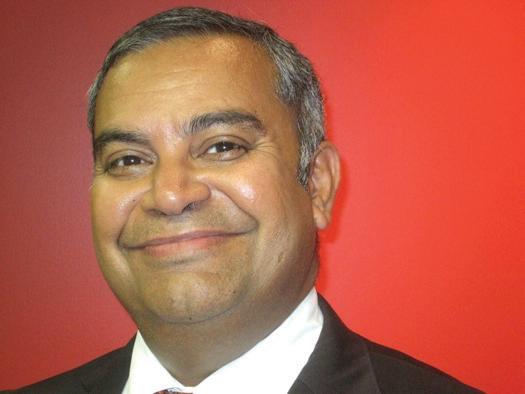
EDITOR
Rajni
Sheryl Dixit MELBOURNE
Preeti Jabbal
CONTRIBUTORS
Usha Ramanujam Arvind, Sujith Krishnan, Malavika Santhebennur, Sydney Srinivas, Asha Chand, Chitra Sudarshan, Noel G deSouza, Tim Blight, Petra O’Neill, Sudha Natarajan, Uttam Mukherjee, Shafeen Mustaq, Malli Iyer, Rani Jhala, Geeta Khurana, Nancy Althea, Avijit Sarkar
ADVERTISING MANAGER
Ashish Chawla 0468 389 272
ADVERTISING ASSISTANT
Nitika Sondhi 02 9279 2004
DESIGN
Danielle Cairis
Indian Link is a fortnightly newspaper published in English. No material, including advertisements designed by Indian Link, maybe reproduced in part or in whole without the written consent of the editor. Opinions carried in Indian Link are those of the writers and not necessarily endorsed by Indian Link. All correspondence should be addressed to
Indian Link
Level 24/44 Market St, Sydney 2000 or GPO Box 108, Sydney 2001
Ph: 02 9279-2004 Fax: 02 9279-2005
Email: info@indianlink.com.au
www.indianlink.com.au
Removing LAFHA no laughing matter
PAWAN LUTHRA
While on one hand the government is keen to build its credentials promoting Australia as a good place to do business for Indian and other multinational companies, on the other hand, a grab for cash by removing the tax benefits related to Living Away From Home Allowance (LAHFA) as per the current budget, will be a serious detriment to Indian companies sending their top professionals to work in Australia.
In a global marketplace where countries are competing for top talent to enhance their local workforce skills and business opportunities, shutting this perk could be another shortsighted measure by the Gillard government. LAFHA is paid to overseas workers on a tax-free basis to allow them to meet their expenses and to an extent, compensate them for other charges (such as cost of children’s education even in the public school system) which they pay as overseas residents.
It is to be remembered that it was under Julia Gillard’s tenure as the Minister for Education that the
private college system was reviewed and effectively dismantled, which not only affected the future of a number of overseas students but also had an adverse impact on the export earning capabilities of the education sector. Enrolments have fallen, colleges have closed, students have faced and continue to face uncertainties, and a number of Indian businesses have closed down due to the slowdown in new student arrivals.
Indian IT companies such as Infosys, Wipro, TCS, HCL and other NASSCOM Australia members are active contributors to the Australian economy. With a combined workforce of over 10,000, these companies employ Indian IT workers to work on projects in Australia. By doing so, they are able to crossover Indian IT skills with their local Australian workforce, and allow for a high level of skills transfer. NASSCOM Australia member companies have currently invested upwards of $100m to set up more than 20 development centres in Australia; they have strong links with many universities in Australia to recruit students for global projects, run student internships programmes and have established scholarships.
All this is under scan now as these companies, which provide back up services to various Australian companies such as Telstra, Qantas, Westpac,

Commonwealth bank etc., scramble to make the employment opportunities here more exciting for their potential employees from India. Not being able to package part of their salary package under LAFHA and still bearing the full costs of public school education for their children or their Medicare costs, makes Australia a less attractive destination for these employees whose skill sets are in demand globally.
As an Indian Australian community, we lose out on a new set of educated and ethical future migrants; as Australians, we miss out on attracting top talent down under.
The Minister for Immigration and Citizenship, Chris Bowen MP, has just returned from India where he reaffirmed the importance Australia places on its longstanding bilateral relationship with India.
But it seems that his colleagues in Canberra are not of the same mind as they implement new taxes on a large number of Indian workers on 457 visas, by taking away their LAFHA benefits.
Whether this effects the Australian economy in a similar way as the changes to the education policy, only time will tell.
But one suspects, these increased costs will be passed on to the Australian clients by their Indian IT suppliers, which then will be paid by the local consumer.
MAY 2012 3 INDIAN LINK EDITORIAL
Anand Luthra ASSISTANT EDITOR

4 MAY 2012 www.indianlink.com.au
Thousands attend HSV cultural centre inauguration
The Shri Shiva Vishnu temple in Carrum Downs is the largest Hindu temple in the southern hemisphere, consecrated in 1994. The temple has been made possible due to the vision and planning by the Hindu Society of Victoria (HSV), a group established in 1984, which worked toward to building a centre for Hinduism in Melbourne. So
from 1984 until 1994 after much planning, funding, and building, the dream of a Hindu temple was realised.


Now in 2012, stage 2 of the plan has also been realised. The Hindu Cultural and Heritage Centre situated adjacent to the temple was initiated in 2004, has now been officially opened. The total cost of the project was $8.4m, and was


made possible with donations from devotees, backing from sponsors, and with the financial help of the Victorian Government and the ‘Cultural Precincts and Community Infrastructure Fund’.
The opening ceremony at the HSV Cultural and heritage centre was attended by thousands and included the Honourable Nicholas Kotsiras, Minister of Cultural
Affairs and Citizenship, who officially unveiled the ground stone plaque and opened the venue. Other official ceremonial activities included hoisting of the Australian flag, and a flag of the Om symbol. Bharatanatyam dancers performed a welcome dance, the pushpanjali. Lamps were lit by many dignitaries and community leaders. The president of the HSV officially welcomed all, and a welcome ceremony in the form of a didgeridoo presentation was performed on behalf of the Australian aboriginal community and traditional owners of the land. This welcome ceremony invited all present to acknowledge a need for respect for both the country and the custodians who have taken care of the country where we live. This recognition was especially significant for this particular site in Carrum Downs, because when purchased, the site was considered virgin land; this being a specific requirement for temples that are dedicated to Shiva.
The festivities continued
through the day and into the rainy May evening. Dances from Rajasthan, Orissa, Kerala and of course, Bollywood highlighted the inclusiveness of the temple community and facilities, which will now be available to all. And the finale, the fireworks, marked just a beginning for the Cultural and Heritage Centre, with more developments surely to come.
The HSV Cultural Centre will serve the prayer and spiritual needs of the Hindu community and extended community of Melbourne, as well as offering facilities for community and cultural events. Facilities at the centre include a multimedia library that will provide references in Hindu culture and philosophy, classic art and classic language. A Museum will exhibit artefacts, paintings, photos and other related multimedia, in addition to educational facilities and venue space for seminars or community functions. The main hall is the largest venue, which seats up to 700 people. The dining hall can seat 300 people at a time, and also caters for events, thanks to its new industrial kitchen. These facilities and spaces will be used throughout the year for the benefit of members and devotees. It will be used for weddings, educational activities, yoga sessions, cultural activities and to celebrate festivals which are an integral part of Hindu culture. The extended community can contact the HSV with their particular interest in using the
INDIAN LINK CO mmun ITyS CE n E
Sentiments in silver


Images of India translate into this talented jewellery artist’s designs, based on her unique experiences of the country
She is an artist who appreciates the environment, and uses relevant imagery and material to create contemporary pieces of jewellery. Meet Marian Hosking renowned artist, dedicated academic and proud Australian. For Marian, making jewellery is a vehicle for her sentiments and memories, where the use of identical or similar elements becomes a metaphor. Her forte is rendering nature unto metal, mainly silver. Working primarily with the Australian environment, Marian claims that a part of her practice is diaristic in nature, drawing influences from her travels around the globe. Marian talks to Indian Link, describing the joys of exploring the fabrics, textiles and architecture of Northern India.
“Travelling and teaching in India has been a very stimulating visual and cultural experience. The diverse and rich culture especially the architecture and craft practices, have had a lasting impact on me,” she reveals.
“I was moved by the patterns, colours and textures of decorative
art in India,” says Marian, elaborating on her experiences in India. “I travelled to India in 2004 to teach at the National Institute of Design in Ahmedabad. I went back to Delhi in 2007 to be part of an exhibition that originated out of RMIT. On that trip, I travelled to tourist destinations like Agra, Udaipur and Jaipur. And I went back again recently to attend the Abhushan Jewellery Summit run by the World Craft Council. In each trip I was amazed at the diversity of people and the rich architecture of the buildings that I visited. I returned and made some small vessels as a mark of respect, and in response to the things that I experienced in India,” she added.
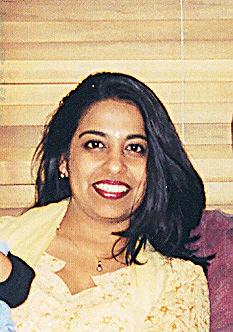
“My approach to jewellerymaking is very Australian; however when I travel around the world, some of my experiences seep into my work. After my trip to India I started using gems in my designs, and also beads that I bought back with me. I am happy to see that India has recently seen an upsurge in the making of contemporary jewellery designs that draw on the country’s tradition and heritage,” says Marian, airing her opinion on the making of Indian jewellery.
Marian has been a jeweller and craft educator for over forty years. She recalls the hippy popularity for Indian clothes and accessories in the 1970s, when traditional Indian clothes
were imported in vast quantities and were colourful and not very expensive. “In the past decade I have noticed an increase in the number of Australian designers and craftspeople who are travelling to India and either working very closely with artisans or buying homewares and fashion from companies established in India that specialise in quality goods utilising traditional craft techniques and materials. Obviously Indian artisans and craftspeople have skills and a decorative tradition which is greatly admired in Australia,” says Marian. She has also travelled, taught, studied and exhibited her work in Europe, the United States, Korea, Japan, China and India. Marian has won several awards and her work was exhibited at the Living Treasures: Masters of Australian Craft in 2007. She also won the National Contemporary Jewellery Award in the Precious Metal category in Griffith, NSW and was honoured by the Australian Council Fellowship in 2009/2010. Marian has held numerous exhibitions of her work around the world, and her creations are available in Gallery Funaki in Melbourne and the Galerie Ra in Amsterdam.
Marian was also among the four artists chosen to be a part of an upcoming artists in residence programme in Canberra titled ‘Talking Waters’. The programme
will promote and showcase Canberra’s distinct natural and cultural landscape leading up to the state’s centenary in 2013. Besides creating jewellery and heading the Department of Fine Arts in Monash University, Marian likes to spend time bushwalking and swimming. Art is hidden in Nature and she likes to spend a lot of time exploring the great outdoors. “It is easy for me as an artist, as there is so much out there in Nature that can inspire me. There is always something that will motivate me to continue making more jewellery,” she said in conclusion.

Working primarily with the Australian environment, Marian claims that a part of her practice is diaristic in nature, drawing influences from her travels around the globe.
I am happy to see that India has recently seen an upsurge in the making of contemporary jewellery designs that draw on the country’s tradition and heritage
6 MAY 2012 NATIONAL EDITION ARTS
PREETI JABBAL
Clockwise: Marian on the mountainside Silver vessel Necklace







MAY 2012 7 INDIAN LINK Established Finance Broking (Mortgage Choice) Enquiries to Rakesh Mittal at 0400 614 317. Marketing area: Bayswater, Knoxfield, Rowville, Scoresby, Wantirna, Lysterfield.
Unique opportunity to be part of a well recognised and respected brand. Established business with good loan book, client database and sizeable trail income to get you started. Full training, support and leads provided. Relationship building skills essential. Your Bank will not tell you that their competitor has a better package than them...we will! Suite 7a, 82 Keilor Rd, Essendon VIC 3040 email: enquiries@monopolyfinance.com.au Australian Credit Licence No: 387784 “you could save thousands of $ but you need to pick the right Bank / Lender, let us help you.” Call 1300 763 630 now Our company has been assisting people save money for many years! for a no obligation assessment
Franchise for Sale
The making of a mother
Although many cultures have defined the essence of motherhood, Indian history, tradition and even myth have revered and respected her many avatars
BY USHA ARVIND
Unrivalled and unsurpassed by any other human emotion, the maternal instinct is a manifestation of love in it purest form. A mother’s capacity to give, defies quantification. Despite her apparent physical shortcomings, she is the source of life, the nucleus of any family, the central pillar of support, the binding force holding communities together. As a logical derivative, the country of our origin is called the ‘motherland’, the dialect we communicate in, is known as the ‘mother tongue’. Terms such as ‘mother’ earth, ‘mother’ nature, alma ‘mater’ have all become common parlance, and remain so to this day.
The Mother figure is deified in many societies around the world. For Indians, she is the embodiment of selfless sacrifice, compassion and charity (Devi, Stree, Mata, Maa, Amma, Ardhangni, Dharmapatni), she is also Shakti the source of benign power.
As former President Dr S Radhakrishnan said, “The position of women in any society is a true index of its cultural and spiritual level”.
The ancient Vedic saying: Matru devo bhavaa, Pitru devo bhavaa, Athithi devo bhavaa (Mother, father and guest, in that order, are equal to God) therefore, sums up not only the role of women in our society, but our entire philosophy in a nutshell. Respect for women is one of the founding principles of our culture. Not only is one’s own mother to be regarded as equal to God, every girl/woman is regarded as the incarnation of motherhood. The child sets his eyes first on the mother, only later is he/she introduced to the rest of the world. In fact, the motherchild relationship is established much earlier. She is the first guru, nurturing him not only with lifesustaining food but other qualities like good character, basic learning and moral values. She guides him through those crucial formative years. Therefore, the mother possesses the power to change the course of history by properly moulding the mind and character of her children.
In Hindu philosophy, the terms ‘woman’ and ‘mother’ are nearly

synonymous. With motherhood, the woman undergoes a spiritual transformation. The wife may and often does demand and take; but the mother feels it her privilege to give and give, never once expecting any return. If woman as wife is socially significant, woman as mother is spiritually glorious.

Karmanyevadhikaara asthe maa phalechu kadhaachana

(Our duty is to give without expecting returns)
The child, it is believed, is indebted to the mother even while in the womb. But Maatru runa (emotional debt to mother) can never be paid back. Likewise, Pitru runa and Guru runa too can never be compensated. In Matru Panchaka, Adi Sankara describes the trouble we cause the mother while in her womb and through the intensity of labour. Even Sankara, the very incarnate of Lord Shiva, rushed to Kerala to perform the final rites for his departed mother. Similarly, Rama and Krishna too held their mothers in reverence. Sita Devi is also worshipped for her numerous sacrifices.
The concept of mother worship dates back to Vedic period and stems from the inherent fact that women in ancient India were bestowed with enormous power and looked upon with awe. Through the years, it has evolved, changing direction as our present day society emerged. But the fundamental attitude has remained more or less the same. The earliest instance is of Aditi, the Deva Mata or mother of gods. Others include Prithvi and Prakriti, both of whom have been closely linked with fertility rituals and are eternal symbols of prosperity. In this context it is easy to understand why the sanctum sanctorum of Hindu temple is known as garba griha
The trinity of Mahalakshmi, Saraswati and Parvati, in turn represent wealth, knowledge and power. Lakshmi is often synonymous Bhoodevi (Bhoomidevi) and Sridevi. On the mortal plane are Kunti, Gandhari, Ahalya. Vasistha’s holy cowKamadhenu is an extension of this very principle of giving.
The Manusmriti (code of ethics) lays down that a woman needs to be treasured, first by her father, then by her husband and finally by her son. According to a modern interpretation, “Just as the crown jewels should not be left unguarded, neither should a woman be left unprotected. No
extra burden of earning a living should be placed on women who already bear huge responsibilities in society: childbirth, childcare, domestic well-being and spiritual growth. She is thus the transmitter of culture to her children.”
In a fitting tribute to motherhood in the Mahabharata, Bhishma describes her thus: “The mother is the panacea for all kinds
of calamities. There is no shelter, defense or refuge like the mother.
There is no one so dear as the mother. For having borne him in her womb, the mother is the son’s dharti. For having been the chief cause of his birth, she is his janani
For having nursed his young limbs, she is called amva (Amma).
For nursing and looking after the son she is called sura. The mother is one’s own body”.
The concept of mother worship dates back to Vedic period and stems from the inherent fact that women in ancient India were bestowed with enormous power and looked upon with awe.
Not only is one’s own mother to be regarded as equal to God, every girl/woman is regarded as the incarnation of motherhood.
8 MAY 2012 COVER STORy
Vanitha Sujith with her son Suren
Photo: Sujith Krishnan
Me, mummy!
BY SHERYL DIXIT
Iheard one of my favourite songs on the radio, one that I hadn’t heard in a long, long time. It brought back memories of psychedelic lights flashing over vigorously gyrating bodies on the dance floor in some obscure nightclub of my youth. It made me sing - loudly and tunelessly, much to the despair of my two sons.
“Do you want to sing on The Voice,” asked my younger one.
“I think I’d be better off in The Noise,” I replied.
“Yes, you’d win!” said my older one, tongue-in-cheek and straightfaced.
I gave him my raised eyebrow look, guaranteed to quell any sign of juvenile rebellion, and he returned my look with disarming innocence. The little one laughed outright, compelling me to join him. In a couple of seconds we were all encased in a bout of soulhealing mirth.
They’re getting good, I thought!
As we approach another Mother’s Day, I realise with a heightening awareness that I really enjoy my kids. They can be a right pain at times, but the sheer quirkiness of their personalities at just 7 and 5 are a joy to behold. They are funny and happy, baffling in their logic and uncomplicated in their affection. They are no different from the hundreds of children who are the product of a reasonably happy and close-knit family.
All mothers know what’s expected of them when they take on the responsibility of having children, and for the most part, they deal with this complete tilt to their ‘normal’ lives with a mixture of affection and pragmatism. Quite simply, they do their best for their kids according to their lights. And for some, those lights shine brighter than most.
I have to reluctantly admit that I’ve been there and done that. Motherhood added another, more overwhelming dimension to my life, and I think I lost myself in that aura of involvement, which can suddenly be akin to slavery.

I spent the first few years of motherhood being pretty much absorbed with my kids. They were my focus and my life, I knew the words of every song that Hi Five
sang, and would win any quiz on Postman Pat hands down. I felt I knew everything about them, and indeed, I wanted to know everything about them. I wanted to be an integral part of their lives, and often felt indignant and annoyed that other mums had what I thought was a more cavalier attitude towards their kids. I was, what my friends would cheerfully label, a ‘paranoid’ mum.
But now as they get older, I’ve learned to breathe more and let go even more. The school-going experience opened up hitherto unknown vistas of revelation for me, when I could actually listen to a complete album of Alan Parsons without having to compromise by watching the Lazy Song (enactments and all) for the rest of the day. Between the hours of 9am and 3pm, I can think about articles to write and write them, get the shopping done within half an hour, talk on the phone without interruptions….
Of course, after 3pm, all hell breaks loose! But it’s a small price to pay for those hours of reconnecting with myself, that lady who was lost somewhere in the mire of nappy-changes, feeds, teething issues and the trauma of the terrible twos. I’m no longer paranoid to leave them with their dad on a Saturday evening as I catch up for a meal with other like-minded mums. And it is this very bunch of easy-going, live and let’s live mums who have brought around that gradual and, if I have to be honest, somewhat reluctant change of attitude. Yes, I do have a few of the normal fears and apprehensions, but I’m becoming my own person again. And I’m enjoying the experience.
I feel like I’ve grown up as much as my two boys since those green days of motherhood where everything was perceived as a challenge, simply because motherhood in itself seemed like a challenge. But now, as they grow into distinct individuals in their own right, I feel less inclined to lead them on the straight and narrow. Rather, the occasional nudge when they step off the path seems to work better for them. And this philosophy, I now know, is practiced way more than it is preached.
Almost all the mums I know, the ones with attentive or indifferent partners, the single ones, the gutsy grandmas who live with their kids and uncomplainingly take on the responsibility of bringing up
Rock on, mums!
their grandkids, the grandmums who are carers, mums with adopted kids, same-sex mums – all have this amazing ability to be themselves in spite of being mothers. And although motherhood is believed to be a state of ‘selflessness’, isn’t it nice to have a bit of one’s ‘self’ back? Yes, we all have our bad hair days and experience the zombie syndrome that comes from lack of sleep, but for the most, they’re very well adjusted with themselves. Almost all take time out to sneak back into their pre-mum days, even if it means pushing a pram with a sleeping child through a mall for a couple of hours while they window shop for clothes…for themselves. They get their nails done, visit the hairdresser, lounge in the local

library, take power naps during the day – they give a true meaning to the concept of ‘me time’. To me, this attitude is revolutionary, given my somewhat narrow perception of what a mum should be, that I harboured until not so long ago. A strange attitude indeed, as my own mum had a near-perfect balance between us kids, a job and a hectic home and social life back in India.
So to all you mums out there, on this Mother’s Day, enjoy the excess of affection that’s bound to come your way. But on the next available date, take time out to catch up with your friends, have a coffee together, go out to dinner, get a bottle of white at the pub down the road – and celebrate yourself, the person you were and still are, under the ‘mummy’ avatar.
INDIAN LINK
Yes, we all have our bad hair days and experience the zombie syndrome that comes from lack of sleep, but for the most, they’re very well adjusted with themselves.
COVER STORy
Motherhood added another, more overwhelming dimension to my life, and I think I lost myself in that aura of involvement, which can suddenly be akin to slavery.
Being a mum is a great experience, and going back to being oneself is pretty interesting too
Because I said so,
Have you noticed how mums say the most hilarious things, even if they don’t mean to? In moments of stress normally brought on when they’re not happy about what they consider as our latest act of insanity, they say something silly that absolutely has us in splits. It’s great having a funny mummy – in addition to all the loving, caring and nurturing, making us laugh is the icing on the cake! That’s why we love our mums!
Have you noticed how you can say the most hilarious things, even if you don’t mean to, and specially to your children? In moments of stress normally brought on when you’re not happy about your child’s latest manifestation of imbecility, you say something that, instead of chastising them, makes them break out into disrespectful laughter! When I was your age…. Well, having a sense of humour is just another challenge of motherhood – and don’t we know it!



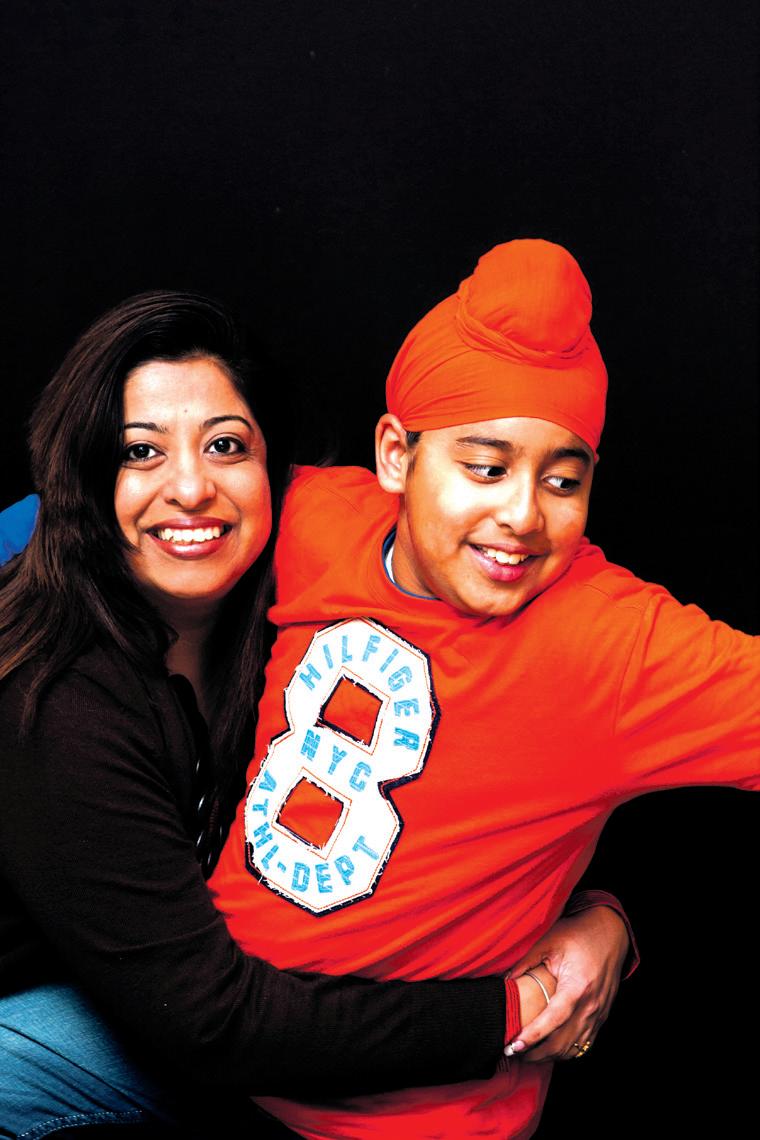

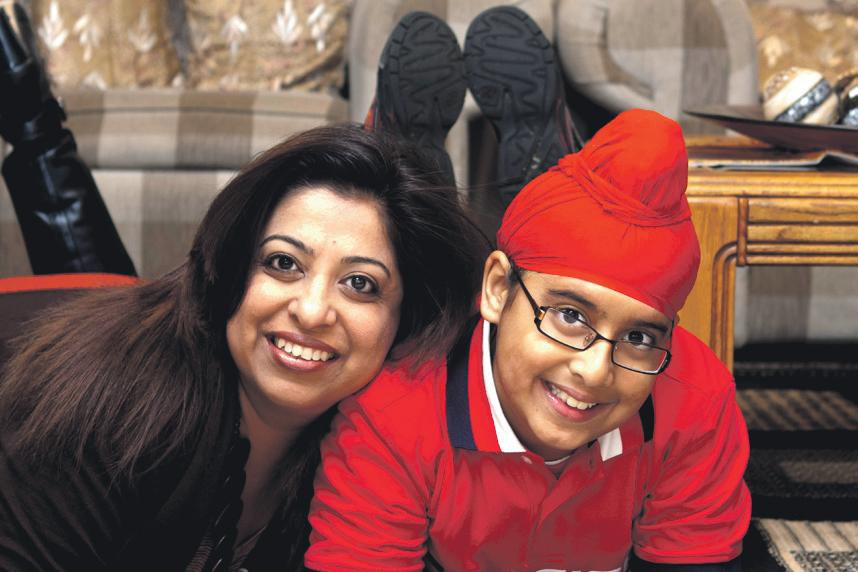


MummyFunny FunnyMummy Funny Mummy Funny Mummy Funny Mummy
Funny Mummy COVER STORy
FunnyMummy
Ten-year-old Ronit Jabbal of Glen Waverley (Vic) with his mum Preeti
that’s why!
Slow the music.
(She means turn the volume down).
We’re having Indian for dinner again today because we come from India, that’s why!
Dal is very healthy food, ask anyone. You can do better than that in mathsyou’re an Indian girl/boy.
You can’t go out wearing that!
Will there be boys at your party tonight?
You must marry an Indian boy. Go to your room… no, wait, you like your room…
Don’t make me turn this car around. Well, you’re the only one who could have done it.
Go ask Dad.
Do you think money grows on trees? Indians can’t have babies till they are married.
We can drive like this, we are Indians. I wouldn’t be driving like this if you didn’t make me late.
You can do anything, you are an Indian. Of course you believe in god, you are an Indian.
Go wear your jumper, I’m feeling cold. Do you want me to shout at you like a mad woman?
Get out of the shower NOW. (30 seconds after I get into the shower)
We are going out for a few hours; you’ll be alone at home, DON’T do anything we wouldn’t want you to do. We don’t do that in our house. I used to shiver in fright when my mother scolded me.... look at you, you don’t even listen when I scream at you. Have you even brushed your teeth?
Do it NOW or else NO wifi for the next whole week.
Are you on Facebook?
MMwwwwaaaahhh, smooch, smooch, my little baby, I am so proud of you. Right, go do the dishes now.
Look, learn from the cat, she never answers back.
(When I tell her I got the second highest mark on the maths test) Who got the highest?
If you get that hair off your face everyone will be able to see how pretty you really are.
If your friends jump into the well, will you jump too?
I can get this made in India for half that price.
Aaaaahhhhhhhh.
(After her 14th cup of chai: she’s seriously addicted, poor thing).
How many times do I have to repeat the same thing again and again?!
Why can’t you swtich off the lights/TV/ computer when you leave the room?

Bijli ka bill kya tumhara baap dega…
(Oh yeah, mum, baap hi to dega!)
Am I talking to a brick wall?
When I was your age I used to help my mum all day…
In our days we never had the guts to questions our parents, look at you…




Am I your servant to pick up your clothes, cook your food and clean your room…?
Can’t you both sit together for 5 minutes without bickering?
You’ll understand my pain when you have your own kids!
You call this homework ‘work’? This is how much we had to do in an hour, not over a week.
I don’t care if your friends’ families only invite a few people over at a time; we are Indians and I have to invite everyone we know including uncles, aunties and grandparents or they will get offended.
You are Indian and you call this spicy?
Indians ke naam pe kalank ho (you are a blot on the name of the country)
That’s a total rip off! Buying at full price is against my retail principles… you want that latest game, research the best price in the market and make sure it’s on sale
I don’t care if it’s too much: if there are hundred seniors around you have to matha teko (bow before) all of them!
If you don’t learn how to speak Hindi you’ll never know what Dad and I talk about you in front of you
Don’t you dare say sh#@ - I will make you wash your mouth out with soap Look at your tond (bulging tummy) stop eating McDonalds or you will turn into a fat pig.
When I was your age I used to bike or walk to school. No fancy cars for us… learn to appreciate what you have. Get off that Facebook-shacebook thing! How can you be texting / facebooking / youtubing / watching TV while doing your homework?
Funny Mummy
There are no wells any more, mum. Ok, into the Indian Ocean then! We don’t live near the Indian Ocean. Ok (screaming), off the Harbour Bridge then!!
Dad (muttering): Don’t give her ideas.
You’ve got to start ironing your own shirts – don’t assume your wife will iron them for you.
Then why do you still iron Dad’s shirts…?
Skirt neeche karo. (She means my skirt’s too short for her liking). Undies don’t like to live on the floorthey like to be on you, in the drawer or in the wash!
Contributions from Ronit Jabbal (10), Janhavi Bhandari (14), Devna Luthra (15), Sarina Patel (15), Nehchal Anand (13), Manan Luthra (13), Dhriti Bhandari (11), Sachin Gupta (14), Sajini Gupta (16).
MAY (1) 2012 11 NATIONAL EDITION
FunnyMummy
Funny Mummy Funny Mummy
Funny Mummy Photos: Ravinder Singh Jabbal
FunnyMummy Things our mums say
Polished performances delight classical aficionados
BY CHITRA SUDARSHAN
Bhairavi Raman’s solo violin concert on March 31 in the Kel Watson Centre, was one of those rare displays of virtuosity and mastery of Carnatic music from a young Melbourne artiste, that it felt one was attending a concert in Chennai. She is the student of Murali Kumar, founderdirector of the Raaga Sudha School of Music. To those who have followed Bhiravi’s progress all these years, it was always evident that her talent was extraordinary, and that she was among the select few who have that special something which makes their music come alive and shine.
Bhairavi began with a Kaanada varnam which she handled deftly, going on to a kriti in Naatai Sri Mahaganapathe which she delivered with consummate artistry. She went on to a composition of Subbaraya Shastri in Begada. She rendered a melodious raga alapana and followed it with a superb rendering of the kriti. In a few adroit movements of the bow, she brought out the essence of the raga in all its beauty.
Then came a composition of Swati Tirunal, Paramapurusha, in Vasantha; followed by an unhurried Dikshitar kriti in Saveri Sri Rajagopala; Bhairavi then played a brisk ‘Sarasasamadana’ in Kapi Narayani before playing a slow-paced kriti in Varali
She chose Mohanam as the ragam to elaborate that evening: her superb raga
alapana bore all the hallmarks of a seasoned violinist. After a popular kriti in rasikapriya, she went on to do a ragam-tanam-pallavi in Revaty ragam. Her raga alapana and tanam wafted across the auditorium and she made it sound quite effortless. The pallavi in ragamalika was a polished gem and superlative, and sounded like a piece from a maestro. She held her own through
almost 4 hours of non-stop music – an accomplishment of which she can very well be proud. During her debut solo concert, Bhairavi’s violin oozed melody; there was accent in the right places; the timing of the pauses spot on; the tempo sometimes softer, and sometimes majestic, and sometimes emphatic – just as the mood demanded.
Full credit must also go to her guru
Anu Vats held her solo Odissi recital on April 15 at the Darebin Arts Centre, Preston. She is a pupil of Chandrabhanu and his Bharatalaya Dance School.
A mother of two, Anu had learnt bharatanatyam from Chandrabhanu from the age of 5, and had her arangetram in 1988. She began learning Odissi from 1992, and over the years had performed in major roles of the Bharatam Dance Company. Between pursuing her studies and raising children, Anu somehow found time to hone her Odissi dance skills, and her first solo recital was a testament to her skill, commitment and artistry.

Anu began confidently with a Mangala Charanam in Pahari, moving on to the pallavi, the centrepiece of an Odissi recital. Her tribangi was perfect – the trademark of an Odissi dance. She wove intricate patterns in this pure dance item, and did not put a foot wrong. The next item in misra bhairavi was devoted to the Goddess, and set to the popular shloka ayigiri Nandini. Anu’s depiction of the slaying of the demon Mahishasura was a delight to watch – interspersed as it was with the portrayal of the other qualities of the Goddess.

Sri Murali Kumar for training her so marvellously; he is also fortunate indeed to have a pupil such as Bhairavi who has done her guru proud.
Nanthesh Sivarajah on the mrudangam and Akshan Vasavan on the ghatam – two of Melbourne’s own – and pupils of Balasri Rasiah, provided excellent support and complemented Bhairavi’s violin.
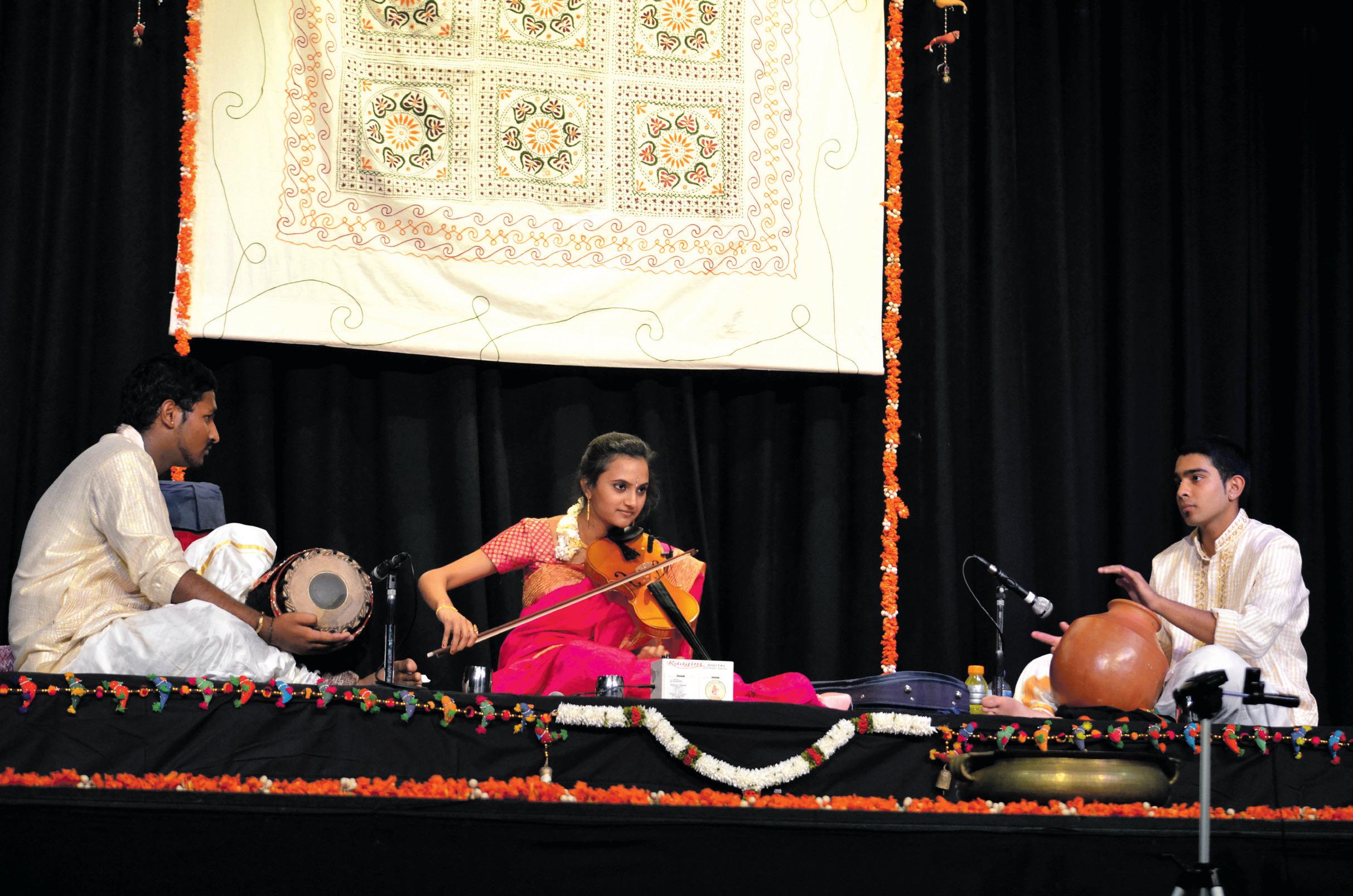
Anu’s recital picked up pace in the second half as she came into her own. The Geeta Govinda - a de rigueur in Odissi, gave Anu ample scope to demonstrate her skills of expression. In the Panchakshara Stotra, she covered the stage from one end to another as she portrayed the energetic dance of Shiva, punctuating her brisk and complex rhythms with leaps, jumps and statuesque poses.
Finally, in the ‘Moksha Nata’ in bhairavi raag – a largely pure dance item – her fast, yet controlled footwork and body movements were superb. Not only did she do justice to the excellent choreography of Chandrabhanu, her depiction of the goddess in the Devi Mahatmyam shloka was superlative.
The orchestra consisted of Chandrabhanu and Ambika Docherty doing the bols and the manjira; the eminent vocalist Krushna Chandra Roy’s voice and harmonium filled the auditorium with some sonorous music – some of which were his own creations; Dibakar Parida on the pakhawaj was simply excellent; Jeeban Prakash Das on the sitar, Soumya Ranjan Joshi on the flute and Agnimitra Behera on the violin all contributed to a wonderful musical experience.
www.indianlink.com.au CO mmun ITyS CE n E
Keerthana Music School’s Seventh Annual School Concert was held at the Chandler Community Centre in Keysborough on April 21. In the short time that the school has been running under Smt Uthra Vijayraghavan, its students have matured and reached a stage where they confidently display their musical skills – indeed even mastery over “manodharma” – many improvising and showing their extemporaneous skills. The whole evening was well organised with students demonstrating a good collection of ragas, talas and compositions.
The Carnatic Music Circle’s first feature concert for this year was held at the Kel Watson Centre on April 1, featuring the eminent vocalist Padmasri Smt Sudha Raghunathan. She is the star sishya of Padmavibhushan Sangeetha Kalanidhi Dr. M. L. Vasanthakumari (affectionately known as MLV), hailed by many as a musical genius, a doyen of Carnatic Music. From 1990, Sudha’s rise was phenomenal, and since her Guru’s demise, she has been considered the only real protégé of MLV. She often recalls with nostalgia her guru MLV’s generosity on the stage and in real life, and acknowledges that her music in itself is a tribute to her guru and grand guru GNB.

Sudha is a top ranking artiste for Prasar Bharati, Chennai and performs at important events of All India Radio and Doordarshan, she has released numerous records and CDs, performed in world music festivals, founded a Charity called Samudaya.... the list goes on.

Sudha began with a Charukesi varnam, followed by a kriti in gowlai - Pranamamyaham, a composition of Mysore Vasudevachar. In those few minutes she already had the audience in the palm of her hand and she demonstrated why she is one of the best in the field.
The next kriti was in a not-so-common raga NeechaBowli, a composition of Dikshitar. Her raga alapana in Mukhari was soaked with melody and bhava, and Bhanturiti in Hamsanadamu was exemplary. Rajagopala in Neelambari raga was controlled and full of grace. She chose the raga Thodi for elaboration that evening – and what a treat it was! The raga detailed alapana, the kriti, the niravals and kalpana swaras all bore the mark of her guru M L Vasanthakumari as Sudha Raghunathan breezed through them with such virtuoso dexterity that it left the audience speechless.
The kriti Guruvayurappan in Riti Gowla, a composition of Ambujam Krishna was a moving one, packed with bhava or emotion. The ragam-tanam-pallavi was a 5-raga rendition and it alone demonstrated why she is one of the best Carnatic musicians today: her voice just glided effortlessly from one raga to another creating a cascade of melodies. The smaller pieces at the end included an abhang, a pasuram and a devotional item and a tillana.
BV Raghavendra Rao on the violin and Tiruvaroor Vaidhyanathan on the mrudangam were able accompanists who simply added to glorious musical experience.
The Laya Vidya Centre held their monthly concert on March 30 at the Wellington College in Mulgrave. The young performers’ section featured a Veena duet by Mahita and Nisha Iyer. Fresh from their recent arangetram (in February), the cousins, daughters of the Iyer Brothers, gave a polished and flawless performance. Pavan Gopinath’s accompaniment on the mrudangam completed the music superbly.

MAY 2012 13 INDIAN LINK CO mmun ITyS CE n E
Forum urges male victims to speak out
People normally associate family domestic violence with women being the prime victims, but in several cases, men endure the brunt of domestic violence as well. To throw light on this sensitive issue, Sankat Mochan Samiti (SMS) organized a discussion forum titled ‘Domestic Violence – Male Perspective’ in conjunction with Relationship Australia Victoria (RAV) on April 21 at the office of the Consulate General of India in Melbourne. SMS is an organization that offers spiritual and moral assistance to the community, including support to victims of domestic violence.
The forum was officially launched by Dr Sunila Shrivastava, President of SMS who stated that one of the prime objectives of the organisation is to complement the activities of various other groups in the community that focus on providing assistance to victims of domestic violence. Other major attendees were Mr Rakesh Kawra, Vice Consul; Mr Simon Curran from RAV and Dr Dinesh Sood
from SMS, who orchestrated the discussion.
In a society where men are generally considered superior to women, it does come as a surprise that domestic violence against men is prevalent in all divisions of society. It is a concern the government has failed to identify with, thus resulting in uncertain laws to protect men from any form of domestic abuse which can occur in the form of economic, emotional, sexual, physical and verbal violence.
In a survey conducted in the mid nineties by the Save Family Foundation, about 95% of men in India admitted to facing some form of domestic violence either from their wife or in-laws.
An important observation brought up at the forum was that the Australian immigration law fails to provide adequate protection to the spouse on a dependent visa, and social welfare assistance to those on a temporary visa. Therefore in extreme situations, it becomes the

moral obligation of community organisations such as SMS to provide necessary support to the victims. The general consensus of the forum was that male victims should have the courage to step out of the shadows and speak up rather than suffer in silence, because the only way this problem can be addressed by
the government is by bringing it out in the open, thereby creating awareness in the community.
SMS has been making a conscious effort to deal with the issue of domestic violence against men in a thoroughly professional manner and have created Sankat Mochan Kendra on 05 Windsor Ave, Mt Waverley, wherein
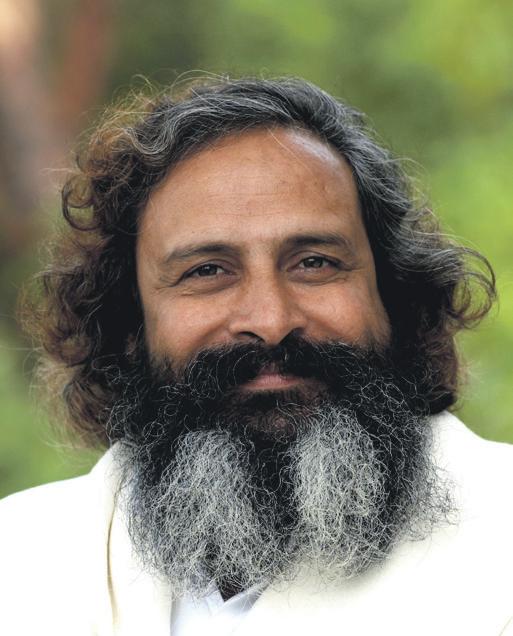
volunteers offer support and guide victims in seeking professional assistance from appropriate sources.
For further information or assistance, please contact Dr Sunila Shrivastava at 0427 274 462, or email: ashriv@gmail.com. Sujith Krishnan


14 MAY 2012 www.indianlink.com.au CO mmun ITyS CE n E
Forum offers solution to mental health problems

Her words were powerful; her courage was inestimable. Looking at her today you could never imagine that she feared to step out of her house for months. You could not comprehend the severe anxiety that she faced or the nightmares that possessed her. And that was precisely the reason why this brave young lady stood up to scrutiny in front of an audience to share her personal story. Janine was a psychiatric survivor, and she was there to spread the message that the stigma associated with mental health was outmoded and should be sent packing.
According to the Australian Bureau Of Statistics, one in five Australians aged 16-85 had a mental disorder in a year, and 1.9 million people accessed services for mental health problems in the 12 months prior to the survey. It is estimated that at least 20% Australians will experience mental illness at some stage in their lives. Janine’s story was not unusual, but her courage to

discuss this in public certainly was. Janine recounted her personal experiences to a rapt audience at an exclusive club in the city, encouraged by her Consultant Psychiatrist Dr Manjula O’Connor.
Dr O’Connor is a Consultant Psychiatrist in private and hospital practice, and her special interest is in domestic and family violence, gender related issues in psychiatric illness, anxiety and depressive illness. Currently Dr O’Connor is the Vice President of the Australia India Society of Victoria (AISV). She is also the chair of the AISV taskforce against domestic violence in Indian and ethnic communities.
According to Dr O’Connor, the opportunity for recovery from mental illness is more likely in a society of acceptance. The talk was meant to inspire people to serve as mental health vanguard, motivating a societal change towards acceptance and decreasing the negative attitudes that surround mental illness. Besides
Janine’s moving account, the talk aimed to support and educate audience about raising awareness, stigmas and treatments available for people living with mental health illness. Janine’s willingness to disclose her experiences of survival, resistance, recovery and self-determination proved far more effective than any theoretical discussion on the subject of mental illness.
The audience resonated with Janine’s emotional struggle and discussed their own mental demons, or that of people close to them. Dr O’Connor answered each query with expertise and stressed on the importance of collaboration with family members and community to enable a patient to live a meaningful life and achieve their full potential. She highlighted the unique barriers to implementing shared decision-making with family members. Dr O’Connor claimed that work could be both the reason for stress or the key to recovery of self-confidence, and
employers have a responsibility to understand mental disorders and not discriminate against patients.
Prior to her treatment Janine suffered extreme fear of returning to work, felt like a failure, had loss of concentration and a fear of never being able to comprehend concepts. She completely avoided social life, made no telephone contact with any friends and withdrew from everyone. She reached a stage where she found no pleasure in life and no interest in food. While Dr O’Connor tried low doses of mood stabilizers and antidepressants, she also sought collaboration from Janine’s workplace and HR. Janine’s mother was actively involved in the healing process. Janine is now working full time and has gained back her confidence and self esteem.
According to Dr O’Connor the lesson to learn from Janine’s story is that besides correct diagnosis and effective medication, it is crucial to have non-judgmental support from
family and friends. “Mental health recovery is a journey of healing and transformation. For anyone suffering with mental illness or living with someone with mental illness you’ll recognize the fears, hopes, and dreams that you may be dealing with right now. Only by sharing can we come together as a community and help them survive the psychiatric labelling, and help them to heal and transform,” she said.
MAY 2012 15 INDIAN LINK CO mmun ITyS CE n E
Preeti Jabbal
Dr Manjula O’Connor
Are you looking for a career in Family Day Care?
Come along to “Aussom Family Day Care

”
Aussom Family Day Care opened its doors in Jan 2008 and has offices in both Melbourne and Sydney, to provide quality early childhood education and care to children.
• We offer flexible contracts to genuine people interested in caring for and educating children aged between infants to 12years old in their own home,
• We would love to engage a diverse range of educators from many different cultures,
• A commitment to enrol into Certificate 3 in Children’s Services and other criteria apply,
• We have a team of dedicated professionals waiting to help you kick start your career in Family Day Care.
• We offer comprehensive support and guidanceall you need to do is pick up the phone and make an appointment. Aussom
Attention all International Students! MARCH MADNESS is HERE Success Stories starts here . . . . . . .
Check if you are eligible to receive up to $1500* as a study grant towards your studies if you enroll in this Month at IIPD.
IIPD offers the following Courses:

• Cert III in Hospitality (Commercial Cookery) 52 Weeks Fee $ 7999.00
• Cert III in Horticulture (Landscape) 52 weeks Fee $ 7999.00
• Diploma of Hospitality 2 yrs. Fee $ 13999.00
• Diploma of Horticulture 2 yrs. Fee $ 13999.00
• Diploma of IT (Networking) 1 yrs. Fee $7999.00
We offer weekly intakes for our all our courses. All students get quality education and with our experienced and friendly staff, Workplace assistance provided, reaching your potential is a dream come true!
Attention Domestic Students: All courses are government funded Under Skills Victoria funding.

LIMITED ACADEMIC SCHOLARSHIPS ARE AVIALABLE
Speak to our Admissions department by Telephone 03 9077 6074 or email: info@iipd.edu.au
Applications closing for 9th April 2012
Seluna Pty Ltd T/A International Institute for Professional Development Suite 1 – 6, 79 Paisley Street Footscray Vic 3011
16 MAY 2012 www.indianlink.com.au
Family Day Care NSw 4/1 Station Road Auburn 2144 1300 164 794 Aussom Family
Scheme 49 Hopkins Street Footscray 3011 1300 556 043
Day Care

MAY 2012 17 INDIAN LINK
FIWAA Excellence award for Deepa
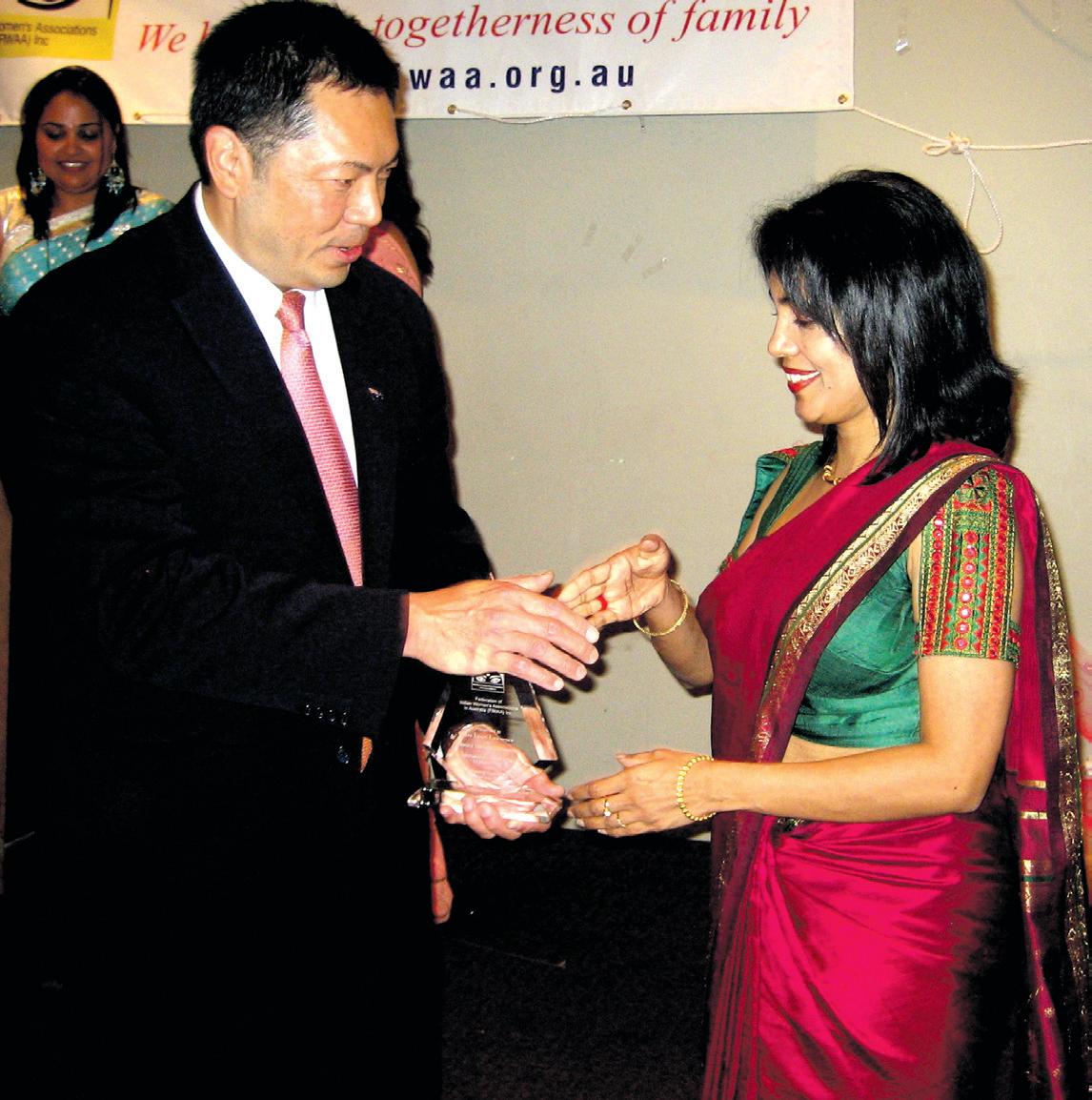
For Deepa Kandathil Matthews success is a way of life, and she is willing to work tirelessly towards it. As South Asian Regional Manager for CQ University, Deepa has proved that success did not come to her by accident. It came by making the right choices and cultivating the right habits. Deepa was one among three winners who won the Federation of Indian Women’s Association In Australia (FIWAA) Award in the category – Women successful in their own field. The event, organised by the FIWWA was a part of the International Woman’s Day celebrations on March 31, in which the contribution of women in various fields was valued and acknowledged. The awards night was attended by Hong Lim, MP Member for Clayton; Dr S.K. Behera, Consul General of India; and Vasan Srinivasan –President of Federation of Indian Association of Victoria (FIAV). The FIWAA provides enthusiastic support to multicultural women in Australia by providing encouragement, relevant resources and community bonding.
Deepa migrated to Melbourne from Mumbai, India in 1991 when Australia was experiencing a recession and jobs were hard to come by. She moved to Mildura to work at a TAFE College. As a woman of Indian origin in an Australian country town at that
VSA Trivia Night
Saturday 19 May, 5:30pm for a 6pm start at Ashwood Hall - 21A Electra Avenue, Ashwood, Mel Ref: 61 A 11. Trivia, pizza and snacks, while drinks can be purchased at the bar. Register your teams now, maximum 6 players per team. Cost: Adults: $10; Children: $5. Register by email: sharon.l.dhillon@gmail. com or call 0410 400 245
Sahitya Sandhya
Sunday, 20 May,
time, stresses and challenges were realities of Deepa’s life; however she took them all in her stride. Eventually she moved back to Melbourne and started working with Victoria University as a Diversity Officer (previously known as Equity Officer), developing a Managing Diversity Plan at Victoria University that was nominated by the State Government as having the Best Agreed outcomes. She was invited by the state government to be part of a reference group that reviewed Managing Diversity Policy, and also facilitated a session at the Diversity Works Conference.
Deepa then went on to work with CQ University and rapidly progressed towards her current role as South Asian Regional Marketing Manager. She travels extensively to South Asia to attend meetings with Universities, governments and prospective students. Deepa holds several governance positions within the community, including a five-year nomination on the Board of the Equity Research Centre. She also holds membership of the Community Advisory Committee of the Royal Women’s Hospital Board, the Australian Institute of Company Directors, Board of the Soul Food Women’s Group and Board of Mission for Kids, and is advisor to the Family Health Institution, India and member of the Education Committee of the
AIBC. She has been the Assistant Secretary of the Mar Thoma Church, Treasurer of the women’s group of the Mar Thoma Church and a member of the Darebin Ethnic Communities Council.
Closer to home, Deepa’s family supports the Australian registered trust, Mission for All who aims to make a difference to the lives of destitute and underprivileged children in India and around the world through funding their education. Primarily focused on professional education, the trust also assists school children with fees. Currently there are two students who are receiving funds by the trust to complete a Bachelors degree in Nursing and Bachelors of Engineering. Another beneficiary was also assisted to finance a Laboratory Technician Course in Mandiram Hospital in India.
As a hobby, Deepa has a genuine flair for public speaking and has been an active keynote speaker at several events. She is actively involved within the community, raising awareness for issues of social justice like domestic violence, equal opportunity for women and women’s health. She provides voluntary training and management consultancy to not-for-profit organisations across the world, including free training on strategy and policy development, marketing and
business, and personal ethics. Deepa’s impressive list of engagements includes selection on FIAV’s (Federation of Indian Associations in Victoria) domestic violence panel and involvement with the White Ribbon Day events.
As a mother of two sons, Deepa continues to successfully blend family life with professional aspirations. “It can be a constant juggle between work, family, social and community commitments, but I thrive on the challenge,”
What’s on
1:30pm – 4pm at Northcote Seniors’ Hall, 18-A Bent Street, Northcote (Mel. Ref:30 D7).
Nearest train station is Northcote (on Epping Line); nearest tram stop No. 34 is on the High Street (on Bundoora bound trams). NRISA and Sahitya Sandhya are jointly organizing a literary evening of poetry and songs called Laughter and Beauty (Kavita & Geet Sammelan: Hasya aur Hasina). Free
snacks, tea and coffee will be available after the function. Please RSVP in advance for catering purposes to Nalin Sharda, Secretary, NRISA & Coordinator, Sahitya Sandhya on 03 9919 4678 or Mob: 0402 108 512
Musical performance
Saturday 26 May, 8pm onwards at World Music Cafe, 1 Mark Street, Fitzroy, Vic. Balvinder Singh will perform on the sitar with Sam Evans on
tabla and Adrian Sheriff at BOITE.
Mrs/Ms India Quest
Saturday, 2nd June, 6pm onwards at Thornbury Theatre, 859 High St, Thornbury, Vic 3071. For more information visit www.mrsindiaquest. com or www.
thethornburytheatre. com. To participate and for entry tickets and sponsorship enquiries, email anamika2_in@ yahoo.com, or anamika@
she says. “I always set realistic expectations for myself and I worked part time till my boys were old enough to look after themselves. Now that they have grown into socially-conscious, well-balanced young men, I can dedicate my time and energy towards my career and towards contributing to the community,” she adds. Going by her passion and dedication, it is obvious that the purpose of life for Deepa is living a life of purpose!
Preeti Jabbal
mrsindiaquest.com, or call 0432059798.
Join the Maribyrnong Swifts FC Maribyrnong Swifts FC, a women’s soccer club that actively promotes women and girls soccer at all levels is looking for girls (under 18) to form a Junior Girls soccer team for the upcoming season. Those interested, please contact Mag at magdalen.lim@gmail. com or 0405 247 348 for further details.
18 MAY 2012 www.indianlink.com.au CO mmun ITyS CE n E
Award-winner Deepa Matthews
Vivacious giddha enlivens ISCA Vaisakhi
Seniors in Melbourne got together under the banner of ISCA (Indian Senior Citizen’s Association of Victoria) to celebrate the festival of Vaisakhi recently. The celebration is an annual event and an integral part of ISCA’s activities and attracted enthusiastic participation from over 150 people this year. The ISCA Vaisakhi function was held at the Mount Waverley Youth Centre in Mount Waverley. The young at heart got together to sing popular, nostalgic songs while all the attendees enjoyed a variety of other performances. The highlight was a vivacious giddha performance by a local amateur group led by Mrs Dilpreet Jaswal. The talented dancers had the audience enthusiastically applauding and wanting more. The event concluded with a sumptuous Indian meal.

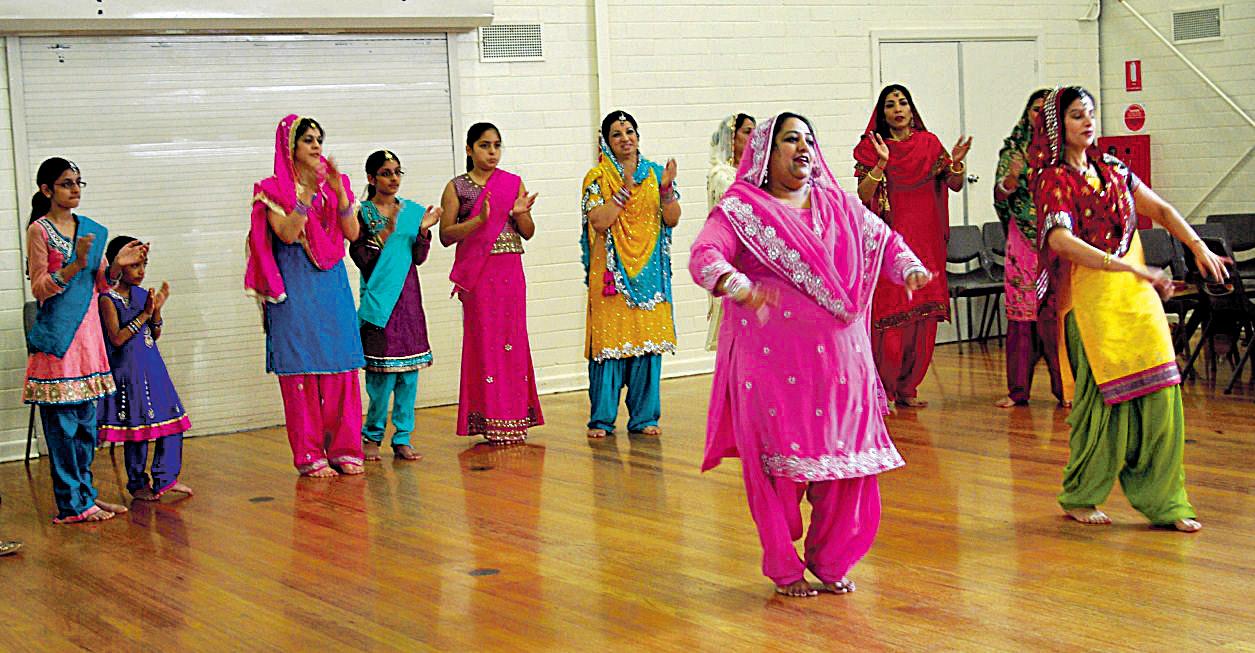
ISCA was established in 1994 as one of the first organisation dedicated to the welfare of seniors. Since its inception, ISCA has grown to include over 300 members and continues to attract membership from all parts of the state. While ISCA was initially created by seniors who migrated to Australia many years ago, it also welcomes newly arrived seniors and their families. ISCA offers a platform for all seniors to enjoy social networking and generate meaningful friendships in their twilight years. Educational talks, short courses, multicultural events and numerous social activities keep the members engaged throughout the year. ISCA members conduct weekly classes on yoga and computer and mobile phone usage, among others. They also invite guest speakers to inform members of relevant topics like health and security. All the major festivals are also celebrated with great enthusiasm and ISCA’s multicultural day is one of the most popular and much awaited event every year. Ethnic groups are invited to this event to raise awareness of unity within the community. The objective of ISCA is to promote healthy living in a harmonious environment.

ISCA is non-political, non-religious and non-profit organization that welcomes and encourages new membership. For further details, contact Prem Phakey, President on 95609607. Dr Jasbir Bedi
Spiritually beautiful aartis mark Sthapana diwas
The Shirdi Sai Sansthan, Melbourne celebrated the 7th Sthapana Diwas of Sai Baba on a grand scale on April 14. It was on this day in 2005 that Sai Baba’s auspicious presence was established in the form of a temple at 32 Halley Avenue in Camberwell. A life size idol of Sai Baba took pride of place within the premises, and has since attracted thousands of devotees. Sai Baba is revered as one of the greatest saints ever seen in India, endowed with unprecedented powers, and is worshipped as a God incarnate. He embodied all religions and preached the universal religion of love.
The Sthapana Diwas started with kakad aarti (morning prayers) at 8am followed by Baba’s Maha Mangala Abhishek performed by Pundit Rajesh Tiwari, the temple priest. The abhishek was performed with 101 litres of milk, yoghurt, honey, sugar, vibhuthi, ghee and fruit juice. All the devotees participated in the abhishek with great enthusiasm. The Rudra Havan and Sai Gayatri Navagraha Mantra Havan followed the abhishek, and were also conducted by Pt Tiwari. After the havan, Baba’s madhyan aarti (midday prayers) were offered. All the devotees were served with maha prasad after the aarti

The evening programme started with early Dhoop aarti (afternoon prayers) at 5pm, followed by Sai Bhajan (hymns) by Manish and his group. Devotees who visited the mandir joined in the musical supplication. Baba’s Palki at 8:30pm was another spiritually beautiful part of the proceeding. The celebrations ended with shej aarti (evening prayers). According to temple officials it is estimated that more than a thousand people attended the function and received the blessings of Baba over the course of the day.
Pradeep Rupanagudi, President of the temple claimed that it has the distinction of being the first mandir in the world dedicated to both Shirdi Sai Baba and Jhulelal. “In addition, our mandir is unique in that it is one of the few temples other than Shirdi, to have a Dwarakamai and Chavadi. The mandir is conveniently located with access to public transport and devotees from all walks of life and from diverse backgrounds now throng to this temple to seek Baba’s blessings and grace,” he said.

The temple is run successfully with the support of volunteers and donors. The day-to-day activities in the temple are sustained by community participation of volunteers. They are there to support pujas, decoration of the temple, maintenance of its surroundings, organising major events, fund-raising, communication to devotees, financial support, accounting, development and maintenance of the website and devotee database etc. A magazine called Sai Vani Melbourne Se is also published by the Sansthan.

MAY 2012 19 CO mmun ITyS CE n E
KHK to promote Oz-India relations
Melbourne’s renowned musician Nawal Moudgil recently released a new music album ‘KHK - Khushiyan Hi Khushiyan’, to promote improved relations between Australia and India. The album includes Punjabi songs like ‘Aussie Kudiye’ that describes young love and is sung with a contemporary blend of music. The songs are mostly upbeat with the exception of a soulful wedding farewell song for a loving sister.

The lyrics are penned by Kamal Dravid and Sonu Singh, and all the songs are sung by Nawal Moudgil. Songs like Taria di Loye are vey pleasant to the ears while Ankhiyan Shaitan is peppy and rhythmic. A lot of hard work has gone into this album and it is evident in the quality and sound of this hummable album.
Nawal Moudgil is a film and music professional who has worked in the music industry for many years. He is known for promoting Indian music, art and culture in Australia through the Sangam Kala group and SIMDA - School of Indian Music & Dance Australia since 1994. In 2006, Moudgil established a film company, NMFI Pty Ltd in Melbourne to provide line production and support services for feature films, music video albums, TV series and commercials, reality shows within Australia, India, Sri Lanka and overseas.
According to Moudgil, NMFI plans to shoot music videos of KHK songs in both, Australia and India, which will be promoted on TV channels and the media industry globally. “As a result of this initiative, people in India and Australia will be encouraged to come forward, record and shoot their own music and video albums,” said Moudgil. He is currently sourcing actors and models to enact the songs of KHK
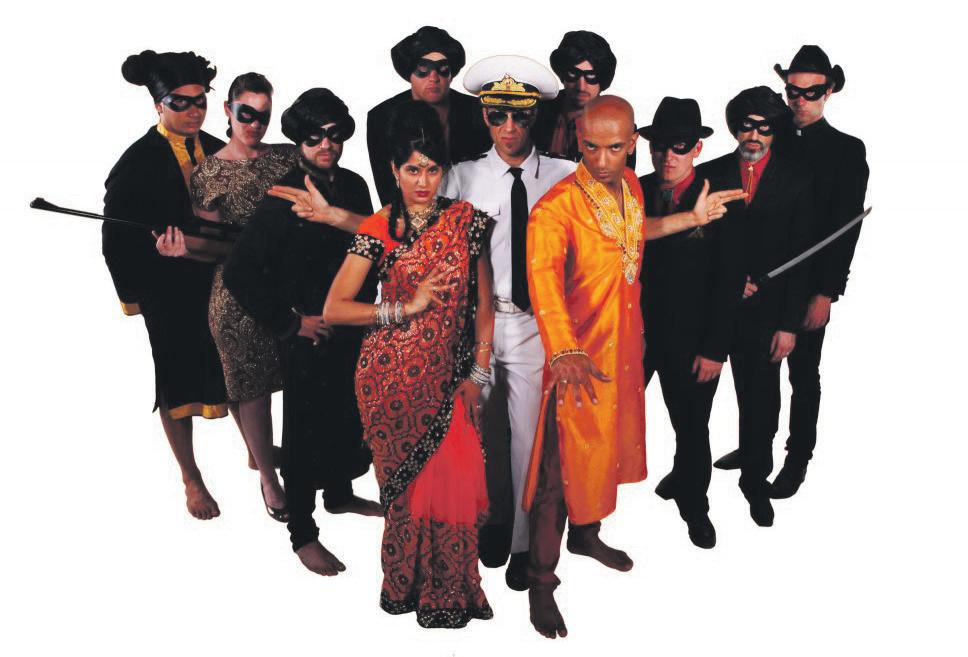
Royal treat of Bollywood’s best
The Bombay Royale, a Bollywood-inspired band has had an impressive response so far to their debut single, You Me Bullets Love, which released recently. The eleven members of the band are immensely passionate about what they do, and continue to work toward the success of the group in an industry that is incredibly difficult to crack. The group is often doing gigs to get their sound out to the masses, performing regularly in Brunswick St Fitzroy, as well as a variety of festivals and have even been seen on local TV. And now since their album release, their debut single has been played on Triple J and RRR airwaves.
The Bombay Royale sounds are perfect for both young and old, Indian and non-Indian, with something in their groove that speak to each type of audience. They have the ability to reintroduce their audience to sounds of Bollywood from yesteryears, of Bollywood classics and retro teledramas, of 1960s surf grooves, of 1970s action and espionage films, and of spaghetti westerns. The Bollywood drama is played out in their live performances, as each band member takes on their individual character, in persona and in costume. This adds to the overall audience experience, and also sets The Bombay Royale apart from other bands, since they are now being recognised by their trademark look.
The band is headed by the ‘Skipper’ Andy Williamson. With his characteristic oversized white skipper’s hat, he reminds me of the captain of The Love Boat, a 1970-80s American cruise ship TV series. His role in the band is as the leader, the storyteller, and he plays the sax.
The band has two lead vocalists, one of whom Parvyn Kaur Singh is known as the ‘Mysterious Lady’. Dressed in her shiny 1960s kurta, or a classy sari and behive, she is mysterious like a cat with elegance and poise. Parvyn sings in Bengali, Hindi and English in classical and in modern tones, and seduces the audience with her voice and Bollywood moves. Her hero on stage is Shourov Bhattacharya, otherwise known as the ‘Tiger’. He is strong and buff, and is usually smartly attired in a gold 70s kurta. He is always on the lookout, and at even a suggestion of a threat to his lady, is ready to pounce. And as for his vocal talent, his deep toned voice is a great compliment to the funky sounds created by the band.
The Bombay Royale consists of an impressive variety of instrumentalists, each with a different onstage character persona. The trombonist is known as the ‘Kung-Fu Dentist’; the bassist, as the ‘Boatswain’; and the guitarist as the ‘Railway Mogul’. The keyboard/synthesizing groove master is the ‘Bandit Priest’, while the drummer is the ‘Leaping Shaman’, and the trumpeter is ‘Chip Chase’, the 70s tennis fanatic. On the horn is ‘Dr Electro’, and the multi-talented ‘Jewel Thief’ plays the sitar, tabla, mandolin, dilruba, and guitar.
The Bombay Royale came together in Melbourne, hailing from diverse backgrounds, some of Indian origin, others not. In their music, we hear an exciting mixture of grooves and sounds that must result from the eclectic nature of the group, from their different inspirations, their different backgrounds and differing talents. The band has made this their advantage, and thus produced fresh enjoyable tracks.
You can download The Bombay Royale debut single ‘You Me Bullets Love’ for free (mp3) at thebombayroyale.com home page. The debut album is out now, available in record stores, and via Hope Street Recordings. They will perform live at The HIFI Bar in Melbourne on May 19, at their official album launch. Visit thebombayroyale.com for more information.
 Leanne Woodward
Leanne Woodward
20 MAY 2012 STAg E
India in the air!
The Little India Precinct in Dandenong was host to the inaugural Bollywood Festival held on April 15, and was a treat for the senses of the 6000+ patrons who thronged the venue for a glimpse into India’s culture and heritage, as well as a taste of its variety of food.

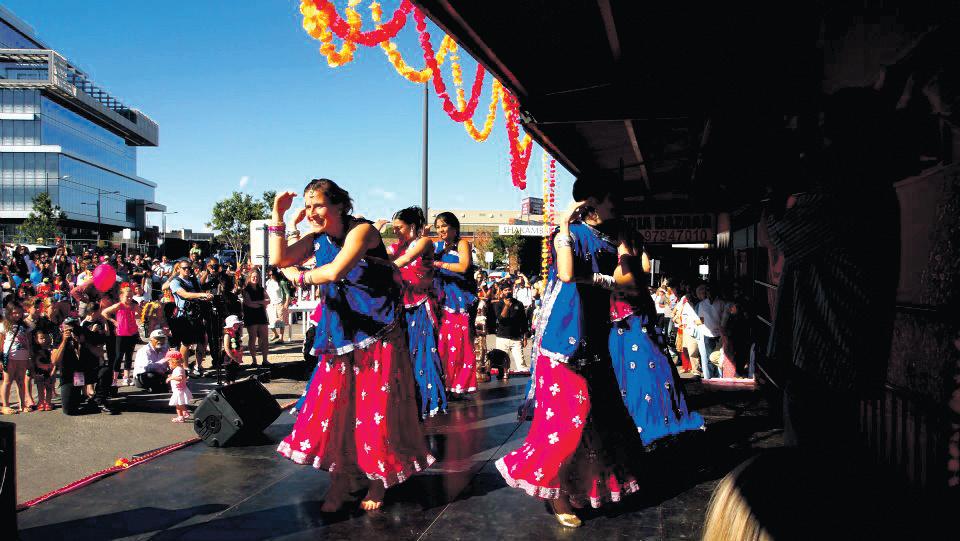
Shop fronts, the stage and fences were resplendent in decorations of garlands, while various enticing aromas of agarbattis wafted through the venue. These competed with the flavours of different kinds of edible delights on sale, from the five restaurants and barbeque stand that saw a throng of visitors enjoying their wares.
A thousand selected visitors were the lucky recipients of small, brightly coloured garlands and Little India showbags, which delighted them immensely.
Chai tea from the tea-cart was distributed free of charge to visitors new to the Indian community. Other activities included free face painting, music and dance performances, a cricket workshop for children organised by Vic Cricket, laughter yoga at the Pop-Up-Park, among others.
DJ Baba rocked the house with a scintillating mix of Bollywood’s best numbers, and with items like belly dancing, African drumming,
tabla, Spanish guitar, didgeridoo performances, bhangra dancing, the crowd was enthusiastic about joining in the festivities.
For the fashion conscious, the fashion parade by Heidi Rose, Nikita Fashion and Roshan Fashion with an explosion of colours and styles and models gracefully sashaying or dancing down the ramp, received tremendous applause from the excited audience.
One of the highlights of this extremely successful event was the opportunity to learn Bollywood dancing organised by Jhoom Bollywood and filmed by Coxey’s Big Break. Everyone wanted to be a part of the fun, including VIP guests Minister Brad Battin representing Nick Kotsiras (Minister for Multicultural Affairs and Citizenship), Bryan Tee, Jude Perera, India High Commissioner Dr Behera, Mayor Youhern Chea, Councilor Angela Long, Leanne McCreed, all of whom eagerly displayed their prowess on the floor.
This fun day out was great for all - families, couples, seniors and students, as it had an eclectic blend of activities for all ages and interests. The organisers thank the guest artistes who donated their time to make the event a success.
The Bollywood Festival was


a tribute to multiculturalism, and became a reality thanks to the tireless efforts of the subcommittee from Foster Street Traders Association, Prabhat Sharma, Kathryne Turton-Lane, Shamilla Singh, Hitesh Shah and Baba Saeed. Funded from a small seed grant from the Office of Multiculturalism and proudly sponsored from the ANZ Mobile Money Lenders, Bank of Melbourne, City of Greater Dandenong, Places Vic, Bikaneer Sweets, Punjab Sweets, Calcutta Sweets, Roshan Fashions, Dulhan Exclusives Fashions, Heidi Rose, Nikta Fashion, India Bazaar and the Indian media, the event was a resounding success and it is hoped that it becomes an annual one.

MAY 2012 21 INDIAN LINK CO mmun ITyS CE n E
Toni Collette and Dev Patel in Anupam Sharma’s next
Sydney-based film-maker Anupam Sharma’s new venture, announced in Los Angeles in late April, will star Academy Award nominee Toni Collette (Little Miss Sunshine, The Sixth Sense) and Dev Patel (Slumdog Millionaire, The Best Exotic Marigold Hotel).

Titled Defiant, the film will be directed by Bill Bennett of Kiss or Kill and In a Savage Land fame, and is set against the world of honour killings in India. Sharma will be producing.
Based on true events, Defiant tells the story of Nisha and Hari - two young lovers in India on the run from their parents who want to kill them, because they want to marry against their wishes. When Sally Lane, an Emmy-winning journalist, hears of their plight she sets out after them to cover the story, but becomes involved and ultimately risks her own life to try and save them.
Toni Collette will star as Sally Lane while Dev Patel will play Hari. Additional casting announcements will be made in the coming weeks.

The film will shoot entirely in North India with principal photography slated to begin in late October.
Bennett wrote the script based on a newspaper article he read in an Indian newspaper about five years ago, and ever since he’s wanted to make a feature film about a ‘double honour killing.’
“Bill wanted to set a fast paced love story and chase film within the chilling context of honour killings,” said Anupam Sharma. “In our research we found a lot of staggering factual material which has given him plenty to work with!”

Bennett said he was thrilled to be working with Toni Collette and Dev Patel. “Toni is one of the world’s truly great actresses, and it will be an absolute delight to work with her. And Dev is an intensely smart young man with enormous energy and charisma, and he too will bring something very special to this powerful film.”
Described as part Romeo and Juliet part Bourne Ultimatum, the film will be introduced to foreign buyers for the first time in Cannes this month.

22 MAY 2012 MAINSTREAM
Anupam Sharma
www.indianlink.com.au
Toni Collette Dev Patel




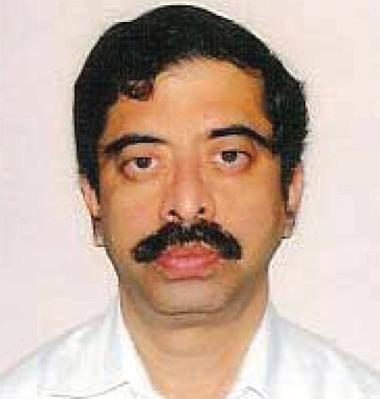
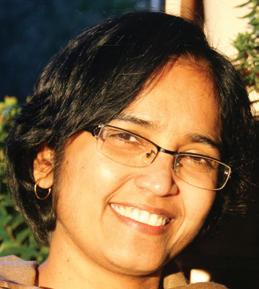







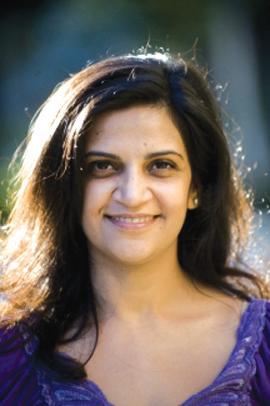




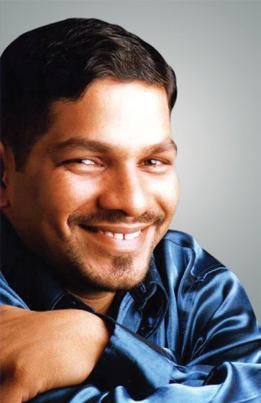



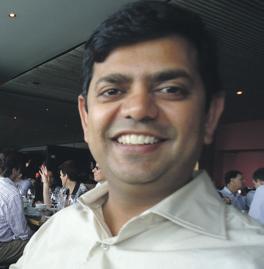

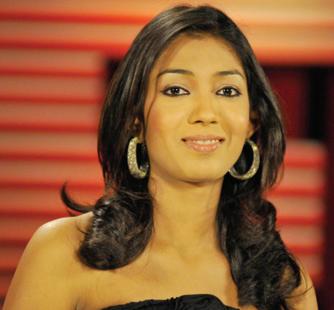


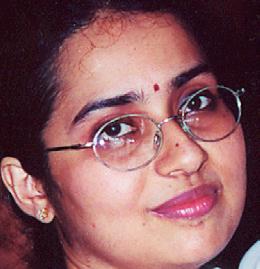








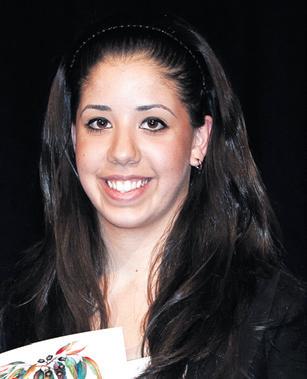
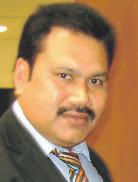



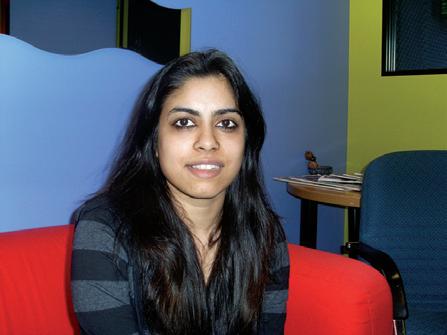
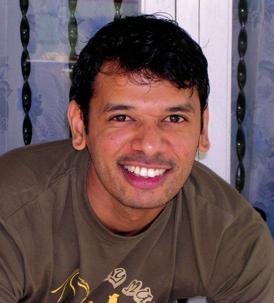

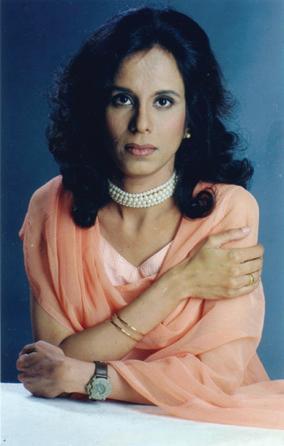




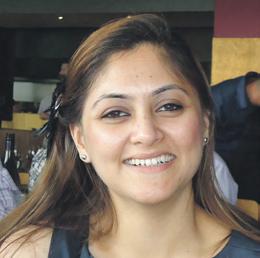











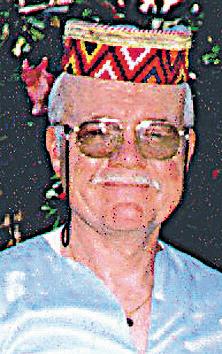

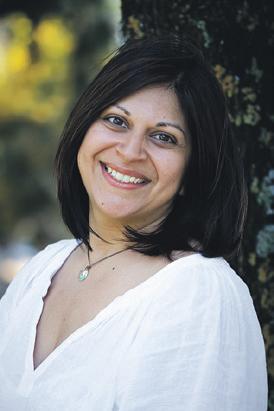


MAY 2012 23 INDIAN LINK Indian Link Saroja Srinivasan Noel G de Souza Shafeen Mushtaq Dinesh Ramanan Jyoti Shankar Sandip Hor Sunil Ranadive Hasnain Zaheer Malavika Santhebennur Roy Lange Akriti Goel LP Ayer Tanveer Ahmed Malli Iyer Vidya Muthanna Minnal Khona Azal Khan Avijit Sarkar Noopur Singhal Ruchi Lamba Sanjiv Dubey Preeti Jabbal Pallavi Singhal Sreedhevi Iyer Komal Utsav Jagad Uzma Beg Rajni Anand Luthra Vivek Trivedi Priyanka Tater George Thakur Mark Sharma Gerard Fernandes Farzana Shakir Usha R Arvind Raka Mitra Anusha Menon Tanmayi Chari Nancy Sood Geeta Khurana Drishti Nanwani Uttam Mukherjee Darshak Mehta Talia Kaur Tim Blight Arveen Sharma Petra O’Neill Sukrit Sabhlok Dilip Jadeja Sai Narayan Shraddha Arjun Rani Jhala Sujith Krishnan Shivangi Ambani-Gandhi Neelam Vasudevan Gaurav Surati Priyanka Rao Sheryl Dixit Auntyji Nitika Sondhi Danielle Cairis Sanam Sharma Deepa Gopinath Ritam Mitra Sydney Srinivas Sudha Natrajan Thomas E King Chitra Sudarshan Ashita Vadher Wespendourtime TELLINGYOUR sTORIEs Pawan Luthra Farrha Khan The team at Indian Link
Memories of Madhukaka
Chintaman Datar, known affectionately within the Marathi community as ‘Madhukaka’ and to the rest of the expatriate Indians in Australia as ‘Datarji’ passed away on April 7 in Brisbane. He was 84. Madhukaka is survived by his three children, seven grandchildren and a great granddaughter. His funeral services were held on April 11 at Mt. Thomson Crematorium in Mount Gravatt, Brisbane. It was indeed a privilege for me to conduct the last rites for my Guru.
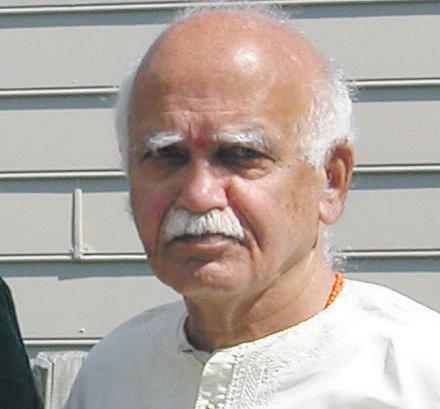
Madhukaka was born at Kurundwad, a small town on the Krishna River in Maharashtra, into a Brahmin family who earned their living by performing various rituals for the principality of Kurundwad. For such Brahmins, hardship was the name of the game. To add to their woes, his father died when he was seven. The young Madhu wanted to learn English, which caused friction with his eldest
brother who wanted him to study only Sanskrit and Marathi, and follow in his father’s footsteps as a priest. At 14, Madhukaka moved to Kolkata with his sister and brotherin-law, where he completed his high school education. He studied the Bengali script and language, later graduating with history and politics - and also found his life partner Pramila Deshingkar, (known as Akka) who had come there to work at the National Library. The couple married in Kolkata in 1952.
After a stint in London as librarian of the Indian High Commission in London between 1968 and 1972, Madhukaka arrived in Australia in October 1972. Akka and the children had arrived some 3 months before him. It is worth noting that Akka had secured the job of ‘Computer Services Librarian’ at the Springvale Library well before computers were part of daily life down-under. Madhukaka followed her here.
From then on, the Datars took the Indian community by storm.
Until Madhukaka’s arrival, there was no Hindu priest in Victoria except for Dr Martand Joshi, who shouldered the burden for the entire Hindu community.
In addition to his duties as the chief cataloguer at the State Library of Victoria, Madhukaka plunged himself into community service by offering his services as a Purohit,
free of charge. He also gave tabla lessons to many aspiring young people. He and Akka collected a group of people who sang bhajans. These were the early days when the Indian community was battling to make their presence felt, and members of the Marathi community could be counted on your fingertips. Through his connections in the State Library, Madhukaka managed to get a regular segment on the ABC radio and organized many educational programmes about India and Indian music, among others. He got involved into ‘Oxfam Walk Against Want’ and raised thousands of dollars over the years for this worthwhile charity. Their three children were brought up in this giving, cultural, educational and Hindu religious background.
The Datars were strict vegetarians and teetotallers. Their needs were minimal and because they came very late in their career to Australia, their budget matched their needs. However, when it came to helping someone in need, they were the first to offer aid.
Madhukaka, during his life here, conducted over a thousand rituals and sacraments for the Indian community. Every penny he received as dakshina went to charity. He is the one who taught us that greed is one’s worst enemy and it is the inner satisfaction
Rooms for Rent
We are a professional Indian family with 2 kids (8 years and 6 years). We have up to two bedrooms available in our luxurious house for rent / boarding for a suitable single (male or female).
•Room is furnished upstairs bedroom with bed, mattress, desk, chair, dresser
•Room has attached private toilet / shower / washbasin
•Room has attached spacious walk-in-wardrobe and storage area
•We will allow shared use of kitchen, fridge, washing machine, TV, DVD
•House is close to park, shopping centre, bus stop
•Room has heating and cooling
•Food (vegetarian and non-vegetarian) will be provided

•Rent $750 per month including food and reasonable use of electricity, gas, water
If interested, call or leave message on: 0423 001 508.

that matters. One can live happily and contentedly with hardly any possessions, and one must learn to share whatever little one has. A firm believer, Madhukaka kept uttering the name of the Lord (Hare Rama) until he was physically unable to speak.
Mahdukaka Datar has left a lasting legacy for all of us. His message is profound, yet quite simple: there is a God. May He/She be Christian, Muslim or Hindu. The only way to serve God is through
helping others who are in need. I migrated here in 1965 along with a handful of Indians. My wife and I were fortunate enough to have had a long association both with Madhukaka and Akka. What have I learned from them? I think it is the thought that hopefully, I might have made a very small difference in this uncertain world by following his teachings and by working as a community priest for the past 32 years.
Jayant Bapat
Fundraising for school
Mr Bastu Rege, Founding Director of SANTULAN will be in Australia from May 21 to June 6 on a speaking tour to raise funds and build awareness of the plight of stone quarry communities in India.
SANTULAN, an Indian non-government organisation in Pune has been working for 15 years to address the social, health, employment and human rights issues affecting people living and working on stone quarries across Maharashtra. These landless labourers undertake manual stone breaking and crushing work, and experiencing hazardous working conditions, while barely earning enough to survive.
SANTULAN’s innovative, childcentred education programme for
schools on quarry sites aims at ending child-labour and providing quality education for these children.
SANTULAN will build a residential school for stone quarry children in Pune, which will provide quality education, skills development, personal support and medical care. Completing secondary education and vocational skills development will help improve these children’s lives.
Mr Rege’s topic of ‘Breaking the cycle of poverty for children living on Indian stone quarries’ will also be presented publicly on May 29 at 6pm. Contact Bastu Rege on (+91) 20 32947771 or basturege@santulan.org; or Kristen Wood on 0424 967 174 or hellokristenwood@gmail.com
24 MAY 2012 www.indianlink.com.au Co MM u NITyS CENE

MAY 2012 25 INDIAN LINK
India, US send strong signals to Pakistan, Iran
India and the US recently signalled common intent and purpose, asking Pakistan to take stronger action against terror, advising Iran to desist from its nuclear weapons programme and pledging support to Afghanistan’s peace and prosperity.
Visiting US Secretary of State Hillary Clinton and Indian External Affairs Minister S.M. Krishna were critical of Pakistan on its handling of terror groups operating from its soil and asked it to take “strong and more concerted” action against these outfits that threaten peace and security of the US, India and the world at large.
The two leaders had their bilateral meeting in New Delhi over a breakfast of idlis and vadas at the Taj Palace Hotel.
They also affirmed that they were on the same page on preventing Iran from acquiring nuclear weapons, though Tehran remains a key supplier of oil to meet New Delhi’s energy needs.
On Afghanistan, the two nations committed to assist Kabul in handling its security, development and governance on its own, without interference from outside, even after the International Security Assistance Force moves out of the embattled nation in 2014.
At a joint press conference after their meeting, Clinton said the $10-million bounty on 26/11 Mumbai attack mastermind Hafiz Saeed was an unmistakable sign of US “solidarity” with India on bringing the perpetrators of the audacious attack to justice.
Clinton said the US had every reason to believe Saeed was the “principal architect” of the Mumbai terror strikes that claimed 166 people, including six Americans.
“Combating violence and extremism is one we all agree on and we need to do more. And we look to the government of Pakistan to do more. It needs to make sure its territory is not used as launching terrorist attacks anywhere, including inside Pakistan,” Clinton said.
Krishna noted that the recent violent strikes by Taliban on diplomatic missions in and around Kabul had once again highlighted the need for elimination of terrorist sanctuaries in the neighbourhood and “for stronger action from Pakistan” on terrorism, including bringing to justice the perpetrators of the Mumbai attack.
Clinton noted that terrorism was obviously “incredibly important question” on the minds of both the US and India.
“We both know the tragedies and losses that come with terrorism on our soil. So we have increased our cooperation between India and the US. We are going to continue to do everything we can, not only to prevent terrorists from doing evil acts of violence, but also try to convince people not to get recruited into terrorism,” she said.
Asked about the terror groups, like the Haqqani network, operating out of Pakistan, Clinton said the US and the international community was committed “to going after those who pose a direct threat to the US, Afghanistan and to our allies”.
“We are also cooperating closely with India regarding the threats that emanate against them,” she said.
On the sanctions against Iran over its nuclear weapons programme, Clinton said
the US and India “share the same goal” of preventing Tehran from acquiring nuclear weapons.
“India is a strong partner in urging Iran to adhere to its international obligations,” Clinton said.
Krishna, noting that he discussed the importance of a peaceful settlement of the Iranian nuclear issue, said it must be based on the position that Iran has its rights as a member of the nuclear Non-Proliferation Treaty (NPT).
“But it must also abide by its obligations as a non-nuclear weapon state under the NPT,” he said, asserting that “this issue, however, is not a source of discord” between India and the US.
Clinton said the best way to achieve a diplomatic solution that the international community seeks was to keep up the pressure that brought Iran to the negotiating table.
On Afghanistan, the two leaders said their respective strategic partnership agreements will pave the way for “stability and security” in the region.
Clinton said US consultations with India on Afghanistan was “very substantive and useful” and that the international community will remain engaged with Kabul on its future.
The critical issue of forwarding economic ties was discussed too.
Krishna said India was committed to providing a “level playing field” for US companies in nuclear commerce and expressed the hope that the talks between US and Indian companies will soon result in contracts.
Krishna also pointed out the difficulties faced by Indian IT companies in the US.
Clinton returned to the US after her swing through China, Bangladesh and India, where she visited Kolkata and New Delhi.
Clinton lauds ‘incredible contribution’ of Indian Americans
US Secretary of State Hillary Clinton lauded the “incredible contribution” of Indian Americans in her country and said the people to people relationship was at the heart of the ties between the two countries.
Clinton, who flew to Kolkata from Dhaka on her visit to India recently said in 2011, 35 percent of all L1 work visas in the US had been issued to Indians. Addressing a gathering at the La Martiniere school in Kolkata, she said more than 100,000 Indian students were studying in the US.
“So many links between us, we want to promote even more,” Clinton said.
In her opening remarks, she also recalled Rabindranath Tagore. “I discovered him when I was in college.”
She also recalled his quote: “Age considers, youth ventures”.
‘Indian-Americans working as change agents’
Reshma Saujani, the first Indian-American woman to run for the US Congress, now as a change agent wants to create opportunities for immigrants who have made New York City their home.
Although Saujani, a lawyer, politician and entrepreneur, lost her 2010 ambitious run against Democrat Carolyn Mahoney, a nine term member of the US House of Representatives from New York, she is
now “exploring a race for citywide office in 2013.”
“My 15 months at the Public Advocate’s office were truly some of the best of my life,” said Saujani, currently the deputy advocate for special initiatives in the watchdog body charged with ensuring that all New Yorkers have a voice in shaping the city’s policies, in an e-mail interview.
“What we were able to accomplish with the Fund for Public Advocacy, from encouraging immigrant entrepreneurship to providing scholarships to undocumented students was powerful,” she said.
“I’m committed to being a leader in charting the future of New York City, and I want to keep creating opportunities for the people who live here.”
Explaining what made her run for the US Congress in the first place, Saujani said: “Things were not getting done in Washington, and I was frustrated by the lack of leadership and the lack of political courage we were seeing in Congress.”
“I was noticing people around me become jaded and I wanted to do something to change it,” she said.
“New ideas are so important for driving innovation in this country, and I wanted a chance to get my ideas out there, and talk to voters in New York City about theirs.”
But “the experiences I had talking with voters every day showed me what a difference could be made by showing up, by being at the senior centre or the street fair and meeting the people that are working to make a difference in our communities,” Saujani said.
“I’ve always been an organizer, and as the daughter of immigrants I have always been especially passionate about engaging people in the political process, who have been excluded from it or who felt no one was listening to them.”
“The Light of India Awards are a powerful way to celebrate the work Indian Americans are doing and to show their innovations and accomplishments,” Saujani said noting that they “are in every form of government from policy leaders to activists to change agents.”
Author Jhumpa Lahiri, television personality Padma Lakshmi and CNN contributor and surgeon Sanjay Gupta are among the nominees for the second annual Light of India awards, recognising excellence and exemplary achievements of Indians abroad.
The winners of the awards, instituted by Remit2India, a Times Group service, in the fields of business, education, science & technology, arts & entertainment and literature & journalism, will be announced on June 1 at a gala event in New York.
India natural leader of Indian Ocean region: Antony
India positioned itself as a natural leader of the Indian Ocean region in view of its strategic location and operational capability, even as its navy was asked to be prepared to meet eventualities in view of the complex emerging security matrix in the region.
“India’s strategic location in the Indian Ocean and the professional capability of our navy bestows upon us a natural ability to play a leading role in ensuring peace and stability in the Indian Ocean region,” Defence Minister A.K. Antony told the conference of Indian Navy commanders in
New Delhi recently.
“We have a well-established material and training assistance programme with Indian Ocean region countries for their capacitybuilding and enhancement,” he noted.
Indian Navy chief Admiral Nirmal Verma and other top naval commanders were present at the conference.
Describing the emerging security matrix in the Indian Ocean region as “really complex”, with “some political developments” and “worrisome factors”, Antony also asked the navy top brass to maintain high levels of preparedness at all times.
“Today, the security situation in our immediate neighbourhood has become really complex. Considering the challenges in the Indian Ocean region, it is essential to maintain high levels of operational preparedness at all times,” he said.
“On the one hand, there are some political developments, and on the other hand, a number of other factors are a cause for worry and need to be factored into our preparations, both in the short-term and long-term,” he added.
Stressing the importance of security of maritime activity through the sea-lanes in the Indian Ocean for economic prosperity of India and that of the world, the defence minister said free movement of trade and energy supplies and various economic activities such as fishing and extraction of mineral resources is equally crucial for economic security.
On the navy’s modernization programme, Antony said the induction of the nuclear powered submarine, INS Chakra, in April had ushered in a new era of submarine operations for India.
“It has placed us in a select group of navies that operate such a platform. We must ensure that INS Chakra is utilised effectively to harness its real potential and also evolve operational concepts for future platforms,” he said.
Antony said the navy is on course to acquire potent platforms to add to its blue water capability.
“The induction of INS Vikramaditya in the near future, the potent MiG-29K combat planes as well as P8-I long-range maritime reconnaissance aircraft would strengthen the navy further. Recently, the Light Combat Aircraft (LCA) for the navy made its successful maiden flight,” he said.
Commending the navy’s commitment to indigenisation, Antony said, “This is amply borne by the fact that 44 out of 48 ships and submarines, presently on order, are being constructed in India.”
Endangered pheasant species multiply in Himalayan park
The presence of the highly endangered, elusive western tragopan can now be felt more clearly in the Great Himalayan National Park in Himachal Pradesh, with its numbers multiplying.
Park authorities say the population of this brilliantly coloured pheasant species in the park has gone up and so has its sighting.
“The density of the western tragopan in the park was 6.5 birds per sq km (in this year’s census). Last year, it was six birds per sq km, while it was just five birds in 2010,” said Park Director Ajay Srivastav recently in Kullu.
26 MAY 2012 www.indianlink.com.au
INDIAN NEWS
For population estimation, the western tragopan, like other pheasant species, needs specialised techniques. One of the standard census techniques is recording their call counts at a specified time and location.
Srivastav said that estimation was done at 18 locations. “This exercise is now part of regular monitoring protocol being followed in the park to ascertain the status of population dynamics of the western tragopan.”
As per the estimation figures of the last two-three years, it is clear that the population of the western tragopan is on the rise.
Srivastav attributed the increase to management strategies in terms of protection through regular patrolling of the area.
The western tragopan belongs to the family Phasianidae, which also includes peafowl and red jungle fowl. It’s the least studied bird in the world.
Being a shy bird, it is rarely sighted and is found at an altitude of 2,000 to 3,600 metres in the temperate forests of Jammu and Kashmir, Himachal Pradesh and Uttarakhand.
Jennifer R.B. Miller, who studied the park in April-May 2008 during the US Fulbright Student Research Scholarship, says the populations of three pheasant specieswestern tragopan, koklas and Himalayan monal - in the Great Himalayan National Park have grown since surveyed in the late 1990s.
“Surveys conducted in the late 1990s indicated that pheasant populations in the park were declining. In 1999, the government legally notified the park and the authorities began enforcing the Indian Wildlife (Protection) Act. Relative abundances of all three pheasant species were significantly higher (in 2008) than in previous surveys,” says Miller in her paper titled “Himalayan pheasants in the Great Himalayan National Park” published in the Indian Birds journal in 2010.
With magnificent glaciers, lofty mountains and gurgling streams, the Great Himalayan National Park, spread over 754 sq km in Kullu district, is one of the richest biodiversity sites in the western Himalayas.
The park is home to 203 bird species and 31 mammal species, three reptiles, nine amphibians and 127 insect species, besides 425 species of plants.
The famous mammals in the park are the leopard, the Himalayan black bear, the brown bear, the rhesus macaque and various herbivores like the goral, a small antelope, and the Himalayan tahr, a wild goat that lives on the steepest cliffs.
One of the most elusive species in the park is the snow leopard. It can be spotted in the highest portions, adjoining the Pin Valley National Park.
The best time to visit the park is AprilMay and September-November.
Tagore’s birth anniversary
celebrated across Bengal
Rabindrasangeet was played at traffic intersections, in schools and colleges, events were held across the state and television channels competed with one another to air his songs, poems and dances as West Bengal marked the end of the yearlong 150th birth anniversary celebrations of Nobel laureate Rabindranath Tagore with great cultural
fervour on May 7.
From north Kolkata’s Jorasanko, where the poet-philosopher was born, to the districts and small towns, people thronged in hundreds to pay their homage to the literary genius, whose appeal has remained largely undiminished even 71 years after his death.
People from all walks of life queued up at Jorasanko Thakurbari in north Kolkata - Tagore’s sprawling ancestral home - since dawn to see the room where he was born and watch a cultural programme, where well-known singers, elocutionists and dancers participated.
The main official function organised by the state government began in the afternoon on a makeshift stage on Cathedral Road, where Chief Minister Mamata Banerjee was present.
Cultural programmes, film festivals, and book fairs were arranged to kick off a fortnight long celebration. With Tagore songs, as on other days, played at traffic signals, people savoured a holiday declared by the state government.
From the morning, there was a frenzy of activities across the state, with Tagore’s compositions rendered in many localities and schools and colleges.
Born on Vaisakha 25 according to the Bengali calendar (May 7, 1861 according to English calendar), Tagore in 1913 became the first Asian Nobel laureate and the first non-European to win the Nobel Prize for literature.
He also holds the distinction of having authored the national anthems of two sovereign nations - India and Bangladesh.
The political “parivartan” in West Bengal left its imprint on Rabindranath Tagore’s 151st birthday celebration, with the Mamata Banerjee government changing the traditional venue and timing of the official function.
For decades, the state governmentorganised official function had been held at the crack of dawn on the bard’s birthday under an open space in the Rabindra Sadan premises.
All leading artists and elocutionists used to participate in the programme to play homage to the Nobel laureate poet. However, following instructions from Mamata Banerjee, the programme this time was deferred to the afternoon, with the venue shifted to Cathedral Road near Rabindra Sadan.
This took many singers by surprise, though they were unwilling to come out in the open with their criticism.
“It was a tradition to pay homage to Tagore early in the morning. I don’t know what prompted the new government to change the place and time,” said a Rabindra Sangeet exponent, on condition of anonymity.
The government has, however, claimed the decision was taken for the convenience of the Tagore-loving public, who would have had to wake up in the wee hours.
But leader of opposition and Communist Party of India-Marxist politburo member Surjya Kanta Mishra was at his sarcastic best.
In an obvious reference to Banerjee, known as a late riser, he said: “There are some people who are not early risers. But there are auspicious days when one should try to wake up early.” IANS
US Secretary of State Hillary Clinton catches up with Congress president Sonia Gandhi prior to their meeting in New Delhi, India, 7 May 2012. Clinton was in India for a three-day tour during which she discussed foreign direct investment in retail, the India-US civilian nuclear deal and Iran.

Tandoor/Curry Chef
Experienced

MAY 2012 27 INDIAN LINK
favourable working conditions. 5 day working week, closed Sunday and Monday. This is a full time position.
right applicant must have experience cooking in a busy Indian restaurant.
Exceptionally
The
Tandoor/ Curry Chef required in Adelaide.
INDIAN NEWS
Please email resume to tandoorchef01@gmail.com
MeLbourNe whY VIDYA LoVes
Versatile, vivacious, victorious Vidya Balan was in the city to launch the upcoming Film Festival of India
Step by step Hour by hour
What we’ve got is a woman’s power Day by day
Believe
These lyrics from Gerri Halliwell’s chartbuster Strength of a Woman were racing through my mind as I waited to meet the actress who has been of late proclaimed as the ‘Fourth Khan’ or ‘the female Big B’ of the Indian film industry. Year 2011-12 has certainly been big for Vidya Balan, who continues to reap the rewards for her stellar performances in movies like The Dirty Picture and Kahani. In essaying the roles of the seductive ‘Silk’ and the hapless ‘Vidya Bagchi’, Vidya not only made a strong talent statement, but she set a trend for women-oriented films where heroines are not just chosen for decorative purposes.
This was Vidya’s second visit to Melbourne. Last year she was here as a guest of Mind Blowing Films to launch the film No One Killed Jessica at the Indian Film Festival. This year, she is the brand ambassador of the Indian Film Festival. I asked Vidya how things had changed for her personally in the year she turned from star to superstar.
“It’s nice to hear that people think I am a superstar,” said Vidya, gracefully adjusting her elegant Sabyasachi sari. Taking a moment to think she continued, “I think I have got a lot busier. There is hardly much time to breathe, but I am enjoying every moment. The fact that The Dirty Picture and Kahani have received critical and commercial success is really a validation of my beliefs and I am most grateful for that. I am completely humbled by all the love and acclaim that has come my way.”
Winner of the National Film Award for Best Actress, five Filmfare awards as well as three consecutive Screen Awards for Best Actress, Vidya is a feted actress in India and offers for endorsements, causes, charities come in by the spade-full. So what made her accept the opportunity to become the brand ambassador for the Film Festival of India in Melbourne?
“When I came to Melbourne last year I received such a warm welcome that I decided I would be back soon,” she said. “I am honoured to be the Festival Ambassador this year. This festival offers a diverse choice of cinema not only from India but also from neighbouring countries like Nepal, Bangladesh, Pakistan and Sri Lanka. Indian cinema reaches across many genres and many styles and it would make me proud to introduce this incredible industry to Australian film lovers”.
It was easy to warm up to the articulate and media savvy Vidya. Looking slimmer than last year, she was still glowing with the effect of the success that is currently her travelling companion.
“I am a greedy actress,” said Vidya. “I would love to do a role in any country, including Australia. It will give me an opportunity to work on the Australian accent that I find quite interesting”.
“My only condition,” she added jokingly, “is that the film has to be shown in Melbourne and they may want to give me an honorary citizenship as well”.
During her last visit to Melbourne, Vidya had waxed lyrical of her affection for Melbourne and its people. This year too she expressed similar sentiments.
“What does one of the most talented actresses in India like about one of the most liveable cities in the world?” I asked.
This time there was no pausing to think and her response was quick.
“I love Melbourne because I think it is modern; however it has retained an old world charm. It is not cold like other countries that I have visited. There is a certain warmth and romance about Melbourne and it reminds me to some extent of Kolkata. It could be because both cities have trams. I hope to get some time from my hectic schedule to take a ride on Melbourne’s famous tram”.
Despite not seeing much of Melbourne on her last trip, Vidya found the people so warm and welcoming that she was happy to return.
“I remember my trip to MCG last year. People in India loved photos of my visit to the mecca of world sports,” she said.
Even though Vidya is not a sports buff and confesses to possessing limited knowledge of footy, she was happy to visit the MCG again this year to present the ball to the umpire at the Richmond Tigers versus Sydney Swans match. “Honestly I don’t really know much about footy, but where else would I get to see so many hot men in the same place at the same time,” said Vidya with a tongue-in-cheek grin.

Speaking of eye candy, the versatile actress confessed that she always wanted to meet Australian actor Hugh Jackman, who she claims is quite ‘hot’. Her wish came true when Hugh visited India for a FICCI conference and she met him at an awards ceremony there. She even got to perform a little dance jig with Hugh and Shahrukh Khan on stage.
“It was a memorable event for me and hopefully for them,” Vidya good-humouredly quipped.

Vidya who turned 34 recently, has admitted to dating UTV head honcho Siddharth Roy Kapoor, whom she sometimes refers to as ‘SRK’. Wedding bells however, are not to be heard in the near future, as VB wants to focus on the trajectory of her career. And even though she loves Melbourne and thinks of it as a romantic place, she was hesitant to commit that she would choose this city for her honeymoon. “I haven’t really thought about where I would like to go for my honeymoon,” she said with a smile.

Vidya Balan made her debut in the Bengali film, Bhalo Theko (2003), in a role which was much appreciated. She then made her debut in Bollywood in Parineeta (2006) and excelled in her role, winning the Award for Best Female Debutant. She appeared in the blockbuster Lage Raho Munna Bhai (2006). In 2007, she acted in Mani Ratnam’s Guru as a girl suffering from multiple sclerosis, and in Salaam-e-Ishq, Eklavya: The Royal Guard, Heyy Babyy and Bhool Bhulaiyaa. All these films proved her versatility and her defiance to not fit into the glam doll mould of Bollywood actresses. Vidya then played the role of a young, independent,



There is a certain warmth and romance about Melbourne and it reminds me to some extent of Kolkata.

S p ECIA l RE po RT
PREETI JABBAL
in you In what you want and what you do It’s the strength of a woman.
Vidya presents the match ball at the start of play at the Richmond Tigers vs Sydney Swans match at the MCG on 13 May
single mother struggling with her son’s progeria syndrome in Paa (2009). Her portrayal of the role stood apart from the usual Bollywood ‘ma’ roles and got her rave reviews from critics as well as the audience. True to her spirit of doing something different, Vidya then acted in Ishqiya (2010) and won accolades for the portrayal of the seductive widow. Not only are her roles unconventional, so are her endorsements. Vidya has very recently agreed to become the Sanitation Ambassador for an Indian Government project called Nirmal Bharat Abhiyaan. The programme is aimed at spreading awareness about sanitation and cleanliness in the country. VB has agreed to campaign for two years, and will be involved in this restructured version of the Total Sanitation
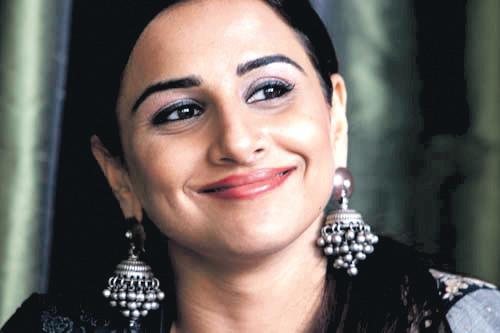
Campaign. I was curious to know how she agreed to the not-soglamourous or conventionally safe cause that involved propagating hygiene and opposing open defecation.
“I got a call from the Rural Development Minister Jairam Ramesh to ask if I was interested. We get offers to espouse a lot of causes and I like to limit myself to something that I believe in,” explained Vidya. “I am a cleanliness freak myself and I know I will be able to push this cause strongly and genuinely. Sanitation in India is the need of the hour. Look at the infant mortality rates, they are shocking. The mortality rate is often affected by lack of sanitation. It also impacts on other areas of life. There are still schools in India that do not have toilets. We will be working at various levels and very basic levels not just through ads, but also by visiting several places. It will involve a time commitment, but I strongly believe that the sanitation campaign needs to become a national obsession,” she added
I am not sure about the future of this campaign but Vidya Balan is currently enjoying a fair bit of international attention, judging by the turnout at the opening of her movie The Dirty Picture at Hoyts Melbourne recently. Fans from Pakistan, Sri Lanka, Fiji, Australia, Britain, Canada and India were present to experience the VB charm in person. And charming she was as she chatted, joked, autographed and photographed with her fans briefly, before being whisked away to another assignment. The fans were left to watch The Dirty Picture of a clean, candid and conscientious actress.
eNtertAINMeNt, eNtertAINMeNt AND eNtertAINMeNt!
Bollywood has come to town and this winter will be abuzz with events, celebrities, guests, screenings and master-classes for Indian film lovers in Melbourne. The cinematic feast of diversity has many sumptuous offers for cine-goers. From June 11-22, the festival will showcase over 40 films from art-house to mass entertainment, animation to new wave mainly from the Indian subcontinent along with a selection of especially curated films from Bangladesh, Pakistan, Sri Lanka and Nepal. The piece de resistance will be the presence of stunning former Miss World and Bollywood Star Priyanka Chopra and fab abs Bollywood actor Shahid Kapoor for the opening night on June 11. Affectionately known as the Young Commander, Tamil
Superstar Vijay will also be present before the screening of Nanban (Tamil remake of 3 Idiots) on June 12.
Other festival guests include India’s respected Bengali filmmaker Rituparno Gosh, award- winning writer/director Kunal Kohli and acclaimed producer /director Vicky Bahri. Interactive master classes will be conducted by filmmaker Rajkumar Hirani and screenwriter Abhijat Joshi, the successful duo behind India’s largest grossing films Munnabhai and 3 Idiots
Indian designer Sabyasach Mukherjee will hold a master class themed around ‘Talking Through Fabrics’ while award-winning director Jugal Hansraj will share his knowledge and understanding of opportunities through animation. The master
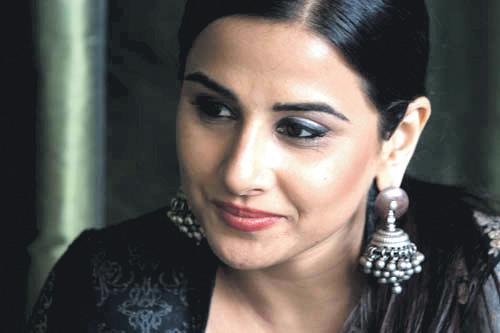
classes are designed to create dialogue between Indian and Victorian film practitioners.
A panel discussion on coproduction possibilities between Australia and India will be explored and contributions will be sought to realize this mutual cinematic connection.
The popular Western Union Short Film Competition will be held again to unearth new filmmakers and help them to realize their dreams. The theme of this year’s competition will be ‘Connections’. A panel of judges including Rajkumar Hirani, Mick Molloy, Kabir Khan and Kunal Kohli will select the winning entries from India, Australia and New Zealand. The winning films will also find exposure during the Festival.
Festival Director Mitu Bhowmick
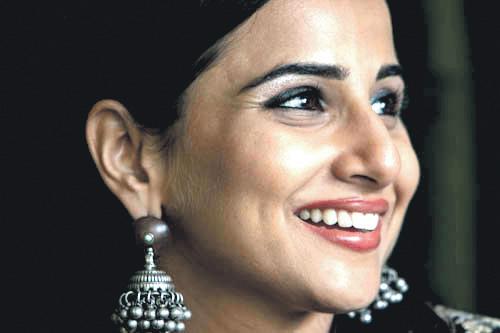
Lange has been successfully bringing Bollywood to Melbourne since the first Indian Film Festival held in April 2009. As a director of Mind Blowing Films that currently distributes Indian film and theatrical releases in Australia, New Zealand and Fiji, Mitu Bhowmick Lange lives, loves and dreams Indian films. Her passion is shared with the hard working team at Mind Blowing Films. Together they assiduously prepare for this major event by encouraging creativity and diversity.
The Premier of Victoria Ted Baillieu announced Mind Blowing Films as the successful tenderer for the presentation of the Festival this year. “The Victorian Government is committed to strengthening ties
between Victoria and India as well as developing a greater mutual understanding of our respective screen industries”, Mr. Baillieu said at the Press Conference held at the Investment Centre on Collins Street.

Indian Film Festival 2012 brand ambassador actress Vidya Balan and Festival Director Mitu Bhowmick both invited Melbournians to celebrate the films and film makers of the world’s biggest cinema industry, right in the heart of Melbourne. “This festival has always believed that cinema (like that other Indian obsession, cricket) can bridge the gap between different cultures and last year several magic moments only cemented that belief,” said Mitu.
“This year again there is something for everyone!” she added.

Honestly I don’t really know much about footy, but where else would I get to see so many hot men in the same place at the same time
Victoria Premier Ted Baillieu and cricketer Shane Warne join Vidya Balan and Mitu Bhowmick-Lange at the launch of the Indian Film Festival
Photos: Ravinder Singh Jabbal

INDIAN lINK 24/7 RADIO Or listen live on www.indianlink.com.au letyourvoice be heARD! 1 8000 15 8 47 to subscribe* STAy CONNECTED! Tuneinathome, atwork,oreveninthecar, Andturnupthevolume! wegiveyousomethingtoshoutabout *Min.12months,$9.95pm $50refundabledeposit



MAY 2012 31 INDIAN LINK Dont miss out hot deals for December call now! FROM $935. FROM $925. FROM $915. License no: 32885
Candidate capers
 By CHITRA SUDARSHAN
By CHITRA SUDARSHAN
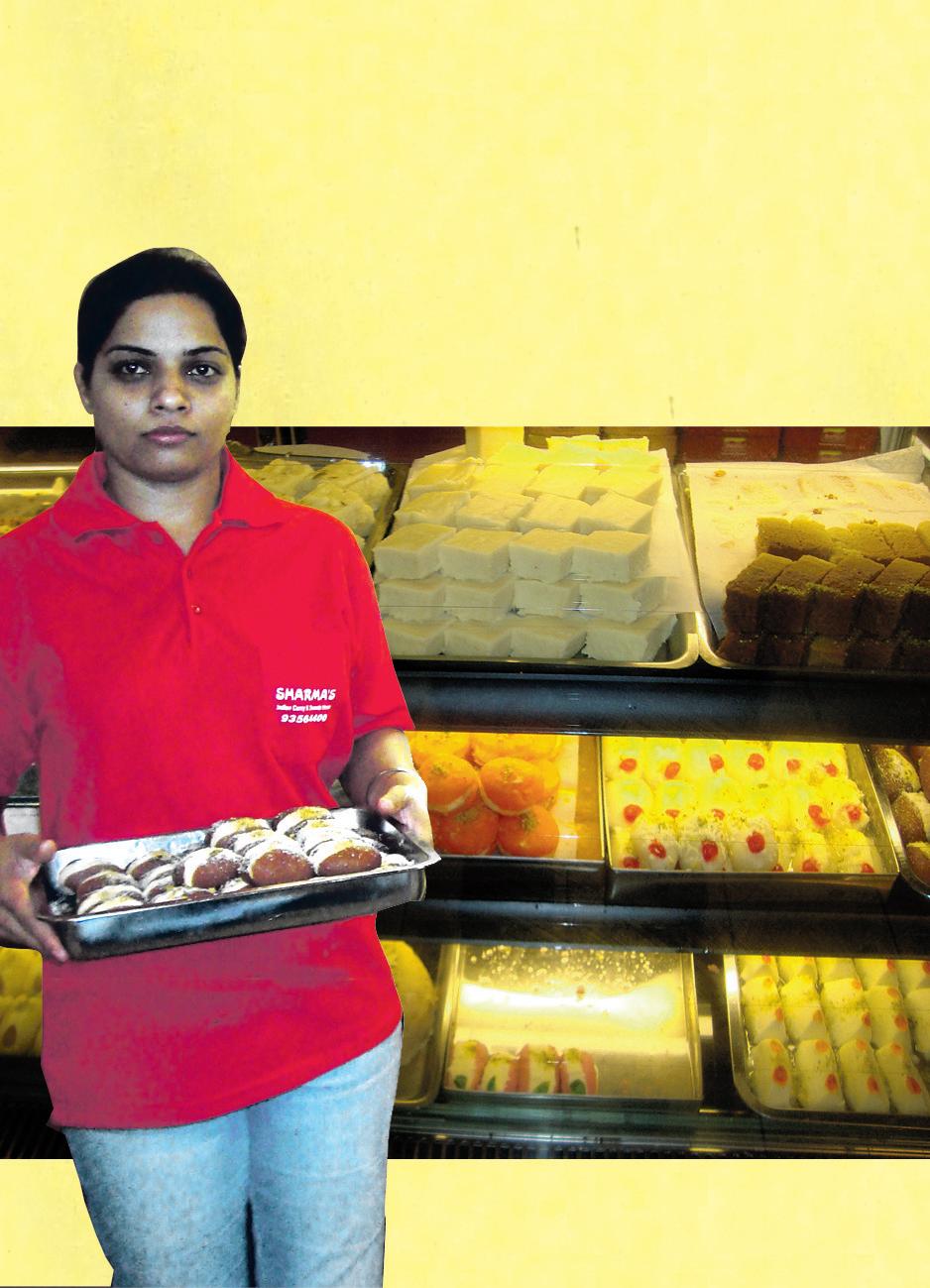

American Presidential campaigns have been the subject of several novels, movies and TV shows over the years. There is something alluring about the power and glory that the office commands – in that, it is like no other. Vinay Kolhatkar has weighed in to the genre with his debut novel, The Frankenstein Candidate, (self published in the US), which is a kind of fictional Presidential campaign trail set in 2020.

Olivia Allen is a brilliant senator – and a basically decent human being - who has been invited to join as a Vice Presidential candidate by a Congressman running for President. She is one of the major candidates along with the incumbent Vice President, and the billionaire Frank Kenneth Stein a.k.a.
“The Frankenstein Candidate”,
who is running as a self-funded independent. The reader realises quite early on that things are not as hunky dory as they seem: Allen suffers from the ‘Imposter Syndrome’, a psychological feeling that her success has been more on account of good fortune than any inherent skill or hard work; and her husband fancies another woman. Not very far into the campaign, Olivia realizes that things are not what she thought they would be. On discovering some horrifying truths about some of her fellow travellers, she makes some earth-shaking decisions that affect every major player in the race.
By the end of the book, we are privy to an assassination, enough scandals, as a result of which a candidate struggles to clear his name in court, while another is forced to withdraw from the race.
For someone who lives in NSW, Australia, Kolhatkar captures the ambience and aura of a US presidential campaign rather well: the candidates and the politics that drive them; the minders and the media; their primaries, the
numerous states, their cities, the intra-American differences; even particular football teams - are described with attention to detail and sound quite authentic. He teases out the lives of the main protagonists in ways that are quite engaging; so is his highly well-informed and fine-tuned description of the financial world and its shenanigans. The reader is driven to read on to find out how they all unravel. Kolhatkar has a Master’s degree in finance in addition to experience in the inner workings of Wall Street, and he is able to draw on that experience and his ‘insiders knowledge’ to his advantage.
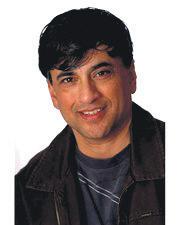
Kolhatkar has said elsewhere that he was quite uninterested in politics – indeed was quite disillusioned at the way campaigns are run – that he decided to do something about it: write a novel that would throw light on the whole process and show how it was blighted and tainted by money and machine politics – something that would be an eye opener. The reader must judge for themselves if he succeeds in doing that! In
the meanwhile, they will not be disappointed by this novel and the rollercoaster ride that is the American Presidential campaign trail.
Kolhatkar has a Master’s degree in finance in addition to experience in the inner workings of Wall Street, and he is able to draw on that experience and his ‘insiders knowledge’ to his advantage.
32 MAY 2012 www.indianlink.com.au B oo KS
Vinay Kolhatkar
The Frankenstein Candidate: The Book that Could Alter the Course of the Next Presidential Election is available for sale online at Amazon.com and other channels.
INDIAN SWEETS, CURRY & CHAT BHANDAR Indian Cuisine B.Y.O Also visit us for Indo-Chinese food, North Indian & Tandoori food - 7 Days A LL PUNJABI AND BENGALI SWEETS OPEN 7 Days 11am - 10.30 P m• s h OP 4/350 TaylO rs rD, D E lah E y T RY OUR MOTICHOOR L ADOOS, B EST IN TOWN, G UARANTEED! S PECIAL B REAK fAST ON S ATURDAY & S UNDAY E NJOY fRESH J ALEBI ’ S ! W E WILL MAKE f OR YOU IN 30 MINS ! Ph: 9356 4400 WE C aTE r FO r all OCC as ION s • h O m E DE l IVE ry aVa I la B l E SHARMA’S A captivating novel unmasks the unsavoury and intrigue-filled
side of presidential politics
The Great Game in Afghanistan continues
This strategically placed country is finally making its own rules in the midst of various players
By NOEL G DE SOUZA
In the nineteenth century there was an on-going tussle between two great European powers – Britain and Russia –in Afghanistan. The third country involved was China, then weak and battered by European nations which had extracted trading areas in Shanghai. However, Britain and Russia conceded that China had suzerainty over Tibet. Nicknamed the ‘Great Game’, it was fictionalised by Rudyard Kipling in his novel Kim which was twice made into films.
There was then no Western aim to interfere with either the culture or the governmental structure of Afghanistan. However, the British meticulously studied Afghan culture and gazetteers on the tribes in Afghanistan and the neighbouring North West Frontier Province were published.
Britain’s aim was to block Russia from access to the Indian subcontinent, much of which had been subdued by the British. India was then a collection of British provinces and Indian princely states under British protection.
Russia desired this access whilst aiming to safeguard its expansion into the Turkishspeaking areas to the north of the subcontinent in what was vaguely known as “Turkestan”. The region was later demarcated into several Soviet republics which have now become the independent nations of Kazakhstan, Turkmenistan, Kyrgyzstan, Tajikistan and Uzbekistan. Within these independent republics, a strong Russian influence continues to prevails.
considered Afghanistan to be its exclusive domain and once even mooted a merger of the two nations: and (5) India, which has no military involvement in Afghanistan but has strong development and cultural ties.
To the above we need to add Afghanistan itself. During the 19th century Great Game, Afghanistan was weak, although because of its mountainous terrain it could create trouble for any invader. In the 21st century Great Game, it zealously guards its independence and even considers the border area with Pakistan which was denominated by the British as the North West Frontier Province (NWFP) as its own. It has predominantly Afghan people including some three million Afghan refugees.
Afghans have a deep-seated relationship with India. Known as Pathans, Afghans are found in almost every city in India. In some areas they have settled for centuries such as in Gujarat, Rajasthan and Punjab. They are also found in clusters in Bihar. They came as warriors and small merchants and settled down with their families.

There are also Afghan single men who come without their families to earn a living as travelling salesmen.


During the 19th century Great Game, Afghanistan was weak, although because of its mountainous terrain it could create trouble for any invader.
Rabindranath Tagore’s famous story Kabuliwala (made into a Bengali film by Tapan Sinha in 1957) concerns one such individual.
When the Taliban government was overthrown through US intervention, India sent a plane not with food and medicines as other nations had done, but loaded with discs of music and films so that the people of Afghanistan could once again enjoy the creations of Bollywood. The Taliban had forbidden playing and listening to light music.
Afghanistan has strategic importance as it lies along the corridor between the subcontinent and central Asia. It is through the passes in its high and dry mountains that invading armies have historically moved into the verdant lands of India and Pakistan.
Historians speculate that the Aryans migrated about 5000 years ago from northern Asia. Much later, the Greeks established kingdoms in these mountains and in the adjoining lowlands of the Indus valley. The Mongol-Tartars followed from Central Asia and set up the Moghul Empire (Moghul is the Indian word for Mongol).
The Great Game of the 21st century is radically different from that of the 19th century. Several powers are involved: (1) Russia through its allies within Afghanistan and its proxies in the neighbouring central Asian republics; (2) the USA with its NATO allies and Australia; (3) a powerful and resurgent China; (4) Pakistan which has
The Prime Ministers of India and Afghanistan have had frequent contact. India signed a strategic partnership treaty with Afghanistan in 2011. India has given massive aid (2 billion dollars) to help fund highways and build a new parliament building.
The new Great Game in Afghanistan has morphed from being a military incursion intended to remove the Al Qaeda and the Taliban from power, to fighting a cultural war. In the 19th century neither the British nor the Russians attempted to promote cultural change. Such change has been looked upon by extremists as an affront to their centuries old traditions. Democracy had been non-existent in Afghanistan till now. Rather, warlord domains were the order of the day. Female education and the rights of women were unheard of.
The future will depend upon the outcome of the war between modernisation and tradition. Similar wars were fought in 19th century Japan and in a different way in 20th century China. India is still encountering similar problems In a variety of ways, especially in its remote areas.
MAY 2012 33 INDIAN LINK
opinion
Ignorance is not bliss
more disturbing about the Mumbai-Delhi axis’ general disinterest in anything east or south.
Vanakkam and welcome back to Chennai, one of the hottest cities in India during the summer. Although built along the coast, seaside Chennai only seems to get the cool sea breeze in winter. Without this respite, the sweaty heat lasts long into the night, and on the hottest of days everything seems to radiate the sun’s warmth.
The Indian media is now flush with stories of the rising summer and the impending monsoon along the west coast. For Chennaikers however, the monsoon is still at least six months away. While watching India’s plethora of news channels, I can’t help but sense a deep disconnect between the India of people’s minds, and the modern geographic boundaries. Listening to news emanating from Mumbai and Delhi, it would seem that India doesn’t extend any further east or south than the Western Ghats. Of course, the biggest, most important news so often occurs in centres of population – this is true even in Australia, where nearly all national news programmes are produced in Sydney or Melbourne. However, there is something altogether
Many years ago, an acquaintance once told me that all Indians speak Hindi. I challenged him on that, saying that the Mahl speakers of Minicoy Island, or the Tibetean language-speaking people of Arunachal Pradesh might argue otherwise. To this he replied, “Yeah, but they’re not really Indian”. I was aghast – how could he simply write off thousands, possibly millions of people, as “not Indian”, simply because they didn’t look or sound like him? And in a country like India, which prides itself on pluralism? I dared to stoke the fire by suggesting that if those people aren’t Indian, perhaps India should give those territories up. Needless to say, the fury that swelled in his eyes informed me that now would be a good time to stop talking. Unfortunately, this was an extreme manifestation of a widespread problem which I was to encounter many times again.

Like most prejudices, this one is based on ignorance. But at what cost? A trigger issue for many Indians is the Kashmir conflict. Yet how many Indians know which languages are spoken in the disputed territory? How many people could locate Gilgit on a map? Does anyone actually know the current status of the conflict at the United Nations? Or do we just know that it’s “ours”, not “theirs”, and that’s why we
should fight? In his excellent book Superpower, Raghav Bahl speaks of the “siege mentality” of Indians; that is, a deep suspicion of the countries which occupy India’s borders, and a knee-jerk hostility to any action by them. Through the sweep of history, Bahl makes sense of why this has developed. But as India emerges as a superpower, it is time for all of us to understand.
The monsoon, although much less volatile than the Kashmir conflict, is a case in point. A quick survey of my fairly educated, reasonably worldly contacts from the western and northern states revealed that all but one were blissfully unaware that India experiences more than one monsoon each year.
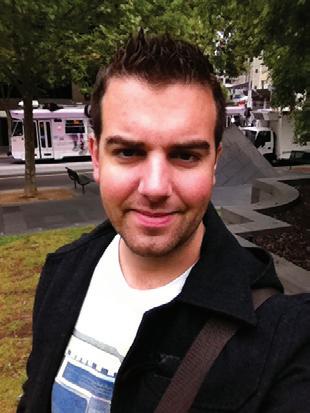
A recent commercial for The Hindu newspaper played on this, by asking people to name India’s vice-president and Hrithik Roshan’s pet name. For the purpose of the commercial, most people could identify only the latter. Taking inspiration from this, I decided to cast a wider net with my research, to examine what a selection of Mumbaikers and Delhiites know about India today. In my quizzing, few knew the capitals of Tripura or Meghalaya, and none that Hyderabad was once an independent state, forcefully incorporated into India by military action. Two people weren’t aware that Chhattisgarh was now a state of its own, two more thought that Delhi was in Uttar Pradesh! And no-one was
aware that India fought a short war with Portugal over Goa, in which 22 Indian servicemen died, and which is still referred to in much foreign literature as an ‘annexation’ or an ‘invasion’. Now there’s something to get angry about!
History and politics aside, the point is that we all need to start recognizing India as a whole. 28 states and 7 union territories? We should be able to name them all, plus their capitals. And we should be able to call them all Indian; otherwise maybe we shouldn’t call ourselves Indian. Things are definitely improving; the days when people called for Dravida Nadu or Khalistan are now but a memory. However it has been shown throughout history that separatist groups thrive on exclusion, so I worry when I hear of ignorance or outright hostility to India’s various minorities, some of whom have a legitimate axe to grind. We need to know about India because knowledge is power, and if Indians are knowledgeable, then we will be powerful.
Ok, so I shouldn’t say ‘we’, because I’m not really Indian. But at the very least, in September, when everyone else is celebrating the end of the monsoon, spare a thought for us down in hot-asHades Chennai, where we know the real meaning of the phrase ‘Indian Summer’!

34 MAY 2012 www.indianlink.com.au AN Au SSIE B oy IN C h ENNAI
Listening to news emanating from Mumbai and Delhi, it would seem that India doesn’t extend any further east or south than the Western Ghats.
We need to know about India because knowledge is power, and if Indians are knowledgeable, then we will be powerful.
Being truly Indian means possessing indepth knowledge of the country, and not just of one’s state
y TIM BLIGHT
On the periphery: Lakshadweep
The asiatic faces of Arunachal Pradesh
Photo: Lenish Namath
Photo: Diganta Talukdar



MAY 2012 35 INDIAN LINK $829* $1049* $859* $929* $835*
Taxes as on 28th Apr 2012 and are subject to change. Fares can change or be withdrawn without notice. Price beat guaranteed.
*

36 MAY 2012 www.indianlink.com.au

MAY 2012 37 INDIAN LINK
Confluence of cultures

 By PETRA O’NEILL
By PETRA O’NEILL
for centuries, Malaysia was at the crossroads of trade between China and India, strategically positioned between the Indian Ocean and the South China Sea.
53% of Malaysia’s population of 28 million are Malay, 26% Chinese, 12% indigenous mainly from Sabah and Sarawak, and 7.7% are Indian. This cultural heritage is reflected in the architecture of Kuala Lumpur, Malaysia’s capital, with Moorish and north Indian Mughal influences, Hindu temples, Buddhist pagodas, mosques and elegant British colonial buildings. Lying at the juncture of two rivers, Kuala Lumpur means “muddy confluence” and was founded in 1857 by 87 Chinese miners who set up camp here. Within a month, all but 17 had perished from tropical diseases. That proved an insufficient deterrent once tin was discovered, and Kuala Lumpur became a
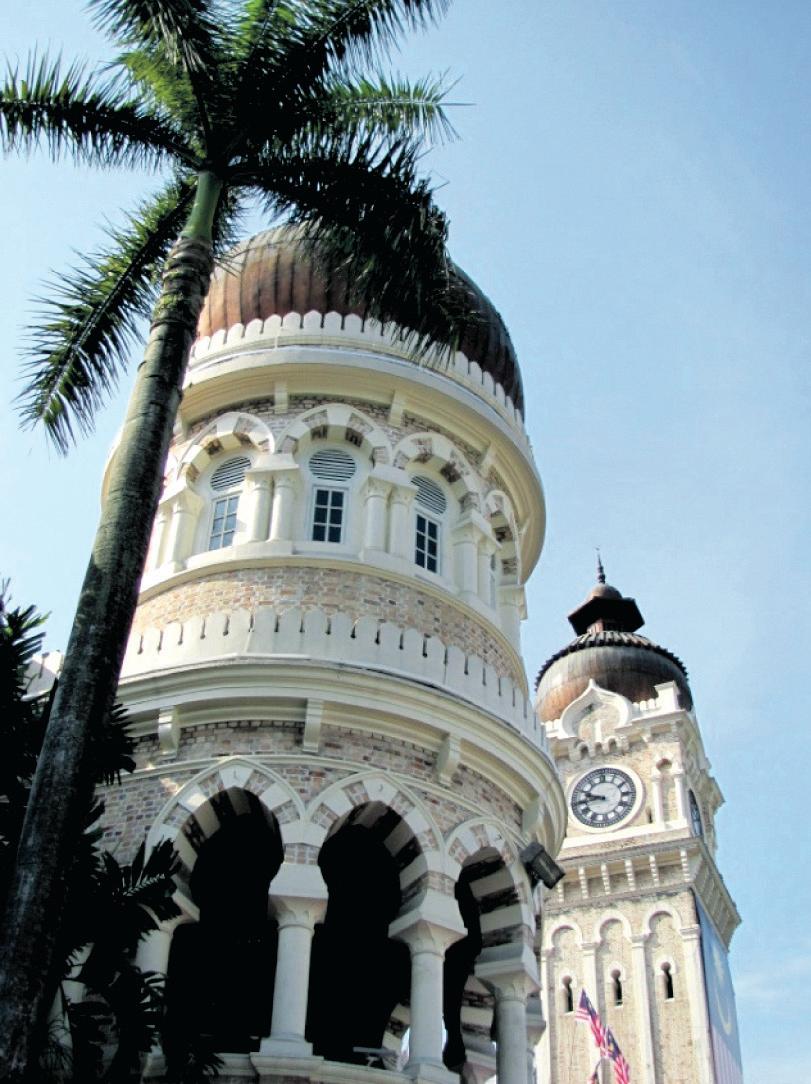
boomtown. With its modern skyscrapers, diversity of its cuisine and luxurious shopping malls, Kuala Lumpur has emerged as one of Asia’s best stopover destinations well deserving of several days stay.


To appreciate the city’s historic architecture, it is worth spending time walking around Merdeka Square where independence from Britain was declared in 1957. Here you can view the Royal Selangor Club and the Moorish style Sultan Abdul Samad Building built in 1897, Kuala Lumpur’s oldest landmark. Formerly the Selangor State Secretariat, it now houses the Federal and High Courts.
Opposite, the National Textile Museum built in 1896 demonstrates the success of an adaptive reuse of a historic colonial building. The displays of jewellery, songket woven with gold and silver thread, and the ceremonial cloth worn by the Iban and Orang Ulu tribes of Sarawak are stunning. Then follow the riverside promenade to Masjid Jamek, built in 1909, the oldest mosque in the city.

Nearby, Kuala Lumpur Railway Station built in 1911 by the same British architect who
designed Masjid Jamek, is built in the same north Indian Mughal style. Fuel up with a glass of teh tarik, a frothy brew of black tea and condensed milk at Restoran Teratai on the ground level of the Dayabumi building.
The architecture alone is reason enough to visit the turquoisedomed Islamic Arts Museum. Built in 1998, the white interiors are spacious and filled with natural light, perfect for viewing the exquisite collection of decorative art from Asia, India and the Middle East.
Kuala Lumpur also has several parks, and close to the Islamic Arts Museum is my favourite park – the 92-hectare Lake Gardens built around an artificial lake with beautifully landscaped
gardens. It also has an Aviary, Butterfly Park and Orchid Garden with over 800 orchid species from Malaysia alone. Weekends, afternoons and evenings are the best times to explore Little India, just off Jalan Sultan Abdul Rahman, where bustling narrow streets have remained largely unchanged. Offering tee shirts, jeans, fabrics, saris and all manner of hair decorations, food and snacks for sale, this is the heart of the mostly Tamil Indian community. Here you will find numerous restaurants with great food at bargain prices.
Another bustling neighbourhood is Chinatown where you can see many examples of the south Chinese shop house,
TRAVE l
Still a popular stopover destination, Kuala Lumpur offers enough to see and experience for a longer stay
elongated and with louvered windows and verandas borrowed from Malay architecture, often with ornamental facades. Here I enjoy visiting Peter Hoe for quirky gifts. Tucked away in a narrow street is the Sri Mahamariamman Temple founded by the Pillai family in 1873, initially as a private shrine and currently the oldest functioning Hindu temple in Malaysia. Built in the south Indian style, the temple has a tower that is 22.9 metres high decorated with depictions of Hindu deities.
When the day becomes too hot, do what the locals do and head for one of many luxurious shopping malls including the Suria KLCC and the Pavilion, that offer every conceivable designer label to gaze at, including my favourite, the bold and colourful clothing available at Shanghai Tang. On level 3 of the Suria KLCC you will also find Galeri Petronas that displays contemporary Malaysian art.
Malaysia is one of Asia’s best
Travel noTebook
KUALA LUMP U R
GETTING T h ERE
Malaysia Airlines flies frequently to Kuala Lumpur from Australia.

wh ERE TO EAT
food destinations and although Kuala Lumpur boasts its share of renowned chefs, a vast array of cuisines – Malay, Chinese and Indian - is found in the upmarket food halls within shopping malls and at open-air hawker centres. For a quick pick me up snack, try roti canai or curry puffs, for lunch a thali, spicy laksa soup or mee goreng, and for a sugar fix try the brightly coloured desserts made from coconut milk. Choose the stall with the longest queue.
The modern high-rise buildings to the north east of the city, especially the iconic Petronas Twin Towers, are well worth a look. The towers light up the night sky, and like twin beacons, allow you to always know where you are. Standing at an awesome 452m with 88 stories, the towers were the tallest buildings in the world from 1998 to 2004.
Kuala Lumpur has morphed into a safe, clean city, with excellent shopping, restaurants, fantastic hotels to suit every budget and many attractions to visit. I’ll be back again soon, because each time I visit, there is always something waiting to be discovered.
Clockwise: Main pic: Petronas Twin Towers, image courtesy

Tourism Malaysia
Lakshmi Vilas Restaurant
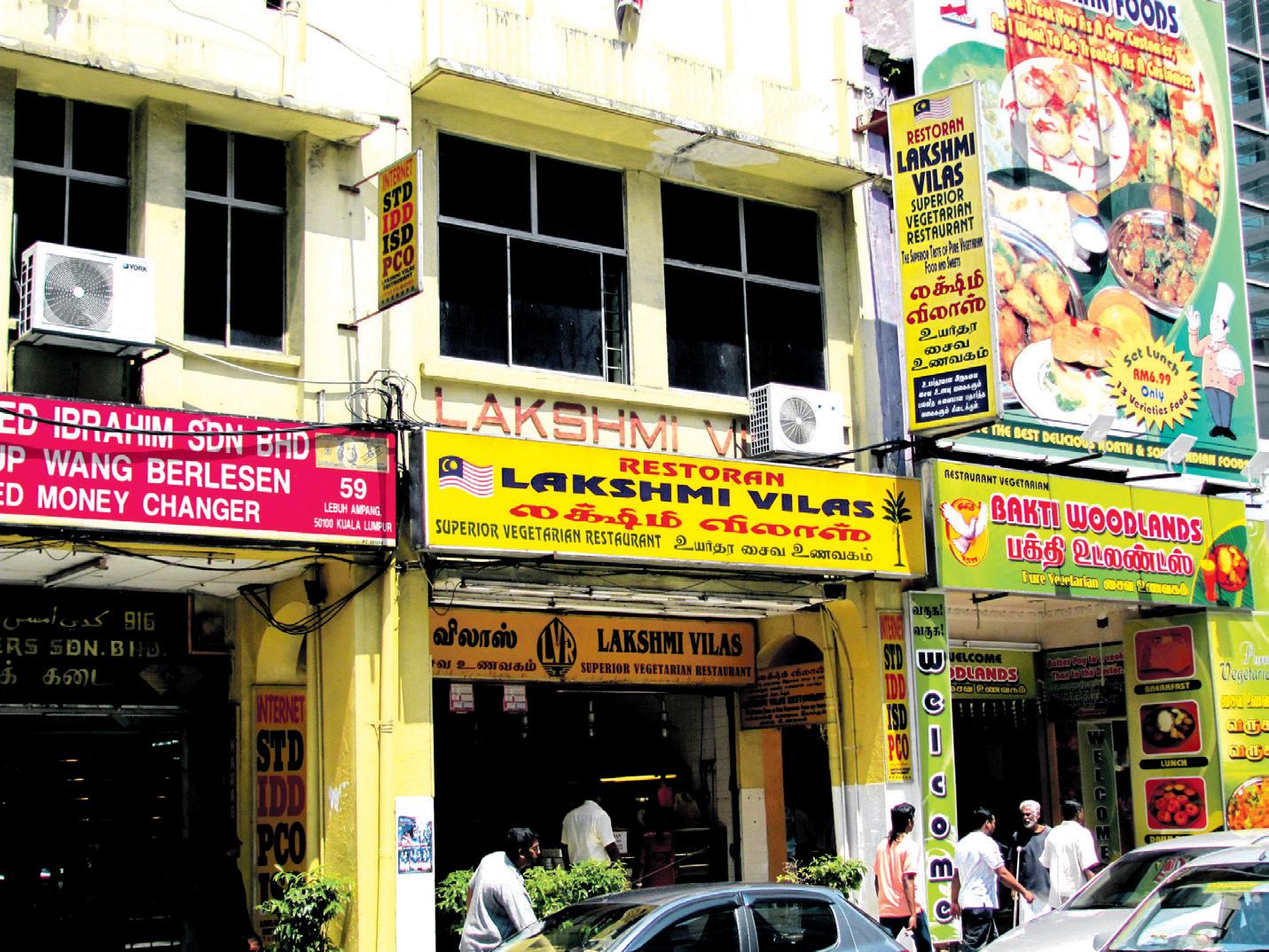
Little India
Fresh food delivery

Exquisite jewelled art

Islamic Arts Museum
Mandarin Oriental Hotel
Malaysia Tourism Office
With its modern skyscrapers, diversity of its cuisine and luxurious shopping malls, Kuala Lumpur has emerged as one of Asia’s best stopover destinations well deserving of several days stay
Old style Kopitiams or coffee houses, once an integral part of Malaysian society, are hard to come by these days. Yut Kee, 35 Jalan Dang Wangi, has been serving coffee since 1928, and is now in its third generation. Restoran Teratai on the ground level of the Dayabumi building by the river has good coffee and Malay food. In Little India, I like Saravanaa Bhavan, 1007, Selangor Mansion, Jalan Masjid India, part of the Indian chain and Lakshmi Vilas Restaurant, 57 Lebuh Ampang. Good places to eat are to be found everywhere.
wh ERE TO STAY
A favourable exchange rate translates to Kuala Lumpur being a bargain destination. The emergence of clean, comfortable, newly refurbished and centrally located hotels achieves further savings. Recommended budget hotels include the Citin Hotel Masjid Jamek and Tune Hotel, though there are other good budget hotels, many in Little India.

For a splurge, the splendidly deluxe Mandarin Oriental offers city skyline views and rooms that feature king-size beds and marble bathrooms. Just metres from the Petronas Twin Towers, Suria KLCC and a lake and garden ideal for a pleasant early morning or late afternoon stroll, .....
The Club Lounge is extraordinarily good with a welcoming, clubby ambience. The food and refreshments on offer throughout the day make it hard to leave. The pool is lovely, the gym wellequipped with trainers on hand, and the massage from the hotel spa the best I have ever had.
G ETTING AROUND
Access from Kuala Lumpur International Airport (KLIA) to downtown takes 28 minutes by train or one hour by taxi or bus. Kuala Lumpur’s public transport system is inexpensive, efficient and frequent, but negotiating three separately run monorail, commuter and light rail systems is challenging for the uninitiated. Taxis are inexpensive and numerous, just be alert as to where you are heading.
TIP
At KLIA, not having access to an airline lounge is no obstacle to boarding your flight feeling buffed, refreshed and ready to go. The Transit Hotel offers a shower, towel and soap for RM20. The Plaza Premium Lounge charges RM25. Both are open 24 hours.
Money-changers give the best rates, higher for larger denominations and prefer notes in pristine condition. While Kuala Lumpur is a relatively safe city, take care with your wallet while on trains and buses, at stations and when walking in Chinatown and Chow Kit. My overall impression is that Kuala Lumpur is becoming more affluent, relaxed and welcoming to visitors.
INFORMATION
Australian passport holders do not need a visa to enter Malaysia for a visit of up to three months, provided their passports are valid for at least six months on arrival and they have a return or onward ticket to another international destination. For citizens of India, Sri Lanka, Pakistan and Afghanistan, a visa from the High Commission of Malaysia in Canberra is required. Tourism Malaysia has many brochures and is at Level 2, 171 Clarence Street, Sydney Phone: 02-9299 4441 Email: malaysia@malaysiatourism.com.au
MAY 2012 39


40 MAY 2012 www.indianlink.com.au

MAY 2012 41 INDIAN LINK

42 MAY 2012 www.indianlink.com.au
In pursuit of a childhood dream
CHANNA WICKREMESEKERA on an up and coming cricketer
Kevin Indulanka Tissera first went to the Melbourne Cricket Ground as an eight-year-old. His artist dad Vernon had created a portrait of Sri Lankan ‘spin wiz’ Mutthiah Muralitharan which he wanted to present to him in person. Understanding that the team was training there, Vernon decided to take his two boys Kevin and George to the ‘G’ to present the portrait to the Sri Lankan hero. Whilst such a trip to the ‘home of sport’ may have been one to saviour for some, at the time it was not one Kevin relished. Simply put, cricket was not one of his passions. His older brother George was the cricketer in the family.
Forward ten years, and all that has changed. In fact, Vernon claims, that trip to the MCG was the changing point in Kevin’s life.
“At the MCG, I was told by one of the Sri Lankan officials that I would be able to meet with Murali and present him with the painting,” recalls Vernon. However sent on somewhat of a 90-minute outlandish chase, Vernon was despondent as he found out that Murali and the rest of the Sri Lankan team had left the venue.
Tired, sad and disappointed, it was at this time that Kevin spoke up and promised his dad that he would one day play at the MCG.
“Prior to that, Kevin didn’t really take to cricket as much as his brother, but something changed that day.” (Later on that day Vernon was able to hand over his painting thanks to the helps of Chaminda Vass).
That was the beginning of a dream for young Kevin. Now, the boy who didn’t necessarily want much to do with cricket, grew an unbridled love for the game. He began to read avidly about cricket, and got involved in the game at school. Cartoons now gave way to cricket on TV. While his brother George played the game more as a means of relaxation, Kevin seemed to indulge in it with a passion.
Kevin’s ultimate passion for the game was rewarded recently when he was chosen as one of three young Victorians to participate in Cricket Australia’s new initiative, the Multicultural Leadership Program. The program, which is aimed at changing the face of Australian cricket, will provide the participants the opportunity to
gain an understanding of all the facets of the game – in and out of the grounds – and turn them into multicultural ambassadors for the sport in Australia.
Since then Kevin had grown and matured into to fine young cricketer. Representing his schools and clubs from the age of 9 and onwards, he had developed into a promising right arm leg spinner with a penchant for aggressive stroke play. Under Kevin’s deputy leadership his primary school, St. Joseph’s in Springvale, Melbournbe won their maiden premiership in 2005. This love for the game would only become deeper whilst at secondary school, where he represented Mazenod College’s school cricket team in every year level from 7 to 12, even taking up leadership responsibilities as vice-captain in Years 8 and 9 to captaincy in Year 10, as well as captaining the First XI in Year 12.
Whilst there have been setbacks, where Kevin’s talents had not always been recognised at club level, he persisted in his quietly determined way, not allowing little obstacles to halt his progress. To take his cricket forward, he began to get expert coaching by Owen Mottau and Dr. Rene Ferdinands, both of whom, as Kevin explains, continue to play a crucial part in his development.

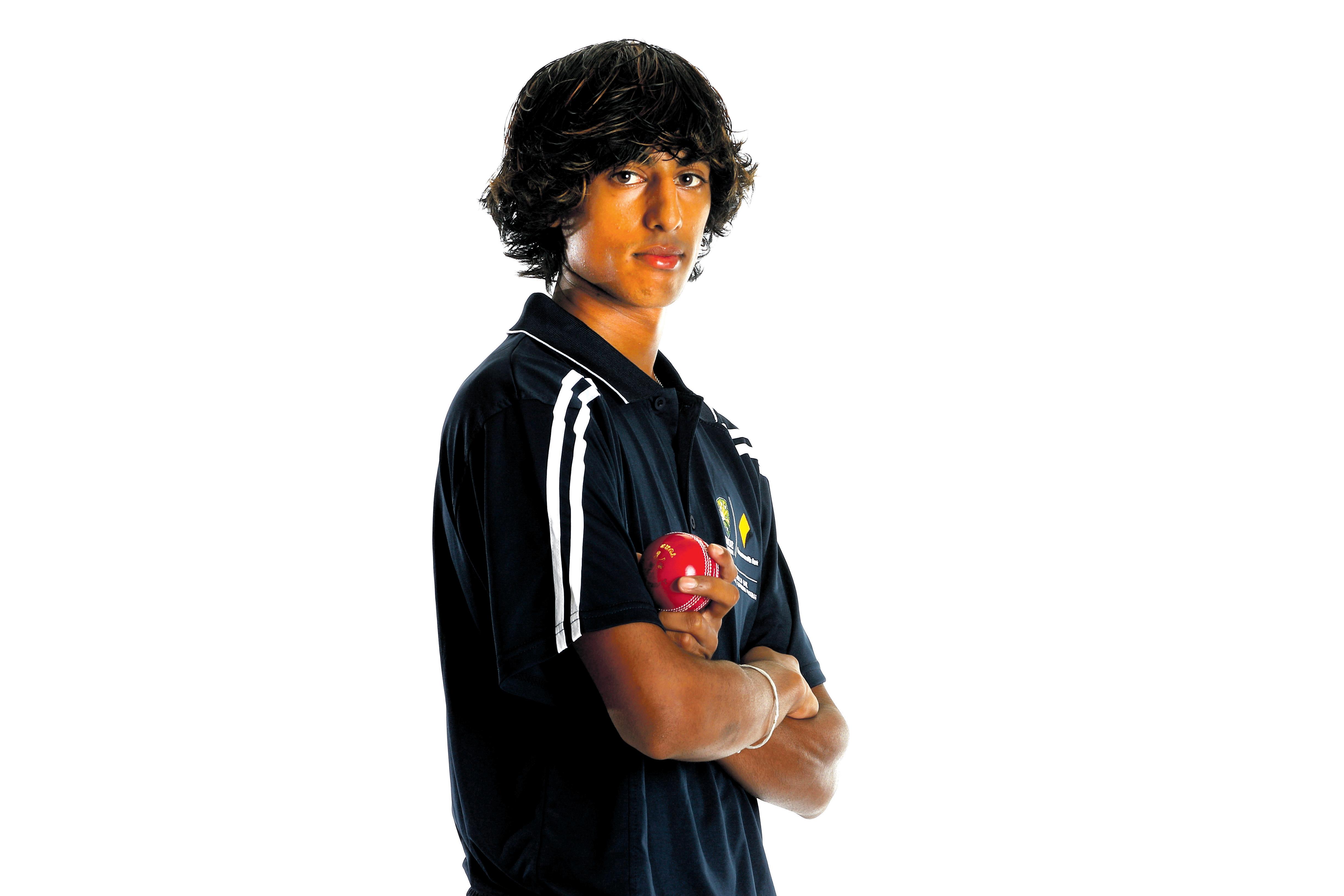
“Without the likes of Owen Mottau who has helped me wholeheartedly with my batting and love of the game, and Dr. Rene Ferdinands who has taken the time out of his busy schedule to work closely with me so that my ‘leggies’ develop, I wouldn’t dream of being in the position now where I can potentially go far with my cricket,” says Kevin.
He also said that he has benefited from the Young Cricketer’s Development Program (TYCDIEP), a unique program developed in Melbourne. Cofounded by his father and one of his close friends Johann Jayasinha, the not-for-profit organisation takes young boys on cricket tours so that they may experience the life of an international cricketer with regards to touring, media commitments and the like.
Participating in the inaugural tour to Sri Lanka in 2009, and the following tour in 2010 as captain of the team, this as he puts it, is where he really wanted to be as a cricketer.
“The tours were some of the
Kevin’s ultimate passion for the game was rewarded recently when he was chosen as one of three young Victorians to participate in Cricket Australia’s new initiative, the Multicultural Leadership Program.
best times you could have. Not only did you get to experience some of the things international cricketers do, but you do so with your mates around you. Captaining the team in the second tour was a privilege, and to be able to win four out of the six games we played was a massive improvement from the previous year, and really solidified the belief that anything is possible with a bit of hard work.”
Despite his modest successes in cricket so far, Kevin has not allowed the sport to totally dominate his life. He studied hard to obtain excellent VCE results and enter university this year. However, for the first six months to a year, his studies will take a back seat as he flies to Sri Lanka where he will be training during the off-season. This can only lead to greater success for this affable young man who lives and breathes the sport.
Kevin has been blessed by a family that understands his passion. His father Vernon who is Sri Lankan and mother Lethi
who is Indian, both love the sport and have supported and nurtured Kevin’s love for it. His brother George has always been a great foil to the rising young star, despite their being many a fight between the two owing to a game of backyard cricket! Whilst thanking his family, Kevin also mentioned some of the other people who have helped him indefinitely who have shaped his
actions today. They include Owen Mottau, dr. Rene Ferdinands, Ravi Rathnayaka, Manjula Munasinha, Duleep Saraweera, Adrian Jones, Peter Mathison, Johann Jayasinha, Kirk and Julian Lawrence, Aldo Cerner and Dr. Nihal Henatigala. Perhaps it is too early to predict but given Kevin’s passion it may not be long before he can keep that promise to his father. We all wait for that day.
MAY 2012 43 INDIAN LINK S po RT

44 MAY 2012 www.indianlink.com.au
The ticket to freedom
By RANI JHALA
Jay could not believe that he had made it!
He was seated in a room with hundreds of other applicants, strangers in every sense of the word, yet with whom he shared a common dream. To be the chosen one!
While the others used the ‘waiting’ time to socialise or

rehearse, Jay chose to ponder over the journey that had brought him there. Only seventeen, he was mature beyond his years. The death of his parents when he was eleven forced that on him. His sister was only twenty-one when she accepted responsibility for him and became his guardian. For the next six years, she became his mother when he needed caring, and his father when he needed discipline. But he did not mind, for both those roles brought with them, her unqualified love.
And it was that very protective care that had resulted in their first
fight, a fight that had lasted over three months and continued to this day, so much so that even on this, his most important night, she was not there with him. It was the first time she had not been supportive. It was the first time she had voiced an objection. Even now he could hear her words as clearly as if she was standing in front of him.
“Jay, this is crazy. You don’t know what you are walking into,” she had said vehemently.
“Didi, I know what I am doing. You yourself said that I am good. No, not good, the word you used
was ‘best’,” Jay had replied.
“Even the ‘best’ can be hurt. I do not want you to be hurt,” she had said.
“But it’s a once in a lifetime opportunity. This could make my life. Please don’t stop me, didi,” he had pleaded.
“At what cost, Jay, at what cost?” she had questioned.
“Didi, if I fail, I fail. But if I don’t give it a shot, I will always regret it,” he had countered.
“You have your HSC coming up. It’s better that you concentrate on that. That is more important for your future,” she had said adamantly.
“I won’t let this affect my studies,” had been his honest promise.
“Jay, fame brings with it ‘notoriety’ for there will be many who will try to pull you down, and money brings with it ‘greed’ and a ‘pretentious life’. We don’t want that. Surely what we have is enough. I will always be there for you. You do not need to worry about money,” she had said.
“Didi, I am not doing this for money. I am doing it so that I can use the gift that I have been given. It is useless having a voice if noone else can hear it. It is useless writing words that no-one else can read,” he had said, desperately trying to rationalise his thoughts.
“I know all that, I am the adult here. But I also know of the dangers of which you are not aware. Not many have walked on the path you are choosing, and come out whole at the end of that journey. You are complete. Don’t go and shatter yourself just to get known. You have real talent. Let time discover you,” she had said.
“What if that time is now? What if this is how it wants to discover me?” he had questioned.
“What if you are left dejected, humiliated or discouraged? You have invested so much time. Why do you want to risk it all, for this?” she had counter-questioned.
“Didi, what is really worrying you? You have always asked me to face life’s challenges head on. You have always guided me to fight every battle, and yet at the first sign of competition you are asking me to run away. You know me better than anyone else. Fame will not turn my head. Money will not ‘corrupt’ me,” he had said determinedly. His didi was then silent.

“Didi, you will not lose me,” he had added when the silence was prolonged.
“Jay, do you not see how ruthless the selectors can be? Do you not see how they tear a person
down when it suits them? Do you not see the emotional rollercoaster to which the candidates are subjected? You won’t suffer alone, I too will suffer, each moment and each heartache with you,” she had said emotionally.
“Ah didi, they do that if you not the best, and you have already said that I am the ‘best’,” he had joked, knowing that she was not convinced.
“Jay, what will people say! That I made my little brother go out and sell his talent because his parents were not there to protect him. And that I left a minor at the mercy of judges who insult and ridicule the contestants to improve the rating or to demoralise another judge’s team,” she said, finally relayed her fear.
“It is you who looked after me, not the people you worry about. I only care what you think. And I am strong enough to take what the judges dish out. I can cope with everything as long as I know I have your permission. Let me try. Please!” he finally pleaded.
After many silent moments, didi had finally relented. “Okay Jay, go. You have my permission and my wish for your success, but I cannot come with you. I cannot go through that pain,” she had said with finality. She left the room while he watched his sister walk away from him, for the very first time.
And now he was here and his name was being called. Jumping out of his reverie, he rushed to the stage. His heart was thumping. He looked at the three judges. They smiled and he introduced himself. He could see what they were thinking. Their thoughts were written across their faces. Another kid with a guitar thinking he was good and looking for fame! For the first time he stood alone. For the first time, his didi was not there.
As the hall fell quiet, he strummed the first chord. By the time he had completed his song, every person in the hall was standing, but more importantly he was receiving a standing ovation from the judges. He had made it! And there, by the exit stood his didi with tears streaming down her cheeks. Holding her was her fiancé. They were to marry the very year his parents died. With that tragedy, the two had put their marriage on hold until he was eighteen, so that she could fulfil the responsibility left to her. One more year, and he would give her the freedom she so richly deserved. And tonight’s victory was the ticket to that freedom.

MAY 2012 45 INDIAN LINK FICTI o N
By the time he had completed his song, every person in the hall was standing, but more importantly he was receiving a standing ovation from the judges.
A journey that begins alone spells the end of another, more precious one

46 MAY 2012 www.indianlink.com.au
DAL Doing the
sherYL DIXIt
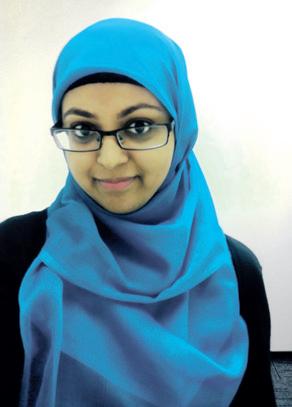
Not long ago, an Aussie friend asked me for a good ‘dal’ recipe. Being a fan of Indian food and dal in particular, she hadn’t quite grasped the concept of making a good, wholesome, flavoured dal. She didn’t even know that different varieties existed, as she simply picked any packet labelled ‘lentils’ from the supermarket. Now in most Indian households, dal is pretty much a staple on the weekly menu, so there may not be much we can learn about cooking a good dal. However, if you have non-Indian friends who need a few hints, these recipes will help tickle their tastebuds. Also, the recipes below may seem a tad ‘Aussified’ to you, so enhance the taste by upping the quantity of spices to suit your palate. And instead of the presoaking and boiling in a thick bottomed saucepan, simply pop the dal into a pressure cooker to save time.

Mung dal
This is a simple recipe and much of the flavoUr comes from the dal itself.
2 cups whole green mung dal
1 medium sized onion, finely chopped
1 medium clove garlic, finely chopped
½ tsp grated ginger
1-2 green chillies (optional)
1/3 tsp turmeric powder
4-5 whole peppercorns
2 tsp vegetable oil
Salt to taste
1 tsp lemon juice
1 tsp mustard seeds
1 pinch cumin seeds
1-2 dried red chillies
2 tsp oil
1 tbsp chopped coriander
Soak the mung dal overnight in water, ensuring that the level is at least a couple of inches over the dal. The mung beans will absorb the water and puff up to at least twice their original size.
Drain the mung beans, add fresh water and salt, add green chillies and boil in a closed saucepan on medium heat, stirring from time to time to check if the beans are fully cooked. Once done, pick out the green chillies and keep aside.
In a separate saucepan or heavy
bottomed wok, add oil. When hot, turn down the flame and add the mustard seeds, cumin and red chillies. When the mix starts to splutter, add the garlic, ginger, peppercorns and onion, and fry for a minute or two, until the onions turn soft. Next, add the turmeric powder and stir for a minute. Next, add the boiled dal mix and thoroughly stir through the tempering or tadka. Simmer for 2-3 minutes, then turn off and garnish with fresh chopped coriander. Add lemon and stir through. Serve hot with rice or naan.
Dal Makhani
My personal favourite, probably because it’s a nice, rich one with cream and a bit of butter.
2 cups black dal (the orange lentil with the flat brown husk still on)
½ cup red kidney beans
1 medium onion, chopped
1 medium tomato, chopped
1 medium clove garlic, chopped
½ tsp grated ginger
3 bay leaves
7-8 whole peppercorns
7-8 cloves
2 medium cinnamon sticks
2 whole cardamom
1 red chilly, broken into two pieces
1 level tsp turmeric powder

½ tsp each, cumin, coriander, curry powders
Salt to taste
½ cup regular or sour cream (low fat could be used)
2 tbsp vegetable oil OR 1 heaped tbsp clarified butter or even margarine
Soak the dal and kidney beans together for a few hours, until the beans absorb water and puff up. Drain the water and place in a thick bottomed saucepan, adding water to cover the dals by about an inch. Place on a low flame. Next, add the chopped onion, tomato, garlic, ginger, bay leaves, peppercorns, cloves, cinnamon sticks, red chilli, turmeric and other powders, and salt. Slow cook for at least two hours, 45 minutes in a pressure cooker on low flame. Stir occasionally to check if the dal is cooked through. Once the dal is done, add the oil (preferably clarified butter/ margarine) to a small frying pan and heat gently. Once hot, add a pinch of turmeric powder to the oil and leave for about 20 seconds. Next, add this mix to the dal to temper it. Take the dal off the fire, and gently pour in the cream, taking care to stir carefully so that the cream doesn’t
break. Serve immediately.
This dal cooks beautifully in a slow cooker, as the spices completely mingle with the dal and its aroma is absolutely heavenly. Follow the same process once the dal is cooked through.
A dal makhani masala powder is also available from Indian shops, which can be used as a substitute to the other powders. For a richer taste, drop a small knob of butter into the hot dal just before serving.
Daily dal
This is a generic recipe for cooking any kind of lentil, the toor, red, yellow mung or thicker grained split peas or chana dal varieties. You can even add two or more to make a more interesting mix.
2 cups of any dal, soaked for at least a couple of hours.
1 medium tomato, chopped
1 small onion, chopped
1 large garlic pod, chopped
1 medium green chilli (optional)
½ tsp turmeric powder
Boil the dal in a large saucepan together with the turmeric powder, tomato, onion, chilli and garlic, adding salt to taste. To make a thicker dal, add less water, to make a thinner, soup-like version, add more water. The approximate measure should be 1cup dal = 2 cups water. It is usually easier to cook dal in a pressure cooker, it’s faster and can be cooked without presoaking the dal.
For the tempering:
½ tsp mustard seeds
½ tsp whole cumin
½ tsp turmeric powder
1 red chilli whole
2 tbsp vegetable oil
OR
1 tbsp ghee or clarified butter
Heat the oil/ghee in a small frying pan or tadka kadhai, add the mustard seeds and let them crackle. Next, add the cumin, red chilly and turmeric powder. Fry for approximately 30 seconds, then pour it into the cooked dal mixture. Take care as the mix will sizzle a bit. Stir through thoroughly.
Garnish:
Freshly chopped green coriander
A tablespoon of fresh, grated coconut
If you’d like a treat, drop in a knob of butter, organic, if it will make you feel less guilty
tips
• For a healthier version of dal, add finely chopped or even a cup of fresh spinach to the dal when boiling. Alternatively, fry the spinach after the tempering, and then add the lot to the dal
• Pick out the green chillies after boiling them in the dal. they add a subtle flavour, but could give someone a nasty surprise if bitten into.
• When using lentils, the thicker variety like split peas should be soaked for longer, as they take more time to cook
• Add curry leaves if you have them, to the tempering, but they’re not absolutely critical Substitute turmeric powder for a generic mild curry powder if you like •the trick is in the tempering. if you prefer a plain dal, a simple tempering will do; if you prefer something a bit more elaborate, when tempering, fry up ingredients like the onion, tomato, garlic, etc., and add them to the plain dal • if you’re the adventurous type, add a blend of subtle spices to the dal, eg. turmeric, cumin and coriander powder in equal 1/3 tsp quantities. Don’t add heavy spices, or the flavour could get mixed, and it won’t be fit for the dog or the ex….well, maybe the ex! enjoy!

MAY 2012 47 INDIAN LINK FooD
she didn’t even know that different varieties existed, as she simply picked any packet labelled ‘lentils’ from the supermarket.
M.B.B.S, FRANZCOG Obstetrician & Gynaecologist

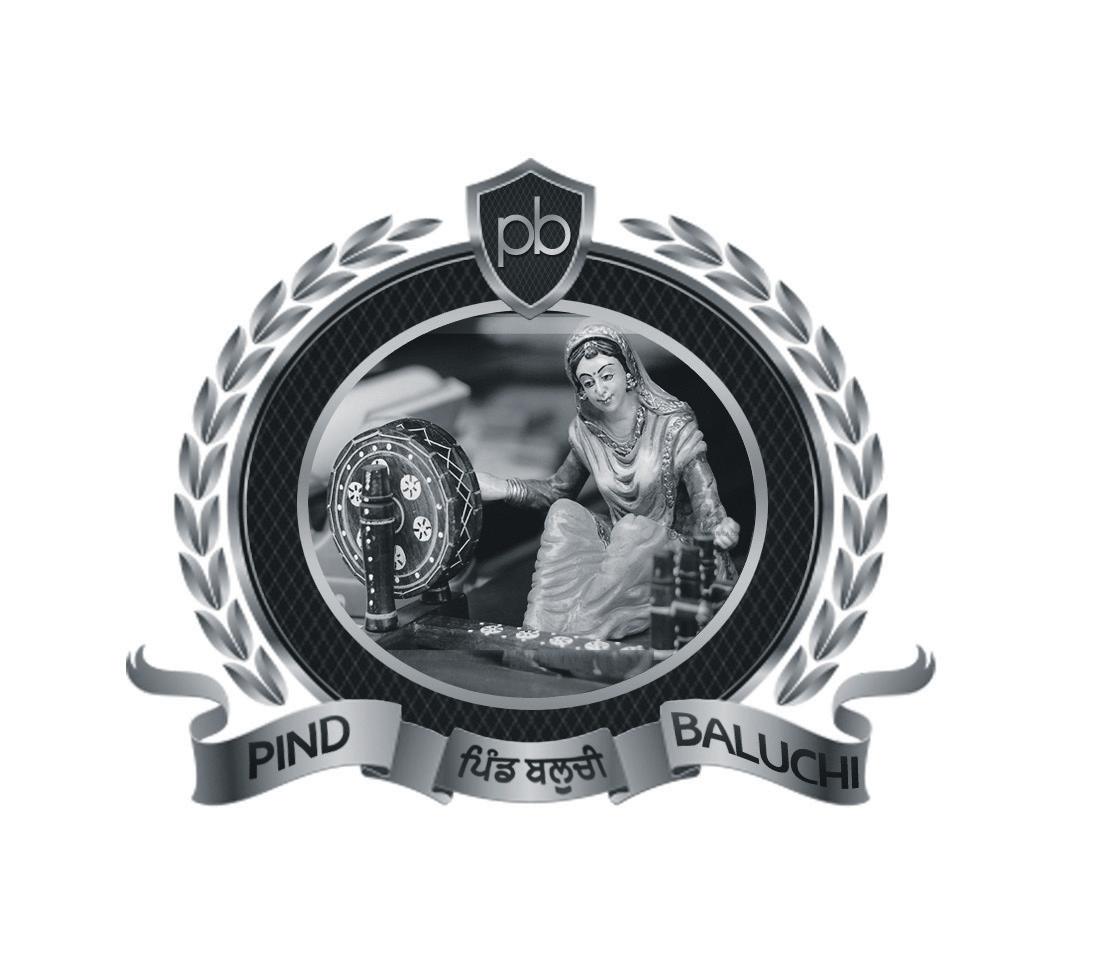
Nita has worked recently as a Consultant in Obstetrics and Gynaecology at Gippsland Healthcare Group. She has vast experience in Gynaecology and Obstetrics. She worked as obstetrician and Gynaecologist in various Hospital in QLD and Melbourne as well as at Overseas.
Nita gained her specialist Post Graduate degree in Obstetrics and Gynaecology in India and worked as a consultant in New Delhi for 4 yrs. After Moving to Australia she underwent further training to gain her FRANZCOG– Specialist Degree in Obstetrics and Gynaecology. She is fluent in Hindi, Punjabi and English.
She has started private practice at Melbourne Eastern & South Eastern private Hospital apart from Casey Superclinic and have a operative and delivery at Warragul hospital with consulting session at both Berwick, Pakenham.
After moving to Australia she underwent further training to include FRANZCOG and gained her specialist degree in Obstetrics and Gynaecology in 2010.
Nita has worked recently as a consultant at Warragul (W.G.Health) Hospital.
Nita has set up Private Practice in Dandenong with consulting sessions at both Pakenham & Warragul
Obstetrics
• Pre-pregnancy assessment & counselling
• Antenatal, pregnancy management,
• Confinement & Complications
• Management of recurrent pregnancy loss
• Vaginal birth after previous Caesarean delivery (VBAC), RPL & High Risk
• Caesarean delivery
Gynaecological
• Menopause; post-menopausal bleeding
• Vaginal prolapse & Fibroid
• Genital tract infections & CPP
• Abnormal Pap smear; colposcopy
• Pelvic pain & Endometriosis

• Infertility: Diagnosis & assisted treatment
• Family planning, permanent or reversible
• Contraception
Seeking groomS
Seeking well qualified match for very fair young looking Hindu lady, 54, veg, divorced, daughter living with her. He must be aged 49-55, non smoker with strong moral values. Contact lifepartner@hotmail. com.au or 0404043904.

Seeking suitable match (from Australia, never married) for Hindu girl, 34 years, Chartered Accountant (non-veg), living in Australia over 25 years, with eastern and western family values. Please email with all details on ganesh2011v@gmail.com
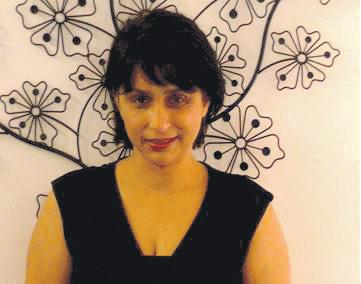
Well-settled Sikh family in Australia seeks good natured, educated, professional match from a cultured family for their good looking, slim and fair daughter. Completed medicine (M.B.B.S), currently doing internship. Please contact singh195950@yahoo.com
Seeking well-settled professional from Australia for a 25-year-old, 5’ 6” charming Punjabi Arora girl, working in Aust. Public Service. Been in Australia for 21years, family oriented, vegetarian, non smoker and non drinker, with a modern outlook. Email profile and recent photo to Sydney. matri87@gmail.com
Well-settled Hindu family seeks a mature, well settled, good natured, professional boy from a cultured family for our charming daughter, ‘79 born, 5’2”, IT professional (Masters IT). Caste no bar. Respond with photo sssvjp@hotmail.com
Seeking BriDeS
Seeking Hindu girl, preferably Gujarati, good family values, for my son, dob 7/8/75, divorced, no children, fair, 5’8”, vegetarian, down to earth, genuine, well-built, nonsmoker, light drinker, Australian citizen, tax consultant, lives with parents. Contact 0423 328 800 or sydau714@hotmail.com
Compatible match for 1975 born, clean shaven Sikh Khatri boy, 5’ 9”, two postgraduate degrees from India and recently finished Masters in I.T from Australia. Currently on temporary resident visa (with full work rights) and doing 3 months Internship at Optus Sydney. Living with elder brother (Australian citizen), and parents who are on 1 year Visitor visa. Girl should be tall, well educated, with pleasing personality and must be from Sikh background. Early marriage and serious proposals please. Contact Ph. 02 9476 4570 or Email: jas_ghai01@hotmail.com
Seeking a suitable match, with Indian values, for 27-year-old, 5’6”, Punjabi Khatri boy, Permanent Resident, permanent job, parents in Australia for visit. Please email sunaina_aqua1@yahoo.com or call 0421 959 861.
Well-settled Hindu family invites alliance for tall, handsome Australian citizen, 38/5’-10”, innocent divorcee. Excellent salary package, own house in Sydney. Seeking qualified, beautiful girl from cultured Hindu families well settled in Australia or India. Please send details with recent pictures to shaadi@live.com.au
48 MAY 2012
For All Correspondence and Appointments Please Contact: Silk Medical Suites Telephone: 9792-1191 or Fax: 9792-1180 Silk Medical Suites Unit 4, 118– 120 David Street, Dandenong , Vic 3175 Now ALSo CoNSuLTING IN: Eastcare Medical Centre, 1/125 Main Street, Pakenham Private Consulting Suites, Lansdborough St, West Gippsland Healthcare FEE STRuCTuRE Standard fees apply / Pensioners will be at a reduced fee / “No Gap” billing for Private Hospital Admissions OVERSEAS VISITORS/STUDENTS — upfront payments preferred
matRimonials www.pindbaluchi.com.au Booking And Enquiries 9704 7684 Call Pardaman Singh 0430 510 561 Private Function Room available Book your next function now 2 REBOUND COURT, NARREWARREN, VIC 3805 MELWAYS REF 110 D6
RESTAURANT Fully licensed and BYO wine only Open for Dinner - 6 nights Tues - Sun: 5pm - 10 pm • Mon - Dinner on public holidays only
Or Take Away www.indianlink.com.au
INDIAN
Dine-In
TAROT




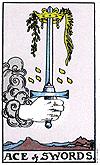


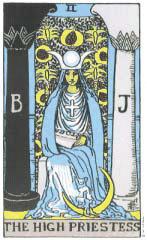




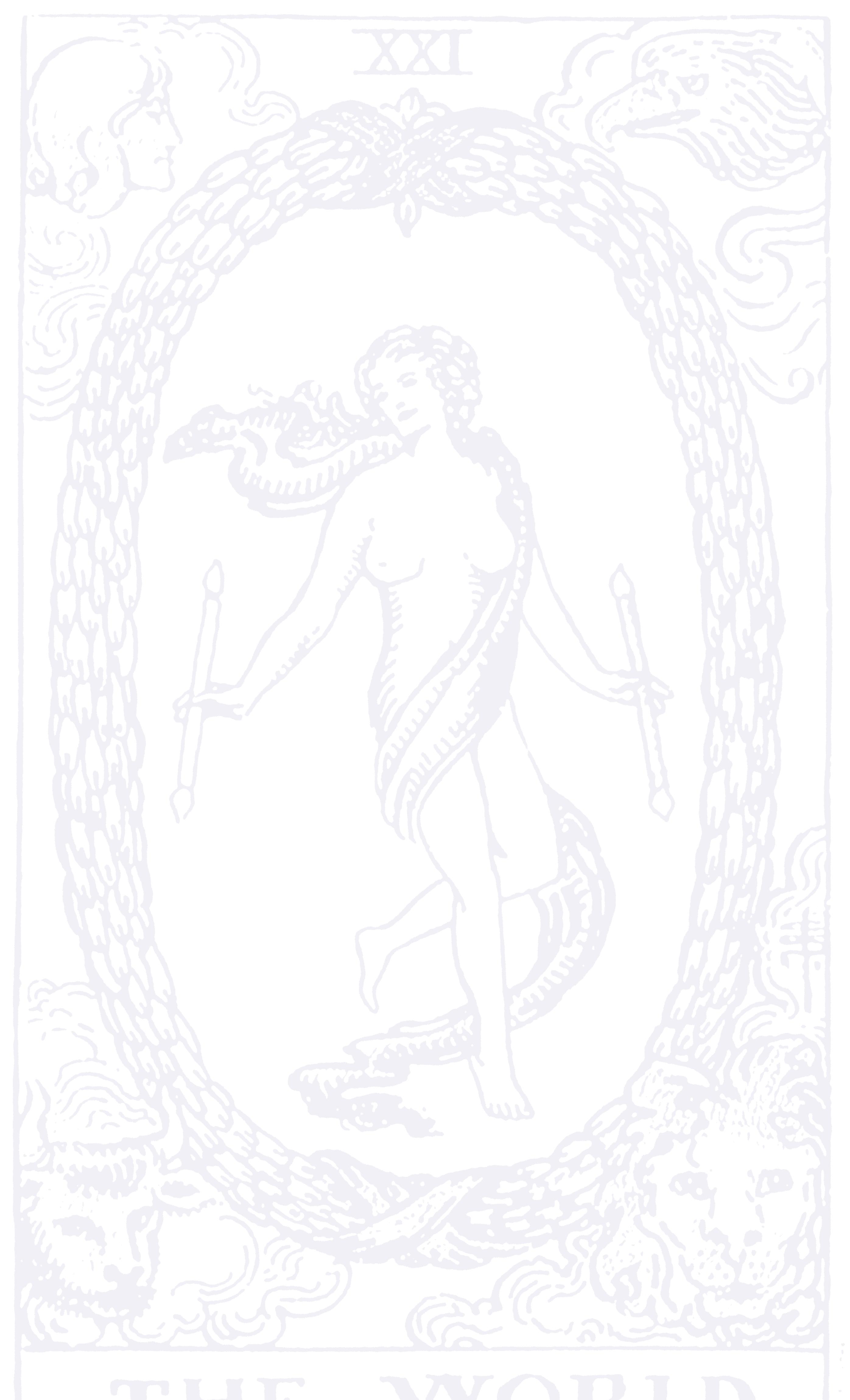
ArIes March 21 - April 19
You have a lot to deal with right now, and need to prioritise what to deal with first. You are burdened, both emotionally and professionally. You are feeling very upset and alone right now, and unsure of how to handle your lover’s demands. If single, someone who is playing hard to get. You are stressed so watch your health. Be positive, think that all is well and will work out for the best. There will be great demands on you for the next few weeks.

tAurus April 20 - May 20
Your health is poorly right now, and you may need alternative medication to boost up your immune system. You have been overworked and stressed, so take good care of yourself and your soul. Work is tense as changes could lead to redundancies and cut-backs, but they will not affect you. Emotionally you are reasonably peaceful, but also bored of yourcurrent circumstances and are thinking of what to do. Financially, tighten your purse strings and spend less!
GEMINI May 21 - June 20
You will be more spiritually aware of your surroundings and existence, with peace, meditation and a lot of thinking. You may think of moving to another country or city, for work or settling down. You need to decide if you want to be with your partner or not, to end the procrastination, but your decision will still leave you confused. Life is going well and financially you are secure; look at buying property for stability. Keep a tiger’s eye in your pocket.
CANCER June 21 - June 20
It’s time to start speaking up for what you want in life instead of sitting back while the world goes by. Emotionally you are looking for security and stability, and will make a commitment to a possible engagement or marriage. Watch your tongue, as you can get short tempered. Promotion and money are indicated in the future. Take care of health and follow a good exercise regime. Cut down fried and sugary foods. Enjoy fresh air and long walks which are good for your system.
Leo July 23 - Aug 22
Try gaining peace this month, as disagreements with family members have left you feeling tense and stressed out. Work is not great, and life is a drain. It is a time of change and you need a calm approach. Try deep breathing to prevent losing your cool. Emotionally you are feeling close to your partner, and may take a short break together. Financially you want to make more money, and your current job is going well. If looking for work, put in applications now.
VIRGo Aug 23 - Sep22
This is a time for inner soul searching. Look at what you want to do and where you want to be, and then change your direction accordingly. The current workflow or study pattern does not satisfy your cravings. Change in your environment indicates you could be travelling shortly. Love is on the cards with an attraction to someone at your office or place of study. A change of wardrobe, image and a makeover are indicated as you have been neglecting yourself lately.
PReDiCtionS FoR MAY 2012
By NANCy JADE ALTHEA www.nancysood.com
LIbrA Sep 23 - oct 22
This month is all about changes and work-related decisions. Be resourceful and strive to achieve at work, as you will have the opportunities. There will be interesting developments in your love life. Financially, look at investments and property through the year. Parents will cause some stress as they will want you to be more settled and focussed. It is a time of communication and loving feelings towards yourself and your close ones.
sCoRPIo oct 23 - nov 21
Fun-loving days are here, so take time out and really relax. Your work-home life balance has not been happy as you have been working too hard. Learn to relax and let things flow. Try not to be such a workaholic, which causes family problems. Lovers will be on edge, with many changes around. Children are in thoughts, either deciding to have a child or their future. Financially you are not saving, so be careful and put some money aside for rainy days.
sAGITTARIus nov 22 - Dec 21
This month sees the end of inner conflict and pessimism. With a major shift in attitude, you will feel a lot better. Loans or overdrafts may cause worry as you may have splurged on the house or your partner. Love is going through some difficult times, but understanding will grow towards the end of the month. Work is causing a little stress, but you will be given extra responsibility. Spend time outdoors, and stay close to water.
CAPRICoRN Dec 22 - Jan 19
You are going through a confusing and indecisive time. Move away from people who do not feature in your life. A new person entering your life in a relationship will give you support, love and respect, making you happier and content. Bury and forget the past, karma is in play and you will soon see a shift in attitude from those who have done you wrong. Work will pick up and financially you will grow and achieve. Take care of your health.
AquArIus Jan 20 - Feb 18
You will look back with regret on how you have handled certain situations. Work is busy, with pressure on to completejobs and take on new tasks and projects while new faces appear and others leave. Financially, treat yourself to a luxury item. You may purchase a new property in another state or country. Problems with digestion may occur, so take care. Love is cooling off and if married, you are feeling bored. Be careful of temptations.
PIsCEs Feb 19 - March 20
You want to march ahead with plans and ideas, and are bursting with energy and inspiration. Working with children is on the cards and new contacts may lead to new ventures. You may do charity work. Companies will support your ideas and will lead to strong ties. As you have been working hard and have proved yourself to superiors, promotion or more money is indicated. Socialise and have fun. In love, you may propose to your partner or get closer to them.
STARS FORETELL
the Buzz
fatboy Slim flattens ‘em!
Oh yeah, it certainly was a night to remember as British Disco Jockey (DJ) Norman Quentin Cook a.k.a. Fatboy Slim recently rocked an enthusiastic audience of lovers of electronic and house music. The venue in Gurgaon reverberated with the sound of music and the audience’s energy, as Fatboy gave it his all in his debut performance.
The show began with Indian DJs Arjun Vagale and Dualist Inquiry warming up the crowd with progressive house genres.
Midastouch Aamir does it again!
Aamir Khan has the legendary Midas touch – but instead of gold, everything he touches turns to success.
As with his debut TV show Satyamev Jataye, which aired recently drawing a huge and positive response from colleagues and fans alike. Disbelief, horror, tears, smiles - Aamir evoked the entire plethora of emotion among his rapt audience as he dealt with the sensitive topic of female foeticide and bias toward the male child. And what was amazing is that he didn’t preach!
Equipped with well-researched instances and case studies, Aamir’s one-and-a-half hour programme was telecast on Star Plus and Doordarshan simultaneously. The maiden episode highlighted how unethical medical practitioners are hand in glove with families wanting to kill the female unborn baby. he also dispelled the perception among people that female foeticide is practised by rural people or those living in small towns with the case of Mitu Khurana, a doctor who left home to save her twin daughters from death from her educated in-laws.
Three compelling stories of the three women interviewed brought tears to host Aamir’s eyes, as well as that of many in the audience.
According to the 2011 Census, the rate at which the unborn female child is killed amounts to killing off 10,00,000 girls a year.
Also according to the 2011 census, there are 914 girls for every 1,000 boys. Aamir brought into focus various dangers of female foeticide, including human trafficking, whereby Virendra Vidrohi, a social activist from Alwar Rajasthan, said thousands of women from poor families in eastern states are being “sold” in some places in Rajasthan due to a dearth of women.
Aamir also forcefully reminded the audience that the sex of the unborn child depends on the chromosome of the father.

“If we worship goddess Durga, why kill unborn girls,” he said. Aamir also brought on the show two journalists who carried out a sting operation against doctors involved in sex determination in Rajasthan and how the case is still dragging in various courts in Rajasthan. And Aamir’s made his point, as viewers ranging from filmmakers to clinical psychologists to professors – have been lavish in their praise for the show.
Satyamev Jayate is a gutsy, hard-hitting and sensible programme that strikes an emotional chord with the audience. And what’s amazing is that Aamir has shown the total picture in all its aspects. he has even talked about solutions in the show. well, once a perfectionist, always a perfectionist. For all the hard work he puts into making a show this good, Aamir is certainly well-deserving of the accolades. Keep up the good work!
Then Fatboy Slim entered to the sound of psychedelic radioactive beats in the background and started off his performance with Now you are going to die followed by I am in Delhi, an altered version of Chuckie
The artiste also presented late Michael Jackson’s classic number Billy Jean in a house avatar, while also doling out some hip-hop numbers to satisfy the varying musical appetite of the crowd.
The fans loved it, with the crowd dancing vigorously to every track. Looks like Fatboy’s got India groovin’ to his beats!
Jacqueline in the race again Actress Jacqueline Fernandez joins the bandwagon of Bollywood actresses who’re into action with a vengeance. After Sameera Reddy’s creditable performance in Tezz, Aishwarya Rai’s average one in Dhoom 2 and Priyanka Chopra’s stunts in Drona and Don, it seems like sexy stuntwomen are fast becoming an industry standard. Even
GUESS WHO
the sultry Katrina Kaif will be doing action scenes in Ek Tha Tiger and Dhoom 3. So now it’s Jacqueline in Race 2, and she’s been training hard for the action sequences while hoping that the effort pays off.
“I am working hard on the action for Race 2 and concentrating on putting all my time and effort into that,” said the 26-year-old actress who seems upbeat about the action sequences.
“I love action... so I am very excited. Actually it’s a role I have been waiting to do for a very long time. I am most excited about this character because I get to do so much,” she added.
In fact, Jacqueline and co-star Saif Ali Khan have been going through a gruelling routine for a particular action sequence, which includes a lot of stunts and back flips. They have been training since November last year for this particular sequence, so it had better be a good one. But I reckon that any scene with the sultry Jacqueline and sexy Saif in action together would be worth watching. what do you think?
Lata endorses Sachin’s decision
while the entire nation is still having its vociferous say about living cricketing legend Sachin Tendulkar’s nomination into the Rajya Sabha, India’s nightingale Lata Mangeshkar has added her voice to the melee. In her soft, lilting, stillmellifluous voice she says that two of her favourite personalities - actress Rekha and cricketer Sachin Tendulkar - would perform better than her.
“My tenure in the Rajya Sabha was anything but happy. I was reluctant to be inducted into parliament,” said Lata. “In fact, I pleaded with those who urged me into Rajya Sabha to let me off. Though I had the highest regard for (Bharatiya Janata Party leader) L.K. Advaniji and (former Prime Minister) Atal Bihari Vajpayeeji, I still do - I am not affiliated to any any political party. what did I know about politics? I’m sure Sachin knows more about politics than me,” she added.
Lataji is quick to point out that the ace-cricketer must have a game-plan for entering politics.
“I’m sure Sachin knows what he’s doing. he won’t be a novice in parliamentarian affairs the way I was,” she said.
he won the Best Newcomer Award in 2010, and will very shortly be seen sharing screen space with the Big B

Lataji shoots down the misgiving about Sachin’s oratorical skills in parliament. “ why are people presuming that he is only a master of cricket? Sachin is a widely-read, widely-travelled individual. And parliament needs people with an open and fresh approach to politics. with me it was different. I live only in the world of music,” she said.
The 82-year-old music legend hopes
50 MAY 2012 www.indianlink.com.au ENTERTAINMENT
(Find the answer
ABHILASHA SENGUPTA brings us up-to-date on what’s hot and happening in Bollywood
under Caption Contest)
A AMIR K HAN
?
Sachin would be given a chance to prove his abilities in the Rajya Sabha, and is convinced of his integrity. “I can vouch for Sachin’s integrity. I hope he makes a success of his tenure in Rajya Sabha. As for me, if I’m given a chance to return to parliament I’d firmly turn it down with folded hands. I wish Sachin all the best in parliament. he would need it,” she said, tonguein-cheek! So that’s another person convinced that Sachin will make a difference to Parliament! Good luck, Little Master!
Bollywood and the test of time whether it is rewinding back to the 1910s or fast forwarding into 2050, Bollywood filmmakers are going back and forth in time with films like Teri Meri Kahaani and Dangerous Ishq, whose stories span over decades.
It’s a trend that’s fast catching on in Bollywood’s chameleon-like vista of concept, but the filmmaker’s biggest challenge is in creating the right ambience and weaving a wellconnected story.
Take Kunal Kohli’s upcoming romantic offering Teri Meri Kahaani Kapoor and Priyanka Chopra. The movie is set in three time periods - 1910, 1960 and 2012, but each has its own flavour. Similarly, Vikram Bhatt’s a story which, somewhat optimistically, spans over 500 years. Though alleged to be based on the theme of reincarnation, the movie will see actors Rajniesh Duggal and Karisma Kapoor in varied looks as the story travels from one era to another.
Bhatt, who went back to the 15th century for Dangerous Ishq, says it took a good amount of team effort to shape up the film with the authenticity for each era kept intact.
“ we did a lot of research in terms of setting, costumes, dialect and colour palette. Otherwise, we could have lost the authenticity. So whether it was art direction, costumes, dialogues or colour...all departments did their individual research and worked as a team to perfect the look of the film,” said Bhatt.
In the recent past, the transition in the looks of characters and the ambience have been portrayed in films like Veer Zaara, Bachna Ae Haseeno, Actionn Replay, Love Aaj Kal, Mausam, 7 Khoon Maaf and Kohli, who had portrayed these changes in his hit 2004 love story Hum Tum, says more than the sets, costumes and research, it was important to focus on how the story holds over the time zones.
“It’s very important that the story holds over time zones. And how do I overcome the challenge of covering different time zones in a film? well I write a good story,” he quipped.

Kohli admits that reflects his perception of the 1960s
and his fantasy about the 1910 period.
“Most of my research for the 1960s era came from my passion for films. I have watched a lot of Shammi Kapoor and Raj Kapoor films and enjoyed watching them. So the setting came naturally to me. Capturing the 1910 period was complete fantasy for me,” he revealed.
“But unlike the way many filmmakers show the preindependence period with -clad individuals, I wanted to show it with some fun. I’m sure people had fun back then and fell in love; so, that’s the aspect I have tried to capture. In the 2012 era, I wanted to show a contemporary take on relationships and how love is taken forward through SMS and BBM,” he said.
JACqUELINEfERNANDES

Filmmakers, who chose to deal with the subject of reincarnation in movies Madhumati, Prem, Milan, Kudrat, Karan and Om Shanti , were also posed with the challenge of showcasing different time zones.

Bhatt insisted that the idea of going back and forth in time is not distracting for the hether there are three eras or five eras in a story... one film has one story, and that shouldn’t be disjointed,” he added. we can hope to see a whole new genre of movies spanning centuries soon, so watch this space for news of their releases!
No recession in this industry, luckily!
Believe it or not, our newest up and coming actress actually trained in London to become an investment banker. Parineeti Chopra claims she grew up wanting to be a banker. She studied in Manchester Business School and then went to London looking for work. But the recession hit in 2009 and it wasn’t easy, so she got back home. But luckily her hugely successful cousin Priyanka’s industry was suffering no such recession, and the plucky Parineeti decided to try her luck in the film business – in the finance side, of course!
“I worked with actors at very close quarters and my respect for the profession increased. I loved what actors used to do and I felt like I could do this, and I could do this well,” she
ell, she impressed in her first off-beat role in Ladies Vs Ricky Behl, and her first solo film Ishaqzaade (opposite Boney Kapoor’s son Arjun) hits theatres shortly.
At least there’s no doubt she’ll know how to handle that pay packet….
What’s the chitchat between Kareena and Priyanka?
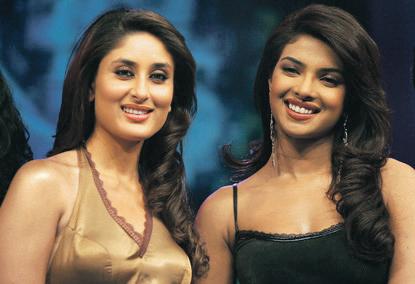
Kareena (to herself): I think I can look gracious beside her – I’m the bigger star!


Priyanka (to herself): I think I can look gracious beside her – I’m the bigger star!
Ravinath Pillai Trivandrum India
Ravi wins a free one-year subscription to Indian Link newspaper
MAY 2012 51 INDIAN LINK Last issue Caption Contest winning entry CAPTION CONTEST Answer to GUESS WHO? Rana Daggubati What’s the chitchat between parents-to-be Shilpa Shetty and Raj Kundra? Send in your responses to info@indianlink.com.au and win a surprise prize
MANGESHKAR
LATA
fATBOY SLIM
KARISMA KAPOOR
Cine Talk
A sticky subject, but a fertile piece of work
STARRING:
DIRECTED
When was the last time you saw a Bollywood comedy that made you chuckle and smile for two hours? when was the last time you saw a funny film that you wished wouldn’t end? when was the last time you saw a film where every actor in a big or small role simply sparkled on screen?
Vicky Donor is original and thoroughly engaging. how good it feels to watch a director pick up a pertinent issue and convert it into a perky precocious and endearing rom-com which is less rom and, ahem, a whole lot of cum.
Indeed Vicky Donor is suffused with delectable plus points, not the least of them being debutant Ayushmann Khurana who seems to be born to play Vicky the…er donor.
Ayushmann - God bless his spontaneity - has formidable competition in the acting department from Kamlesh Gill and Dolly Ahluwalia who play his grandmother and mother, and from the redoubtable
Anu Kapoor who as the sperm doctor, adds so much to his role and to the film you wonder why he isn’t seen more often in our films.
Each character is written with a keenness for details that go a long way in giving them a life beyond the camera
Delhi, done to death in film after film, re-awakens in Vicky Donor. Kamaljeet Negi’s cinematography makes no overt attempt to explore the city through the topography. Sircar’s splendid direction takes us into the heart of Delhi. The people, their homes and specially their spoken language come alive in ways that cinema has ceased to
offer in recent times.
I’d give the film the thumbs-up for the sheer exuberance, joy and conversational authenticity expressed in the spoken words. writer Juhi Chaturvedi is a prize find. And cherish this film’s ability to turn the subject of sperm donation into a joyous celebration of life. There are no dull moments in the narration. No character walks by in Sircar’s Delhi just for the heck of it. There are no incidental characters. Even the guy on the road who calls out the leading lady’s name on Vicky’s behalf is there because he belongs to the film’s perfect-fitted jigsaw design depicting domesticity and adversity in the competitive city.
Never in living memory have I seen a film where every character comes alive as an individual. If Dr Malpani (Anu Kapoor) is quite a character, so is his assistant Chaman (Bupesh Pandya) and his nurse Lata (K.V Rajni). If Ayushman’s Vicky is a scene-stealer, so is his romantic lead, the lovely Yami Gautam who as an independent working girl from a Bengali family brings a disarming grace to her character.
Vicky Donor is a precious and important work of art. It negotiates an unusual theme with the least amount of fuss and the maximum warmth and vigour. The scenes are woven with seamless serenity into
heartbreaking moment where Ayushmann holds his sleeping mother’s hand defines the undercurrent of somberness that life in Delhi constantly secretes.
Scratch the surface, and the pain under the bravura display of flamboyance and gaiety comes to the surface.
Vicky Donor gets that urbane mix of the light-hearted jaunty mood at the top and the agony beneath, with pitch-perfect accuracy. The very act of attempting a film on a sticky subject like sperm donation suggests a dry staccato treatment. Pulling away from the pitfalls of pontification and
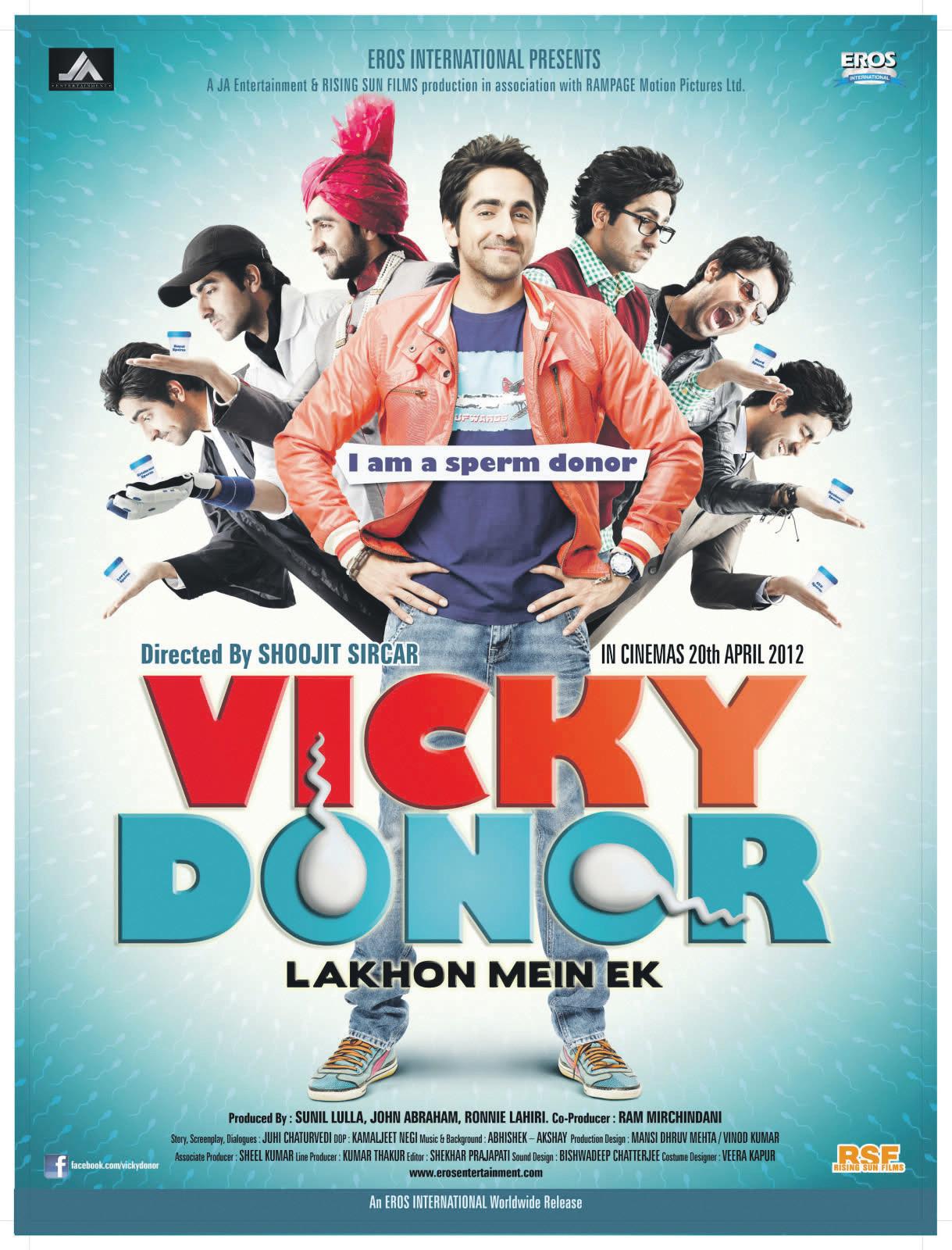
self-importance, Vicky Donor simply takes us on a carefree joyride where the blend of pain and pleasure is never forced into the narrative. It just happens.
In a film industry saturated with slapstick double-meaning comedy, Shoojit Sircar has conceived a comedy on sex which is a not a sex comedy. No small achievement this.
Large-hearted and generously endowed with moments that you take away with you from the film even as John Abraham comes on screen for an irrelevant song and dance item, Vicky Donor is the surprise entertainer
of the year. It is the warmest, funniest most sensible and sparkling comedy in a very long time. In Shoojit Sircar’s vision every single actor shines with a glorious naturalness.
Ayushmann is effortlessly the discovery of the year.
As for the film, in Anu Kapoor’s words, there are impatient sperms, angry sperms, stupid sperms. Seen in those terms this film is quite a fertile piece of work which says a lot more about life than we expect from it.
Subhash
K. Jha
52 MAY 2012 www.indianlink.com.au
ENTERTAINMENT
FILM: Vicky Donor
Ayushmann Khurana, Yami Gautam, Anu Kapoor
BY: Shoojit Sircar
He captured the magic of Aishwarya Rai when she got back home after winning the Miss World crown in 1994.

Now Ap GuRuSWAMy captures beautiful moments in Melbourne’s Indian community! In his 40-year career experience as a professional photographer in India Guruswamy covered news, corporate events, large scale events and celebrities.
For stunning images of your next big event, call Guruswamy on 0406 820 413.
CHEAPEST AIRfARES TO INDIA, PAKISTAN, SRI LANKA, BANGLADESH, NEPAL, AfGHANISTAN.
Fly December First Week just $1199*
Kamlesh Patel: 0412 302306

Abdullah: 0430 553246
Ph: (03) 9793 0095
Fax: (03) 9793 0092
India $950*
Colombo $950*
Dhaka $960*
Pakistan $995* (*incl. taxes, 30kg luggage)
Send Money To India, Pakistan, Srilanka, Bangladesh, Afghanistan. Guaranteed Best Rates** **Conditions Apply
Email: k.patel@bookandfly.com.au, abdullah@bookandfly.com.au


ADD: 20 Clow Street, Dandenong. VIC 3175

MAY 2012 53 INDIAN LINK
The GFC gathering
By AVIJIT SARKAR

Many social breakfasts, lunches and dinners have come and gone, like the months and years. Infants have started walking and three prime ministers have ascended the Australian throne. But certain topics of discussion never seem to change. So profound is the situation, that these days my old eager anticipation has been replaced with a new predicable expectation at most of the eating orgies.
At social gatherings, other than the usual suspects grazing voraciously on the calories, I usually foresee the customary “heated” topics to emerge. Most occasions like Diwali, Holi and Christmas not only bring forth the spirit of festivities enhanced by strong spirits, but also expected idiosyncratic behavior from unexpected quarters.

The most popular topic that has gained immortality thanks to the American fat cats is the ‘global financial crisis’ or GFC, as the regulars call it. This theme has the commonality of an alley cat at social gatherings, and to me, it is the ‘inevitable’ GFC forum.
The ‘G’ word is dropped at every single gathering and I have already met a few local Warren Buffets heralding the advent of non-festivities at festive occasions. Strange as it sounds, I am often impressed because these newborn Warrens seem to know more about the global economic weather than the original Buffet! Before the economic meltdown, the only ‘Buffet’ I knew was culinary.
I have made a study of the essential foundations of this undying subject.
To start with, every person has an expert opinion and after a couple of tight serves of whiskey, some will even table solutions for the entire GFC. Past facts and figures will emerge with the deepfried entrees, doom and gloom will be served with the elegant and heart-warming mains, and the inevitable final solutions will
be laid out together with a vast array of colourful caloric desserts.
Now I tend to first settle down with a glass of white and let the warmth hit me, brought on not by global warming or the wine, but by the discussions around me. Pretending interest, I pull my chair closer to one of the more garrulous groups and find the usual suspects.
Like Mr. Doom, who will always be at the forefront. “Every person here is doomed… finished,” he will lament, while Mr. Gloom sitting next to him will nod wisely. The GFC always varies between two perennial groups at these occasions – the male and the female (and I am so glad that we don’t have a third group). However, the objective and perspective of the discussions within these two groups will be vastly different.
The females will use this moment to crucify their partners.
“Ajee, woh sab kuchh khokar baithe hain…” (Oh, he has lost everything…)
“Arey jaane do, pucho to kehte bhi nahin hain ki kitna gayaa…” (Forget it! He won’t even tell me how much he has lost)
“Han Jee, mainay to pehele se kaha thaa ki jaane do ye share vair…”
(Yes, I had forewarned him about these shares…)
The males on the other hand will use this as a platform to firstly, display a complete knowledge of world economics – past, present and future; secondly, duck away from the wives (their own, of course); and finally, fantasize about assets (of the monetary kind, of course!) that they wish they had.
Next, comments will be thrown into the air by Mr. Optimist who will say, “Lakhon chale gaye… par koyee baat nahi”. (I have lost millions, but it does not matter.)
Followed by Mr. Fantasizing Optimist, “Lakhon chale gaye… par koyee baat nahi. Karodo banaa lenge!” (I’ve lost millions but it does not matter – will make ten fold again!)
Mr. Buck Passer will comment, “Pataa nahi kyun itney ghar le liye maine! Meri missus ki vajah se ye saara kaam bigad gaya”. (I don’t why I invested so much money in properties, it’s entirely my wife’s fault!)
Mr. Curable Pessimist will air his view, “Iska ab koyee solution nahi raha. Aage ki pidhiyan iskaa dukh jhelenge”. (Now there is no solution, but future generations will pay for this.)
Followed by Mr. Incurable Pessimist who will say, “Kahin aisa
“Lakhon chale gaye… par koyee baat nahi. Karodo banaa lenge!” (I’ve lost millions but it does not matter –will make ten fold again!)
na ho ki sub kuch khokar ab desh vapas jaana pade”. (Hope we don’t come to a state where we lose everything and need to go back to our country of origin).
Frankly, it often needs an incident or an accident to stop this flow of gibberish. Like at the last dinner when the hostess came rushing out of the kitchen screaming, “My tenderloins are burnt!”, which brought conversation to an abrupt halt.
Past facts and figures will emerge with the deep-fried entrees, doom and gloom will be served with the elegant and heartwarming mains, and the inevitable final solutions will be laid out together with a vast array of colourful caloric desserts.
Some who understood that the beef tenderloins have been overcooked sympathized with the hostess, but the other slower ones who had split ‘tenderloins’ into two words, looked down in embarrassment and sympathized quietly with the host.
But although these outbursts are meaningful in halting further comments about the GFC, they could start up the next expected channel of conversation – either cricket or Anna Hazare. And this scares me. Not the topics, but the ensuing boredom. Maybe Bertrand Russell was spot on when he said, “Boredom is... a vital problem for the moralist, since half the sins of mankind are caused by the fear of it.”
I love the warm, gooey, melting chocolate feeling the endings give me, and I love swooning over the handsome, yet sweet and sensitive heroes.
But more on that torture later….
54 MAY 2012 www.indianlink.com.au
BACKC h AT
Every social meet these days has the added value of unexciting topics of conversation, with the same uninspired views being aired by the same predictable characters
“For men may come and men may go But some topics go on forever”

MAY 2012 55 INDIAN LINK

56 MAY 2012 www.indianlink.com.au
































































 Leanne Woodward
Leanne Woodward





























































































 By CHITRA SUDARSHAN
By CHITRA SUDARSHAN















 By PETRA O’NEILL
By PETRA O’NEILL
























































